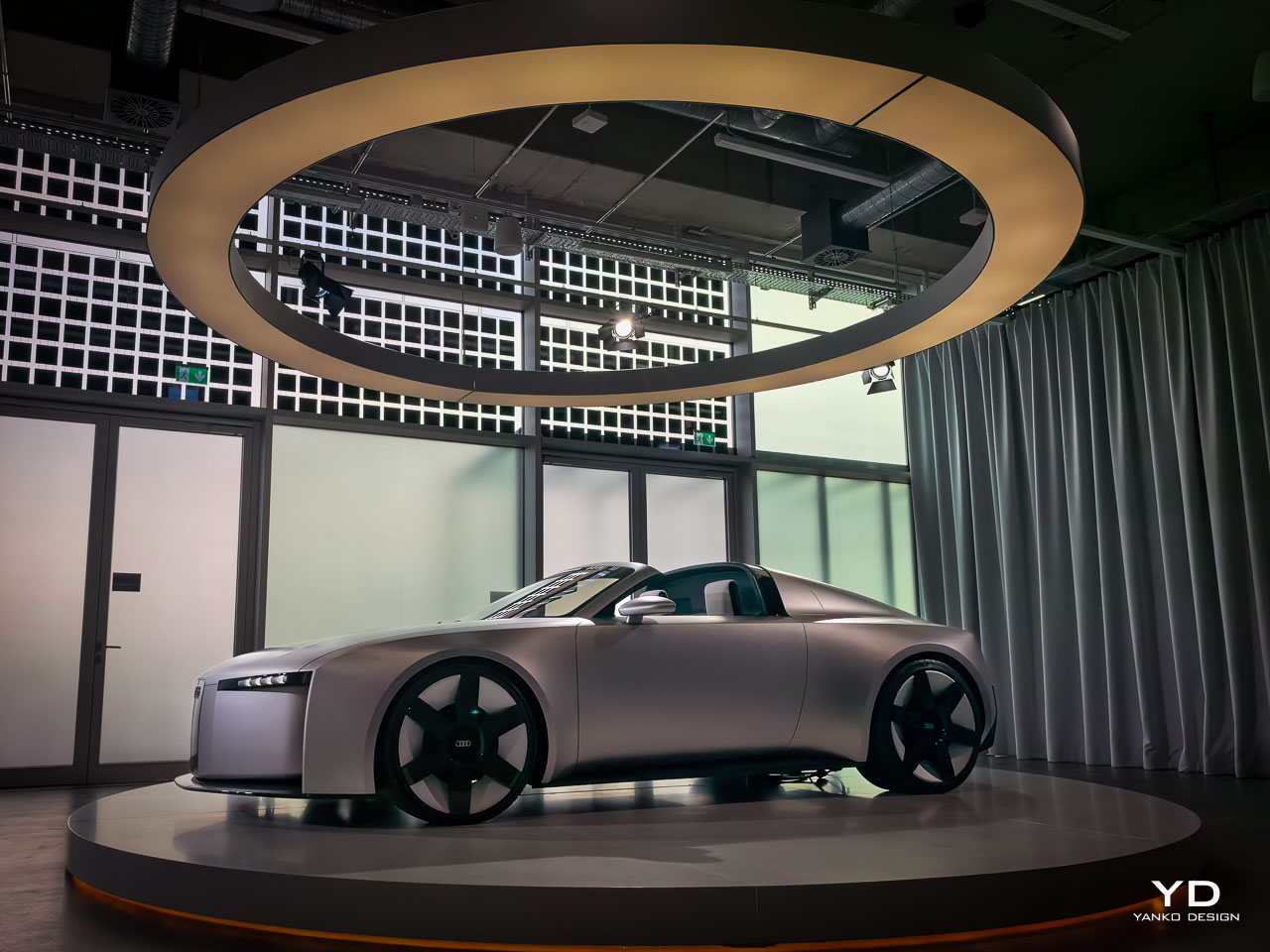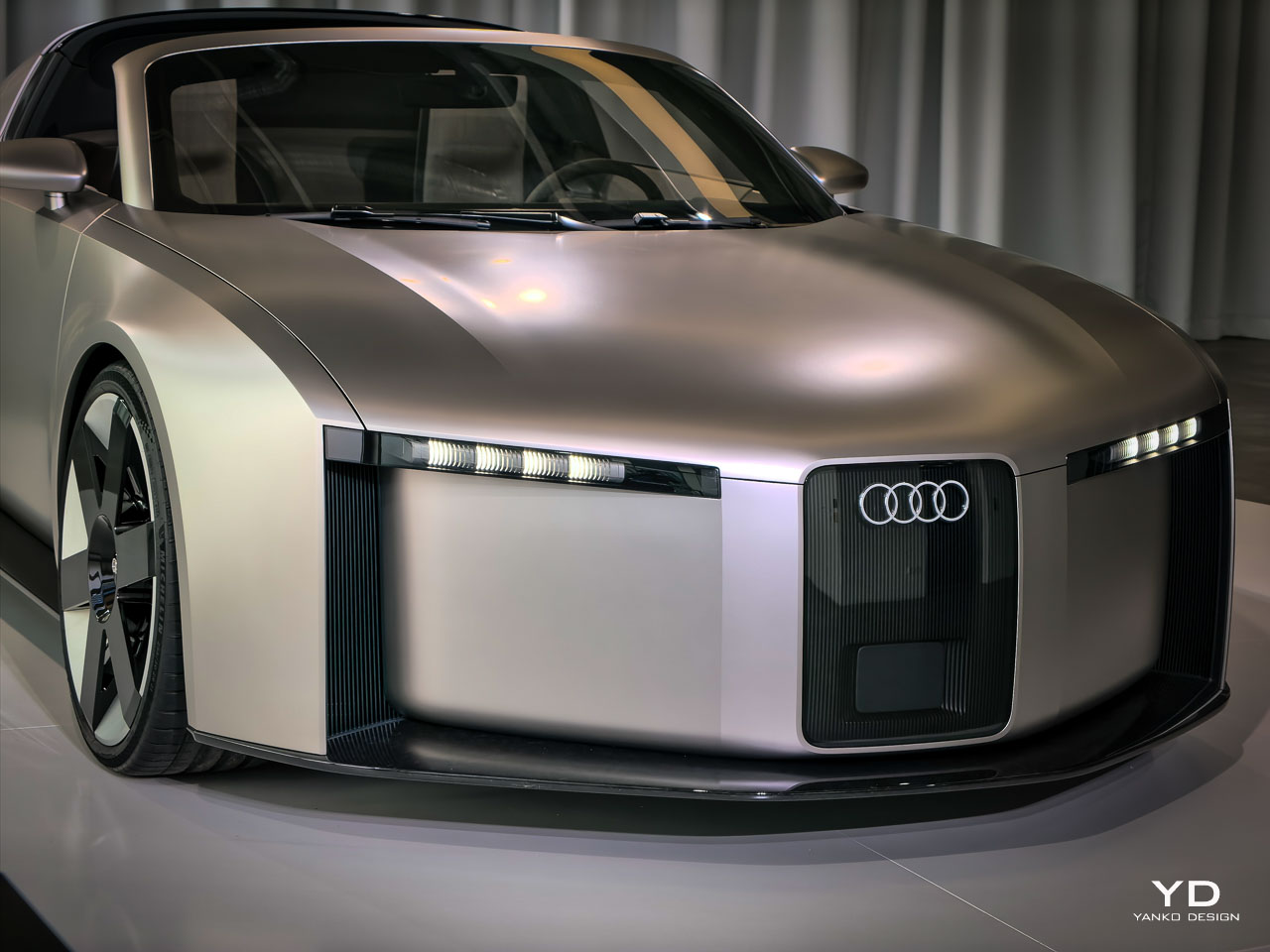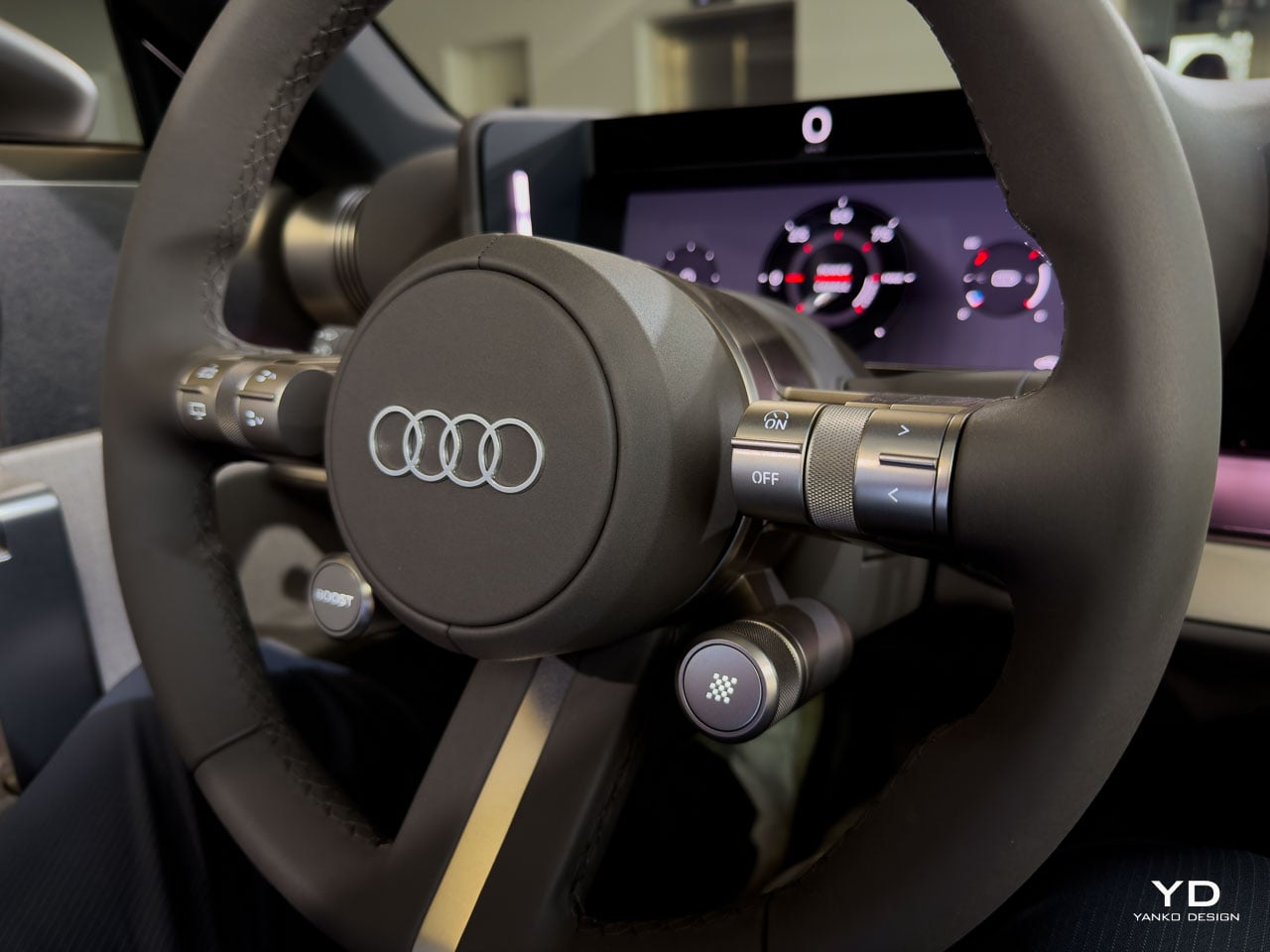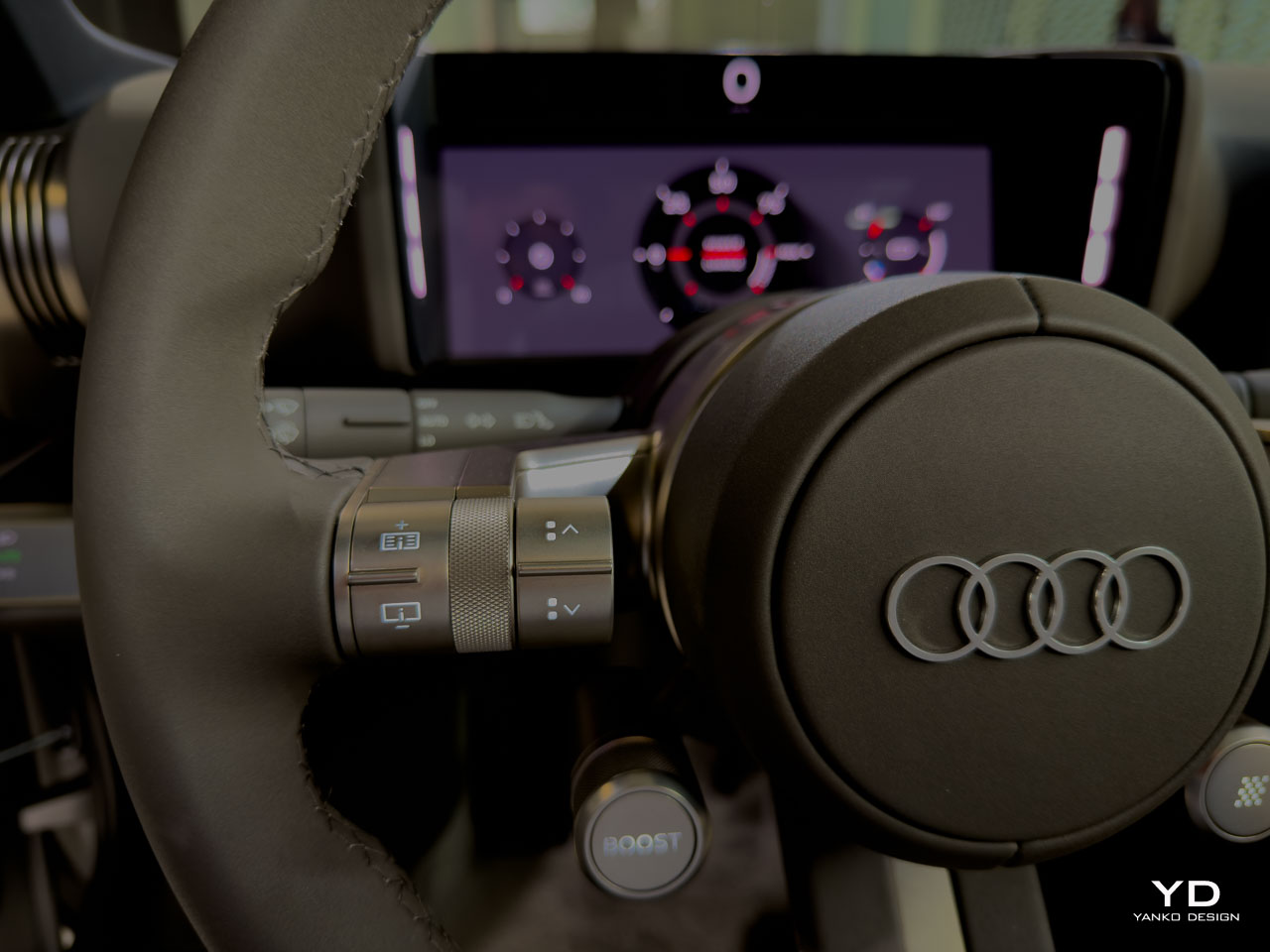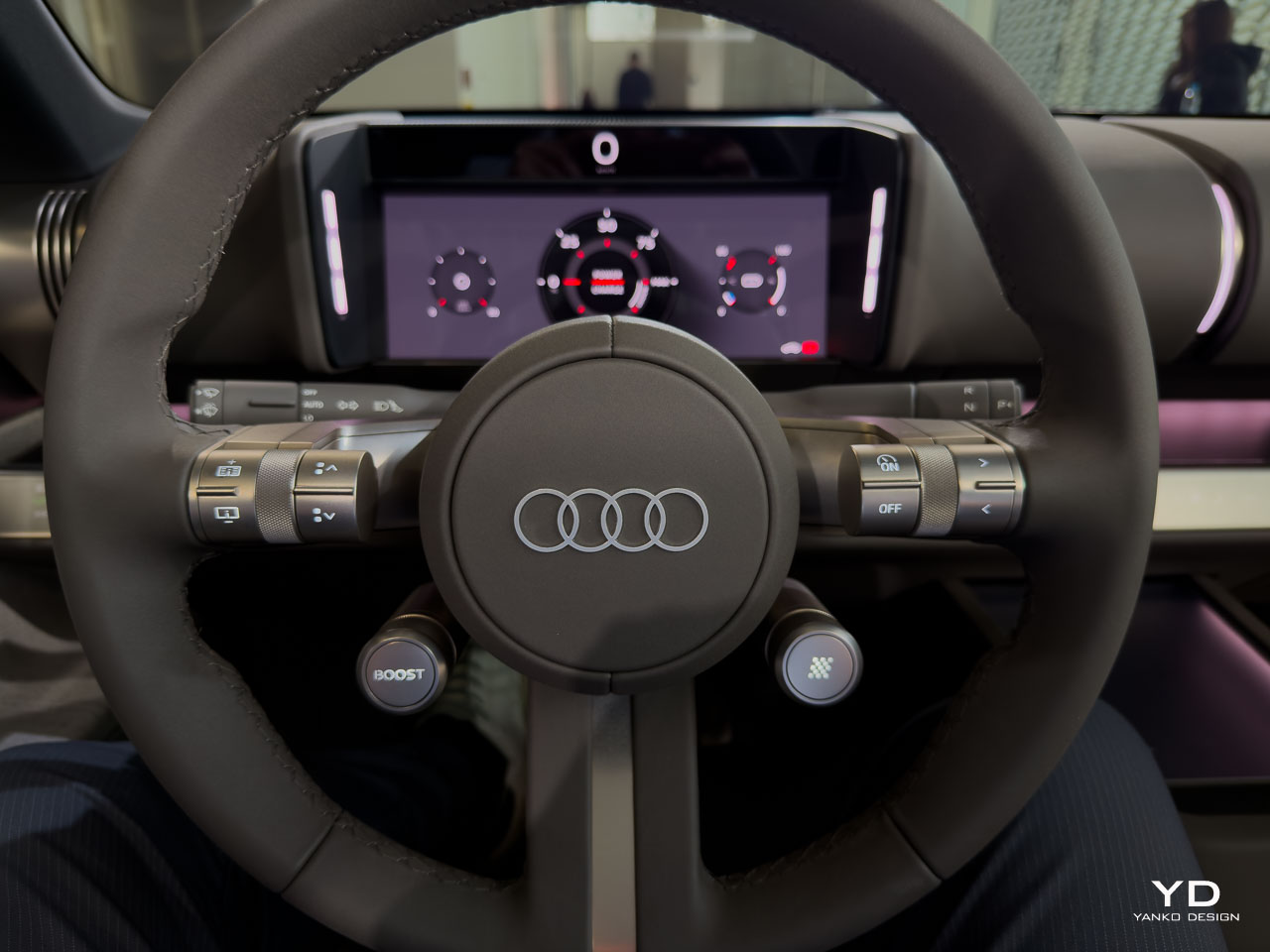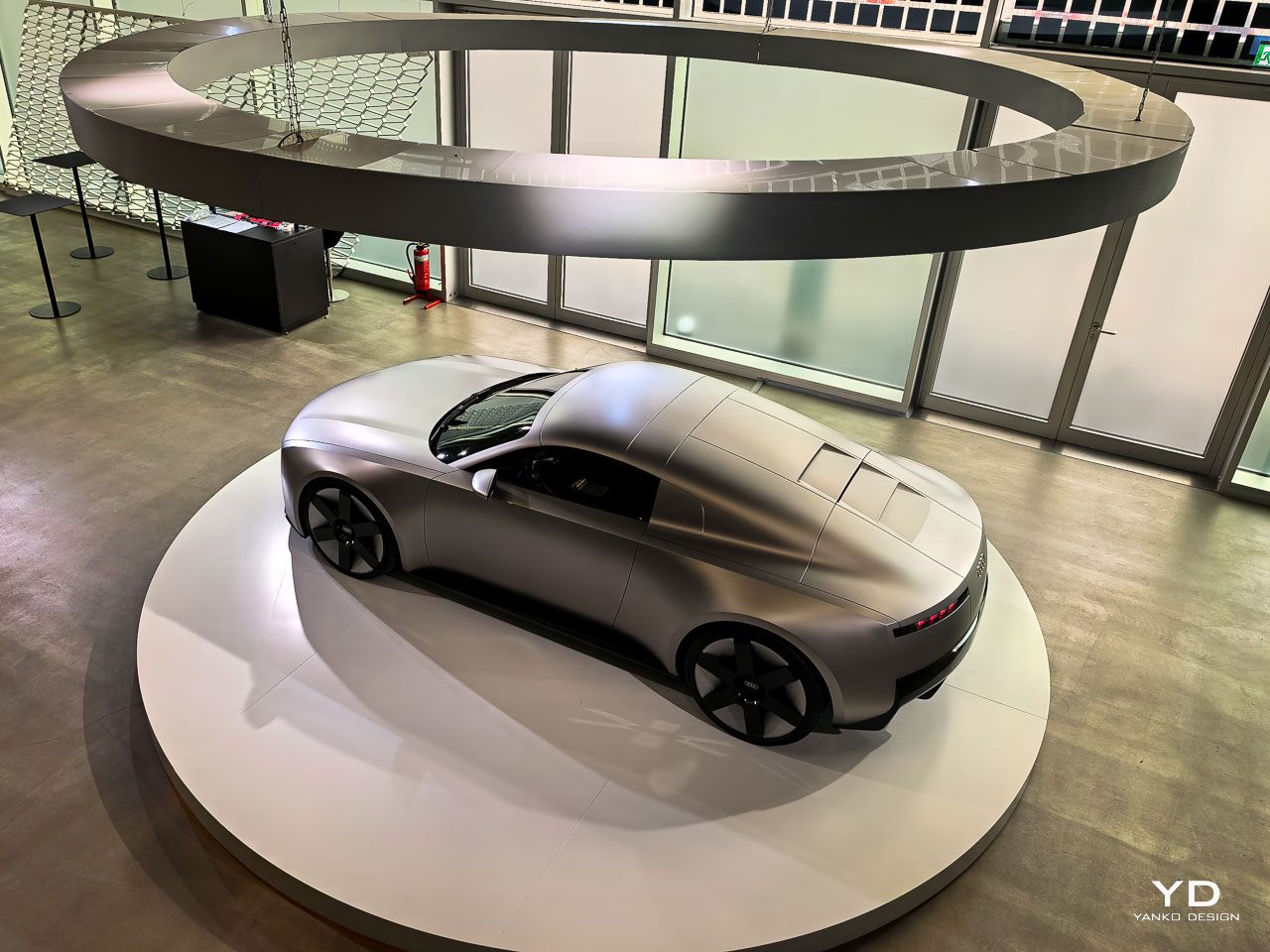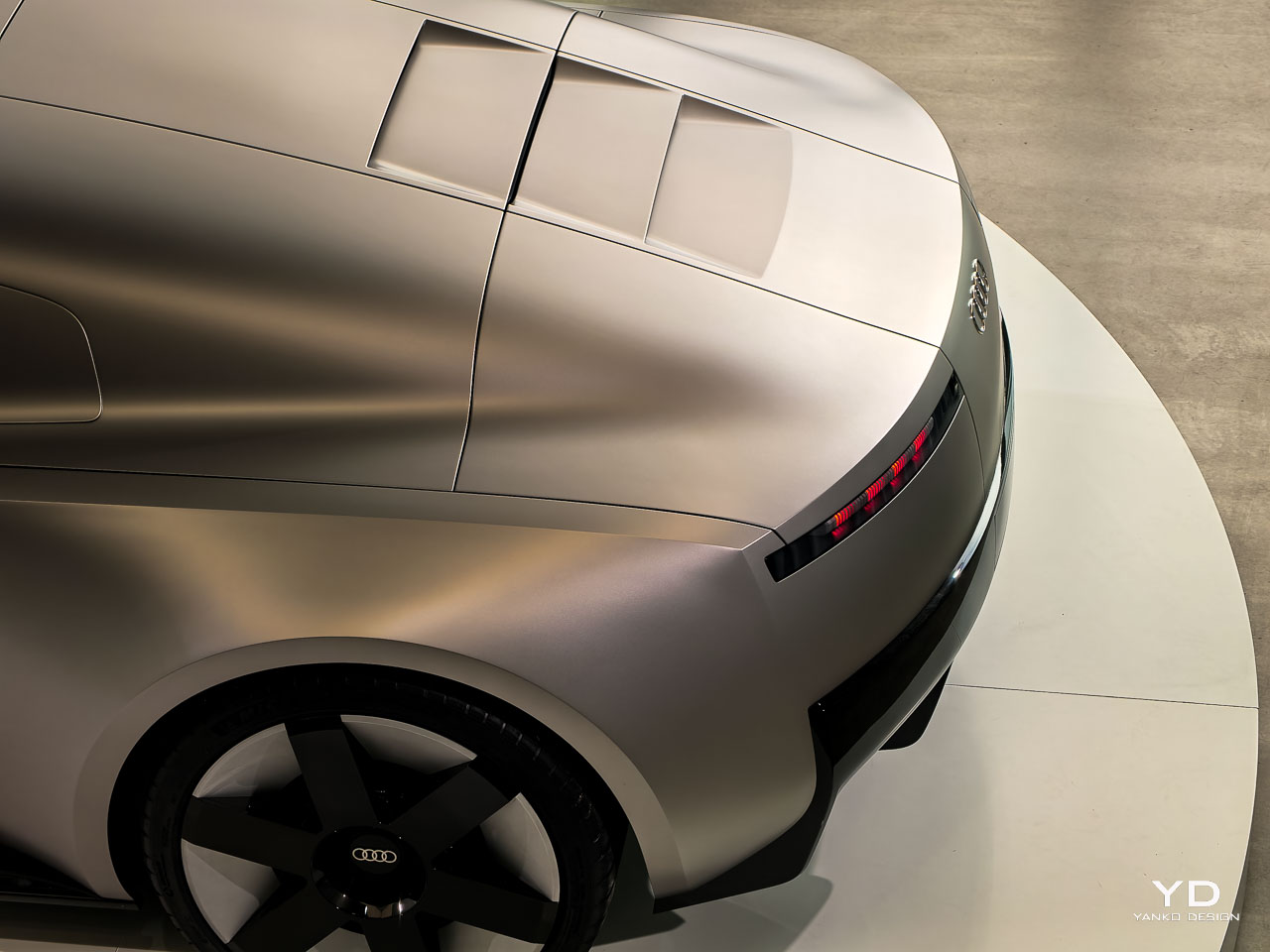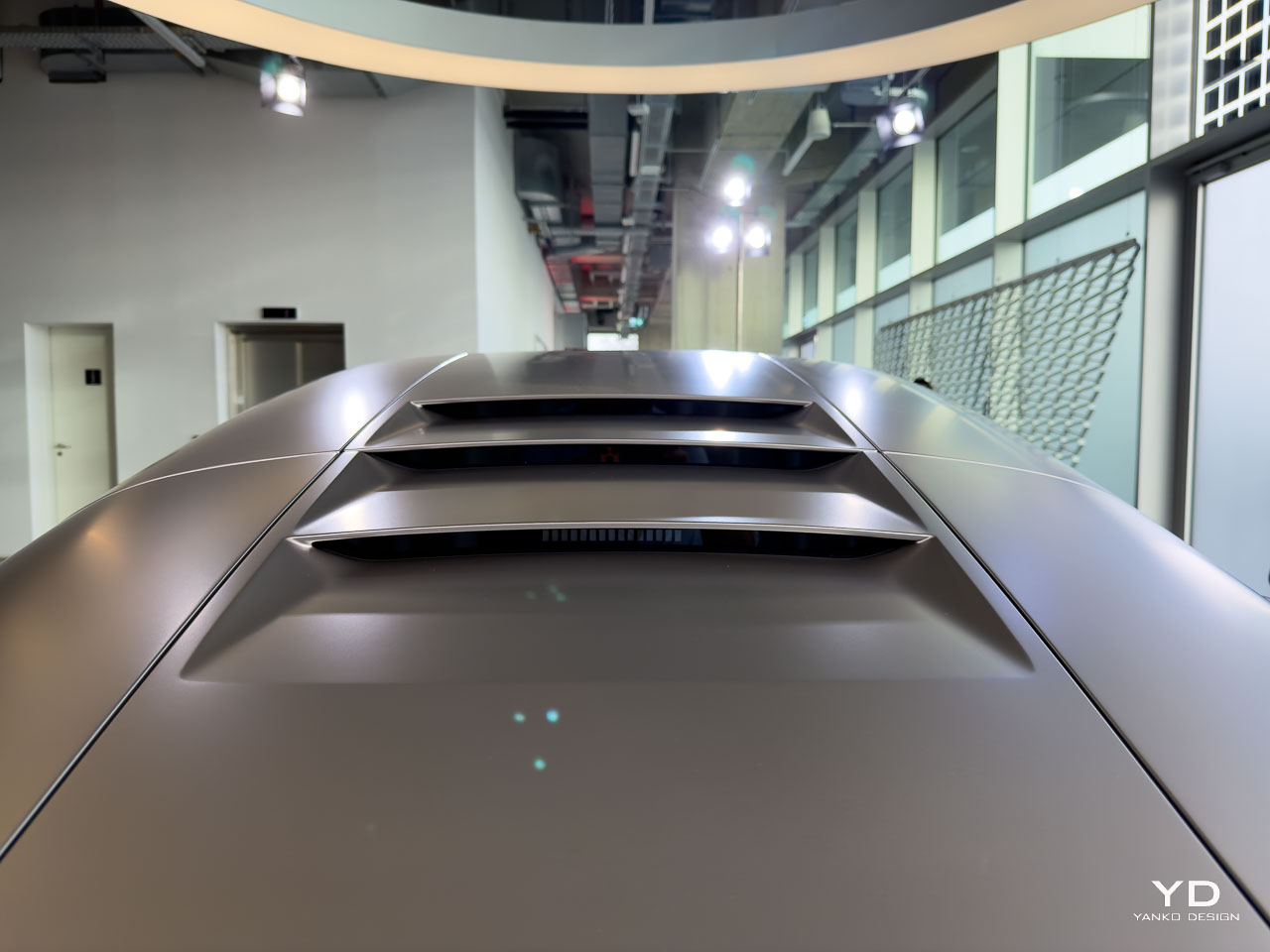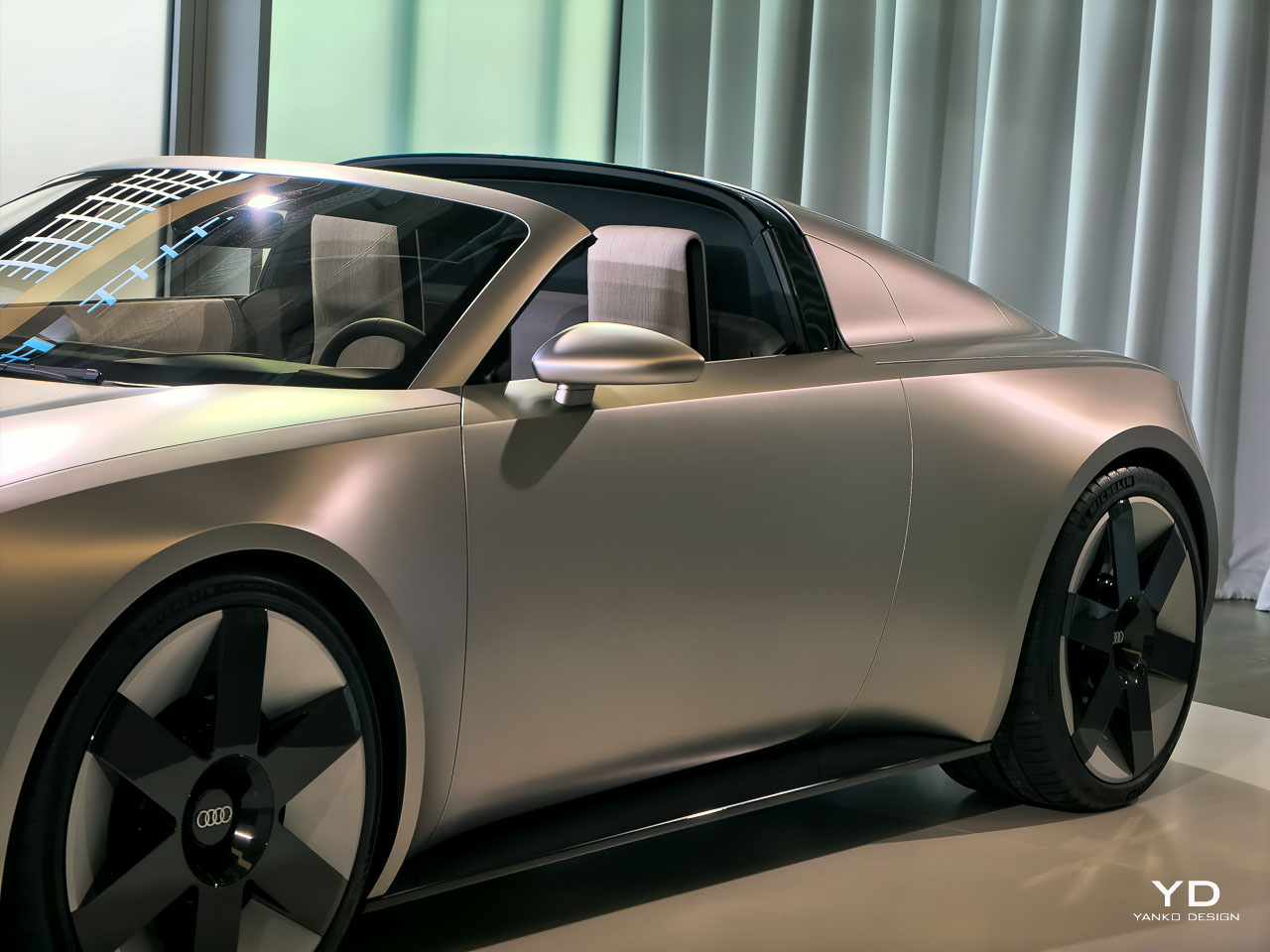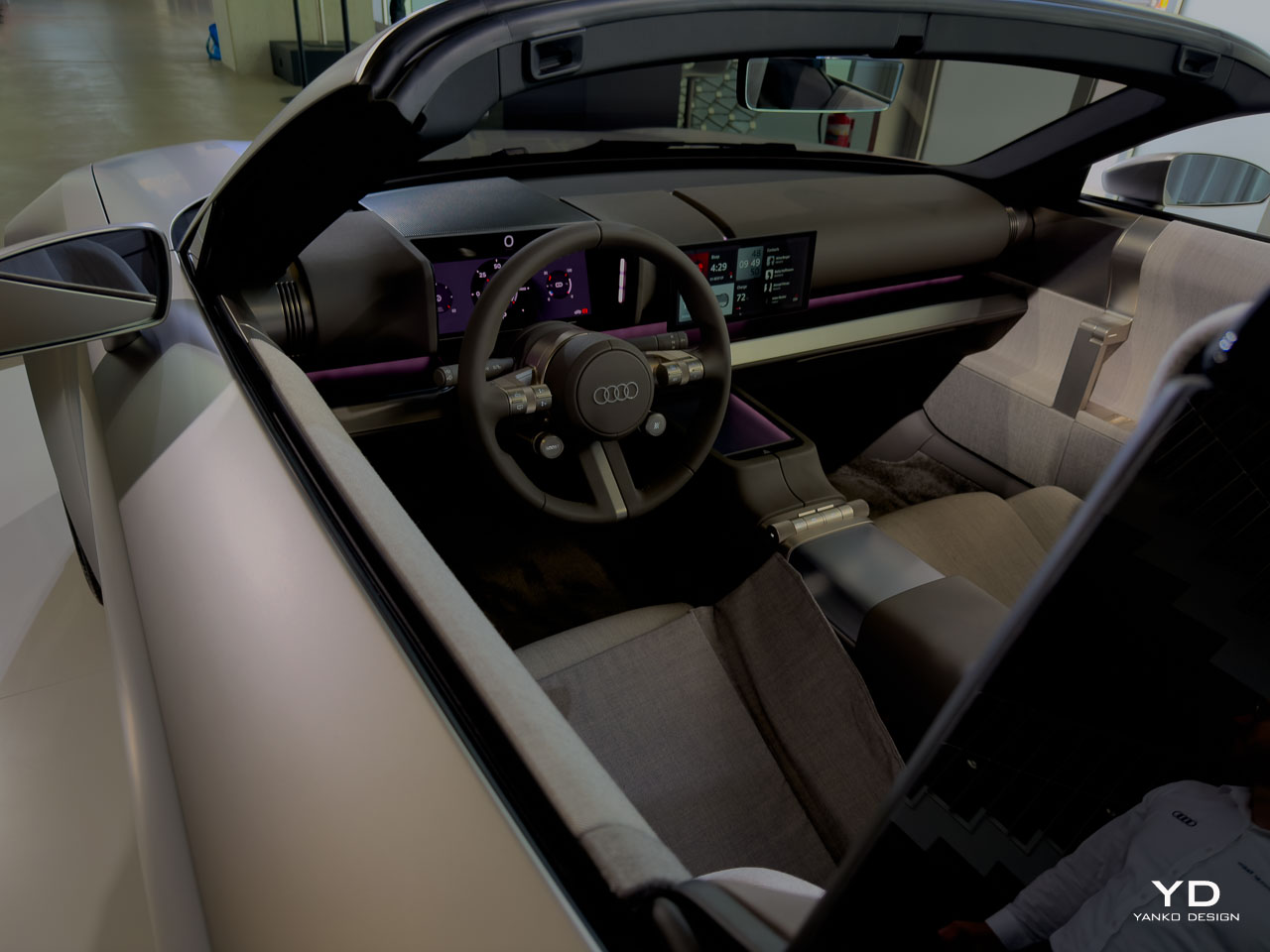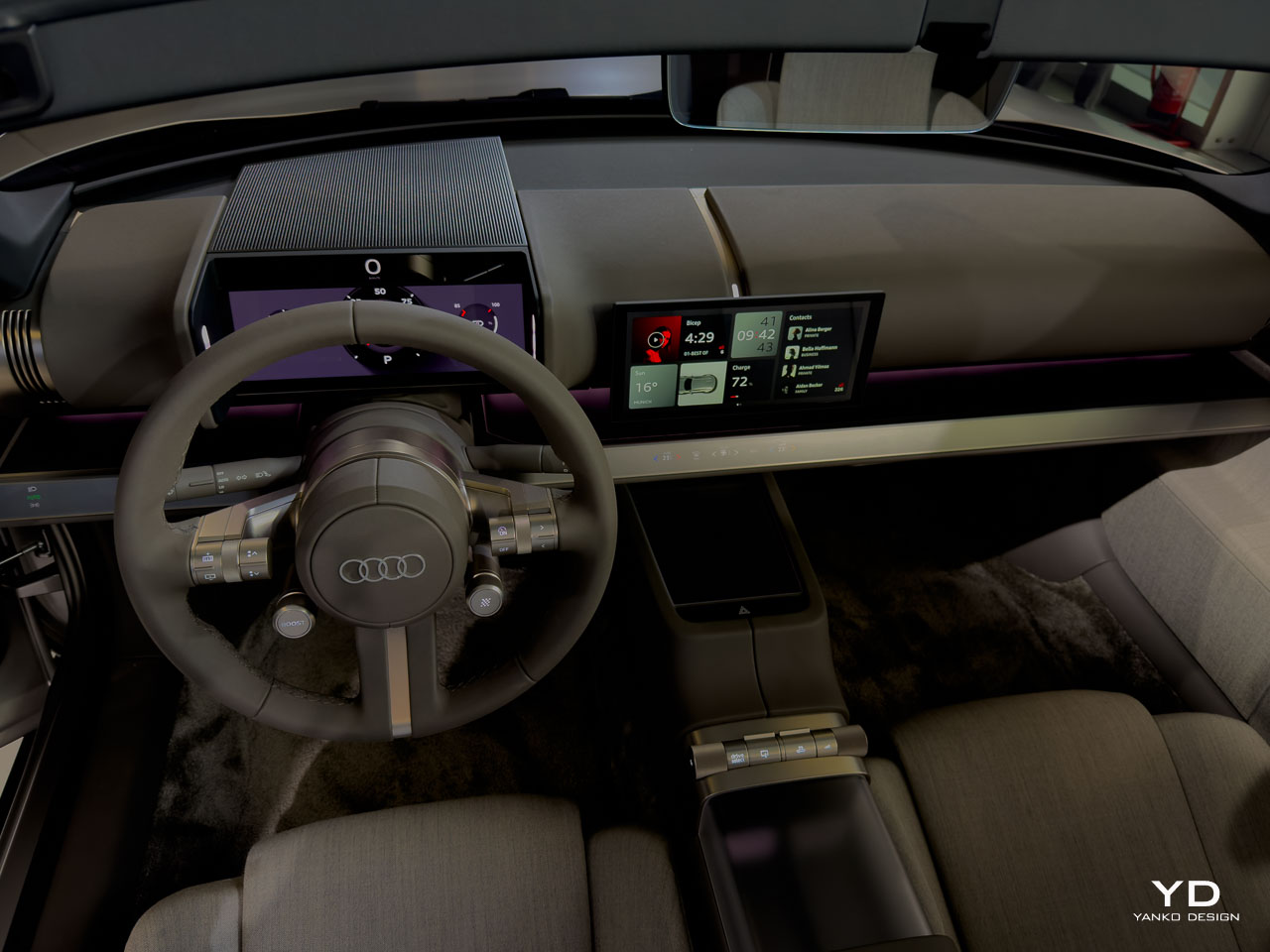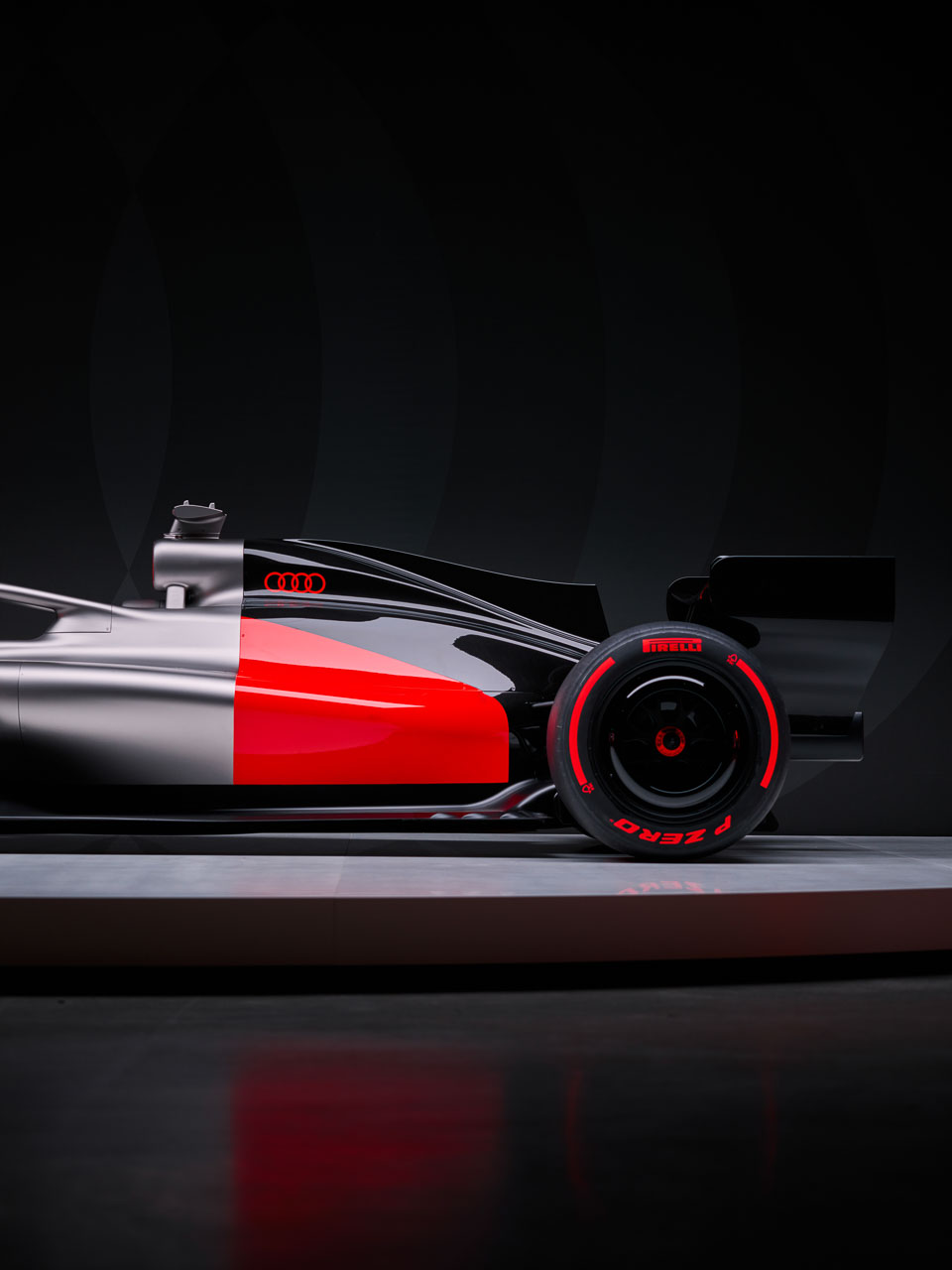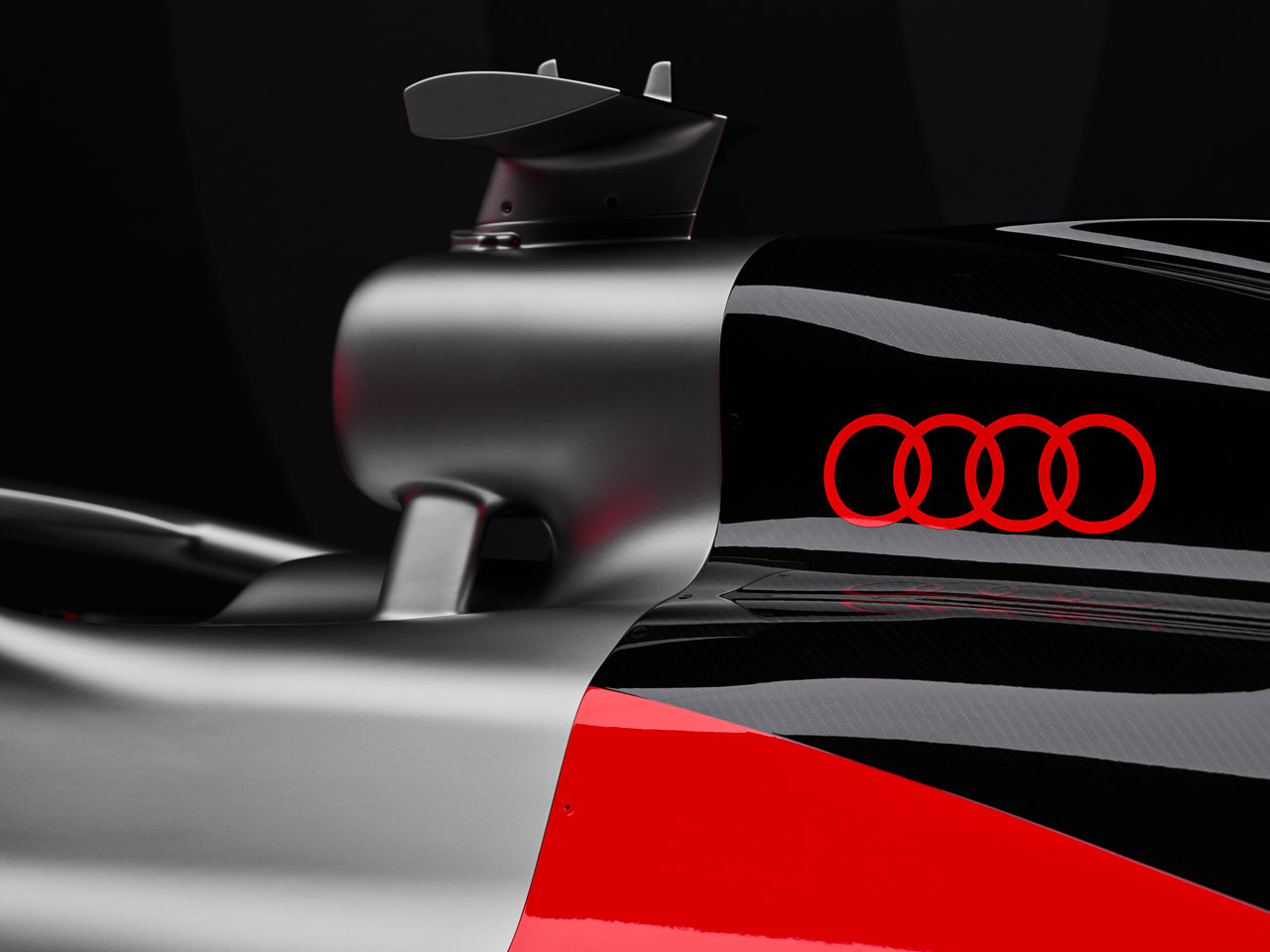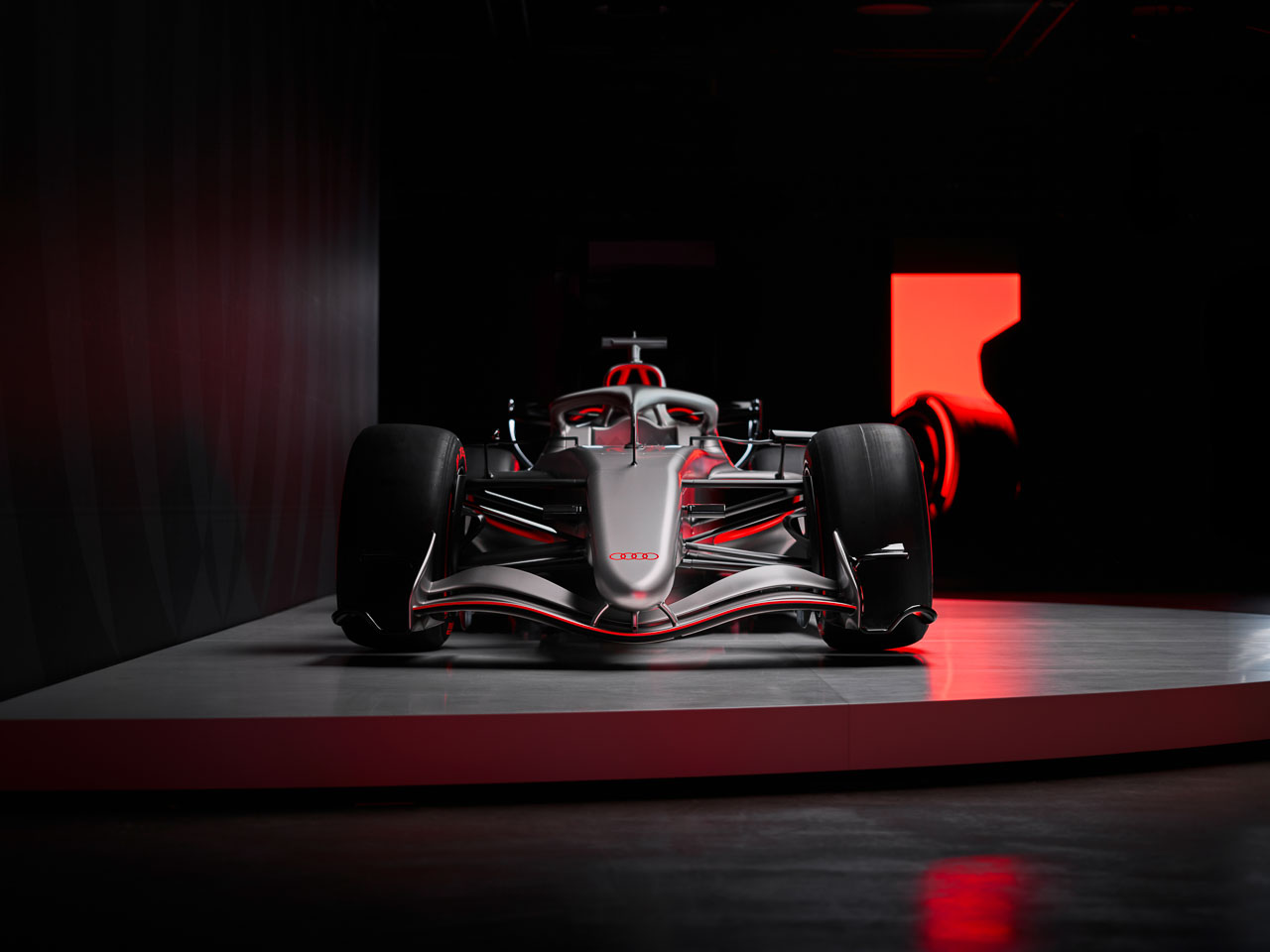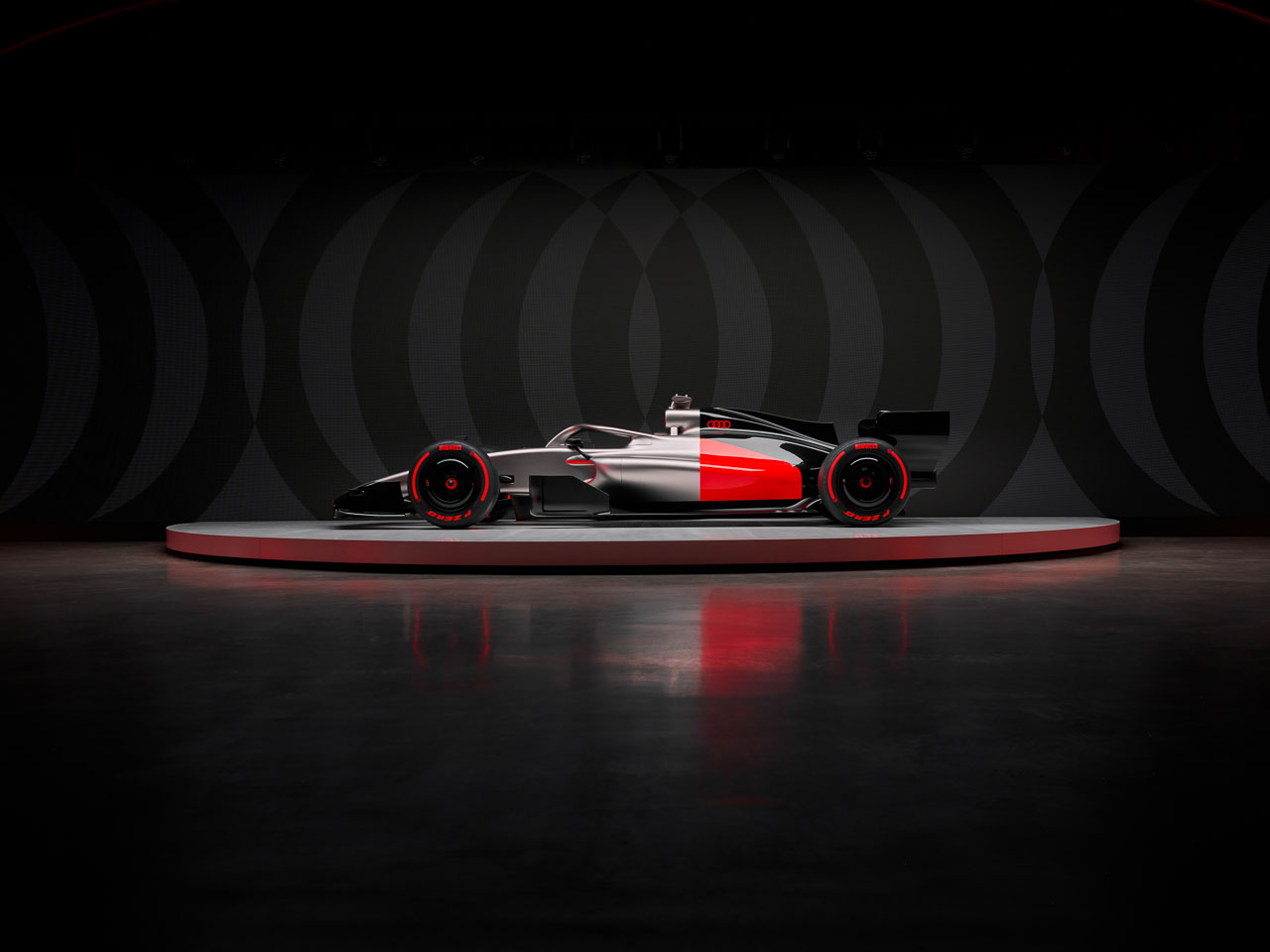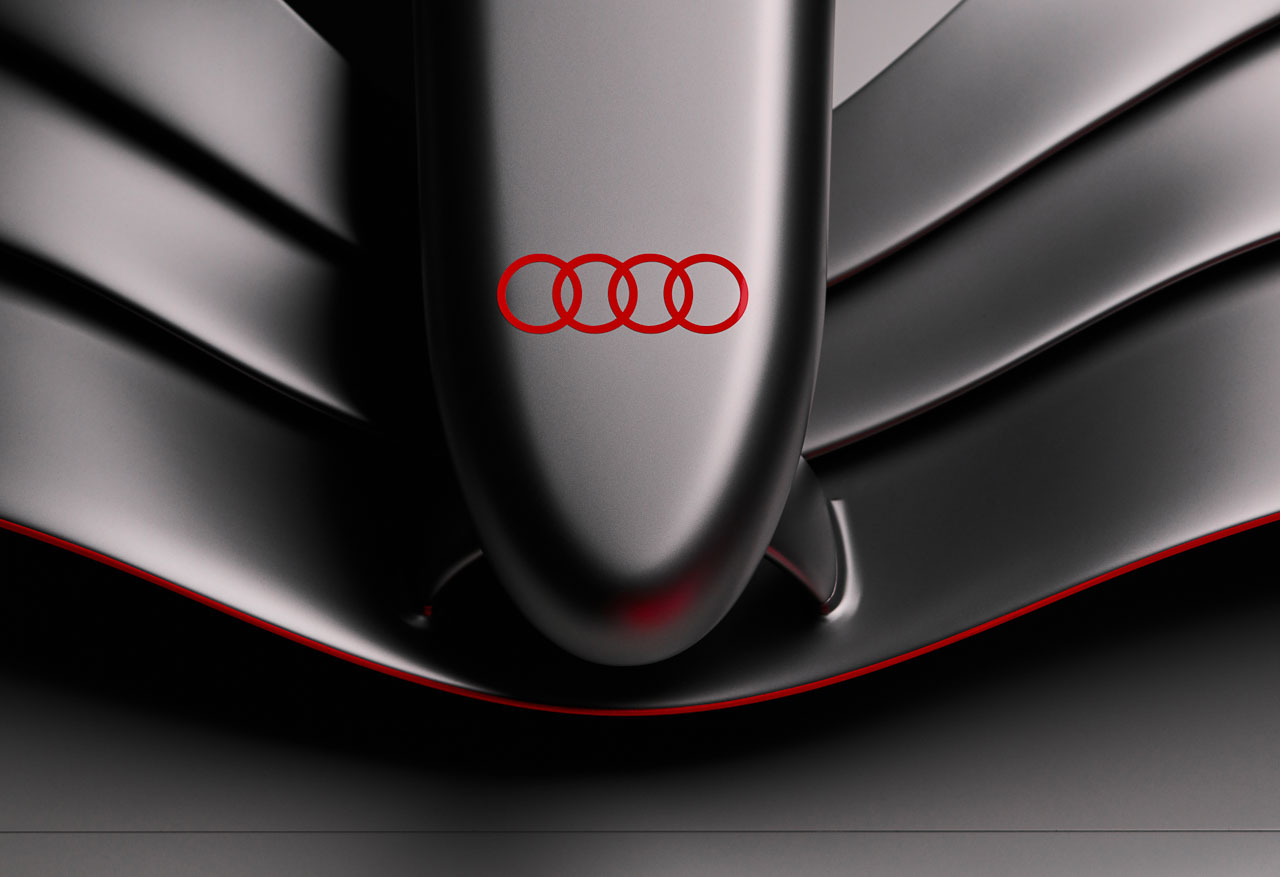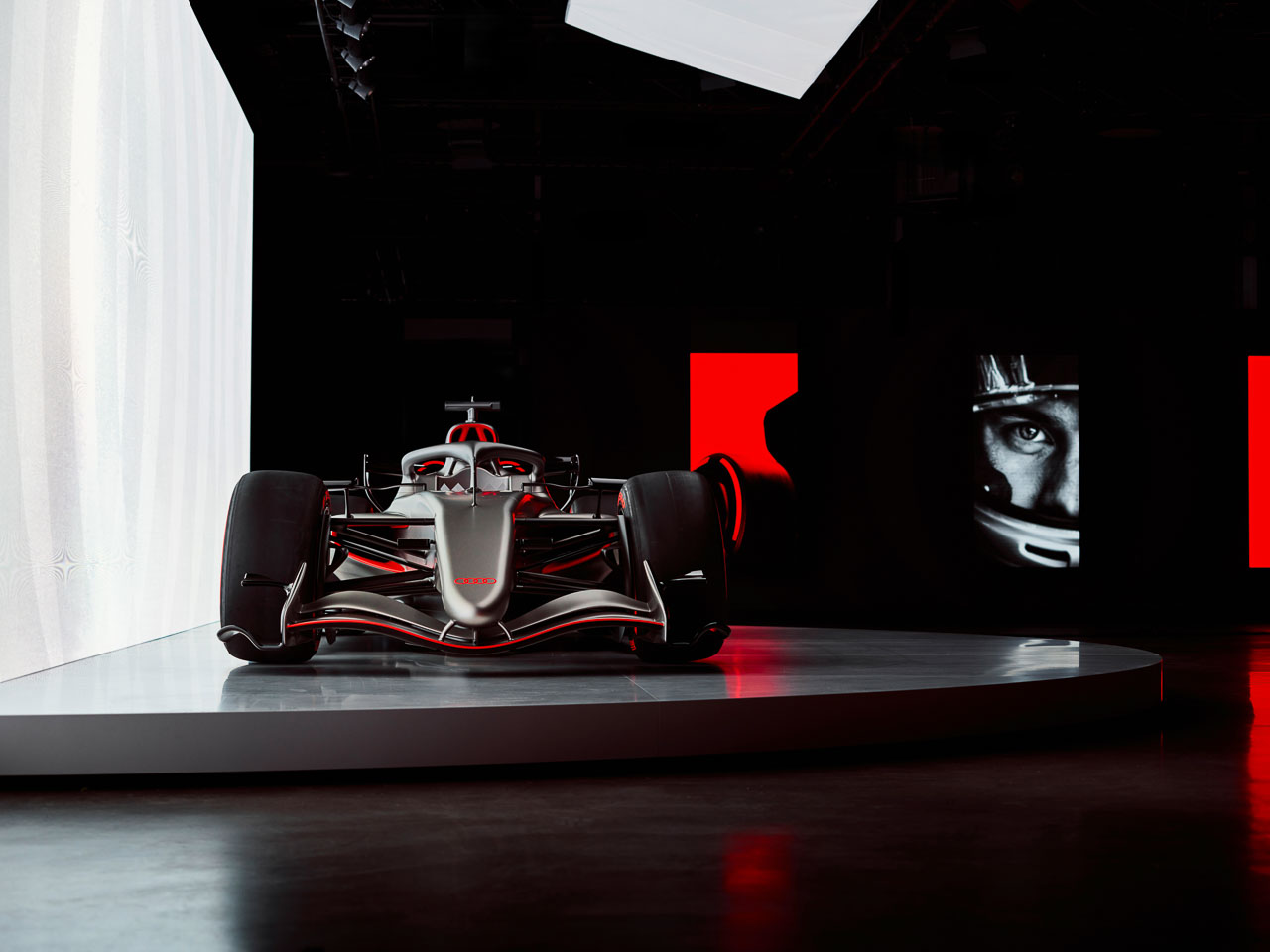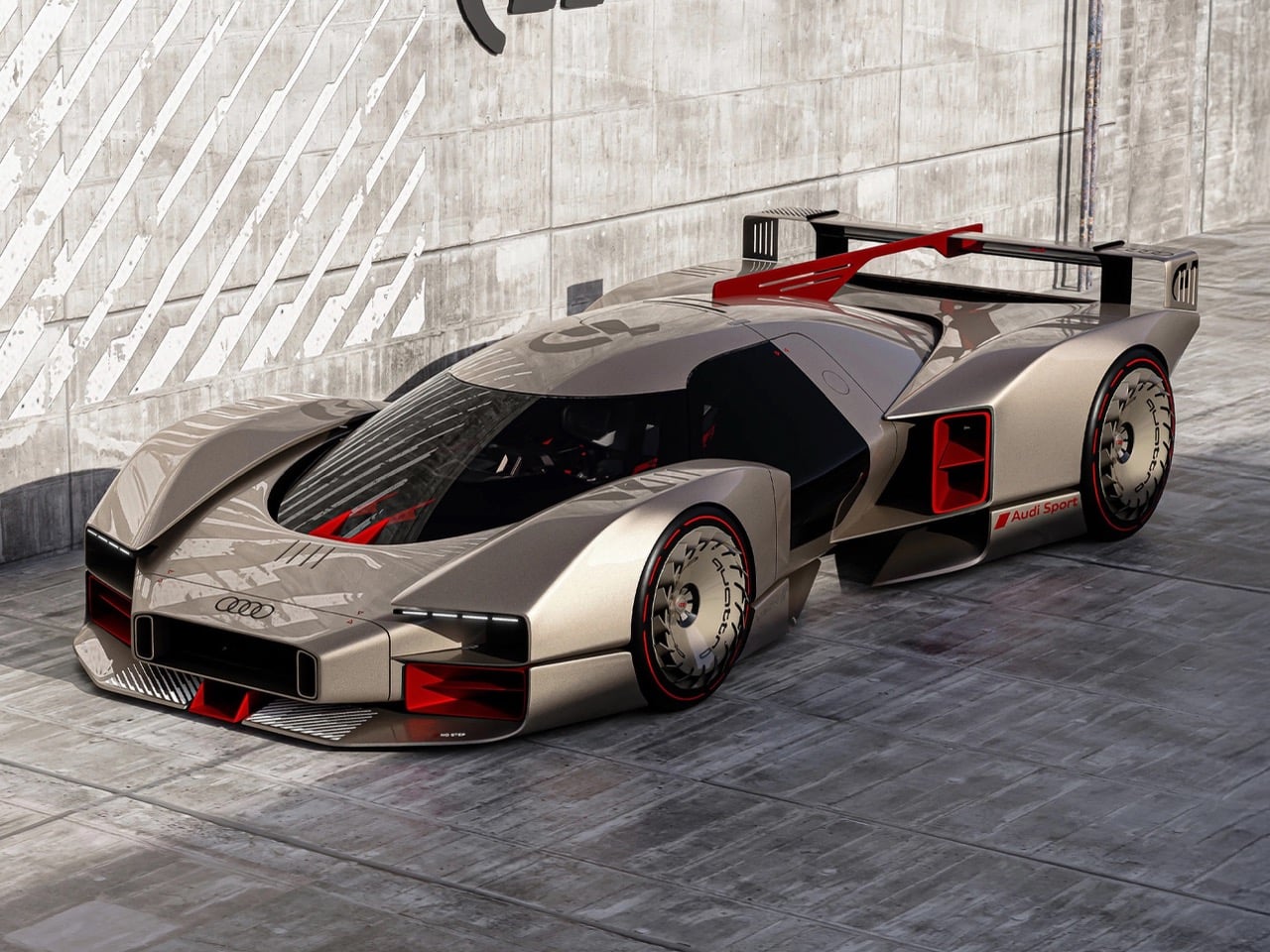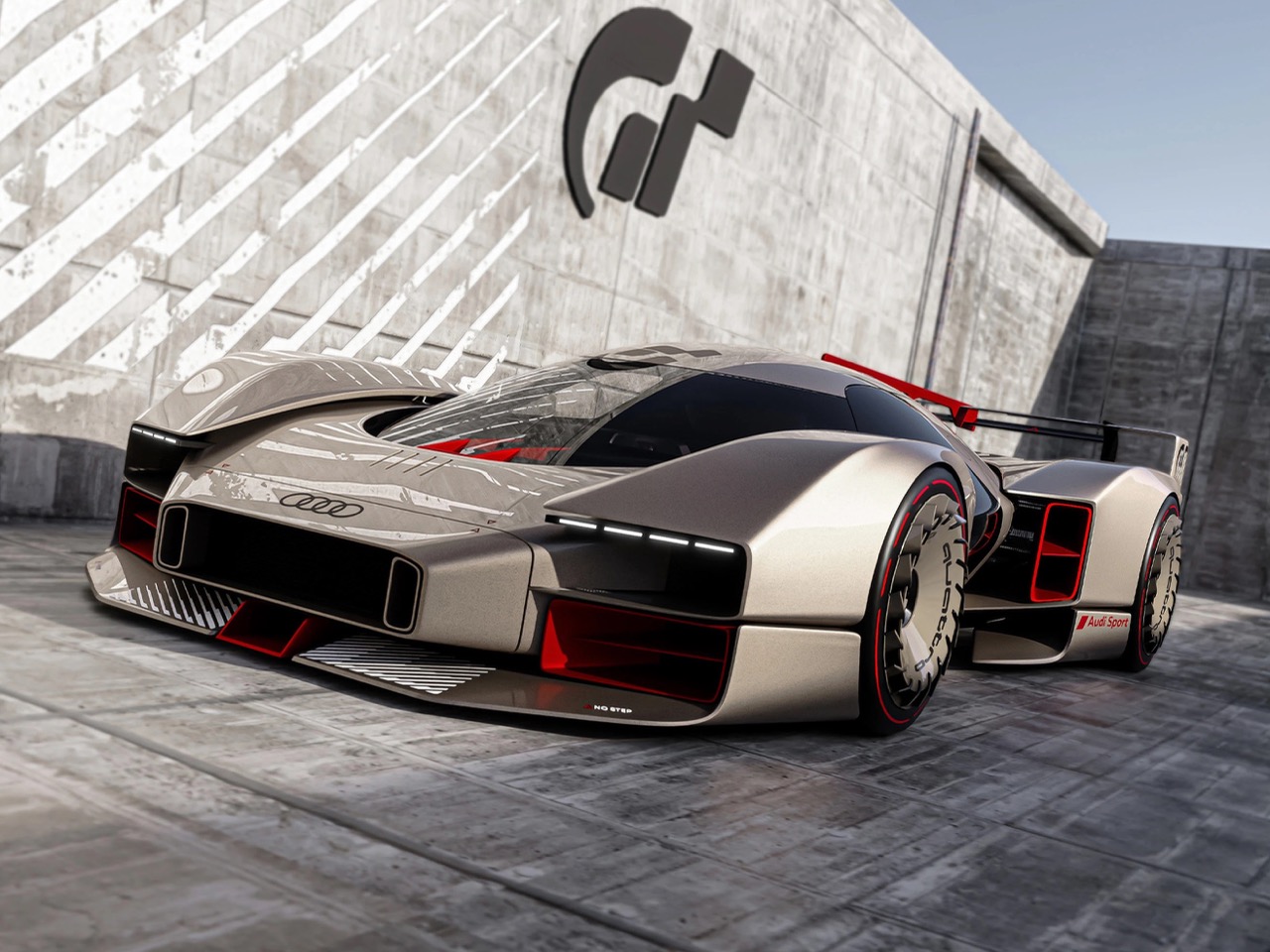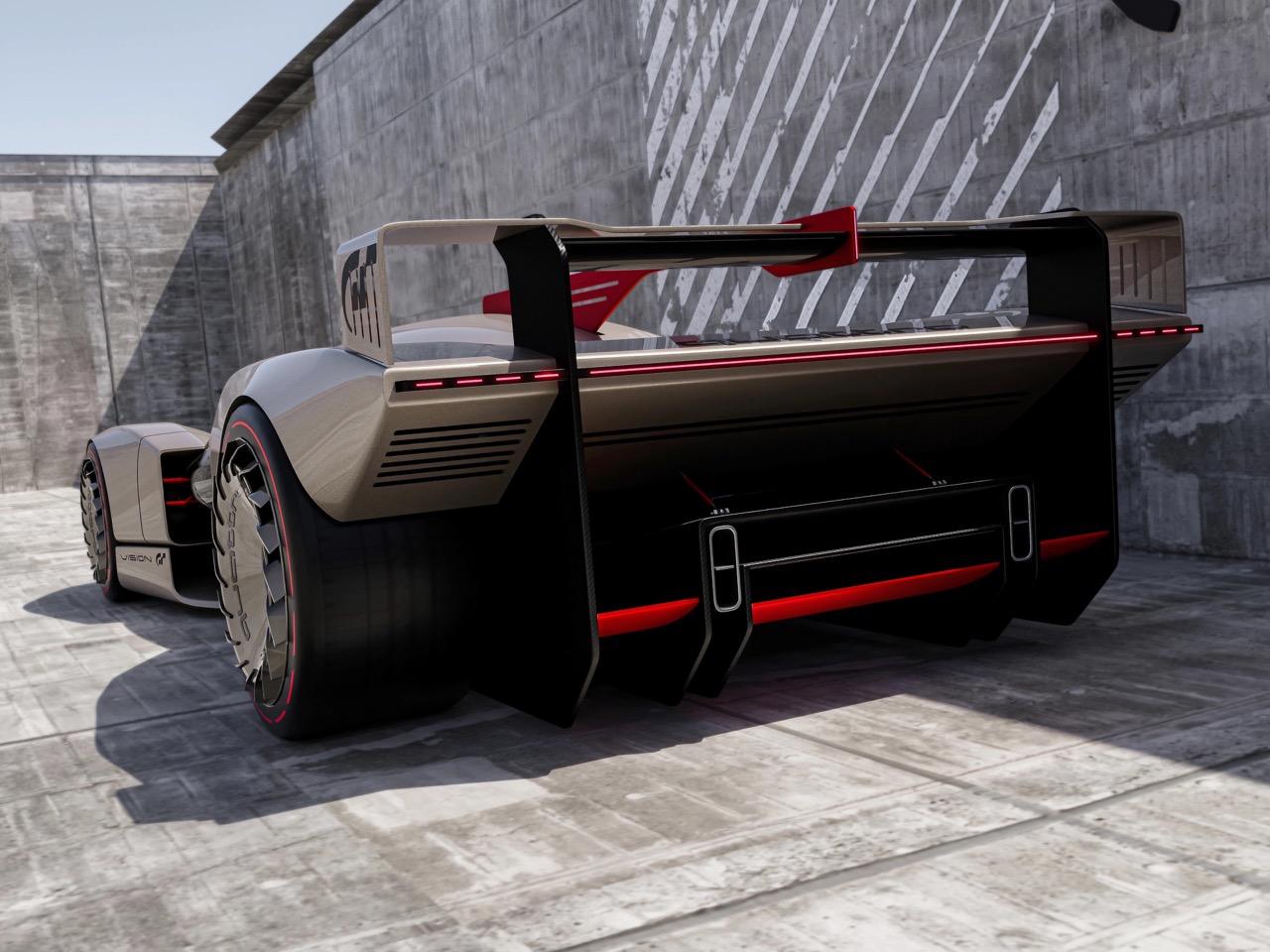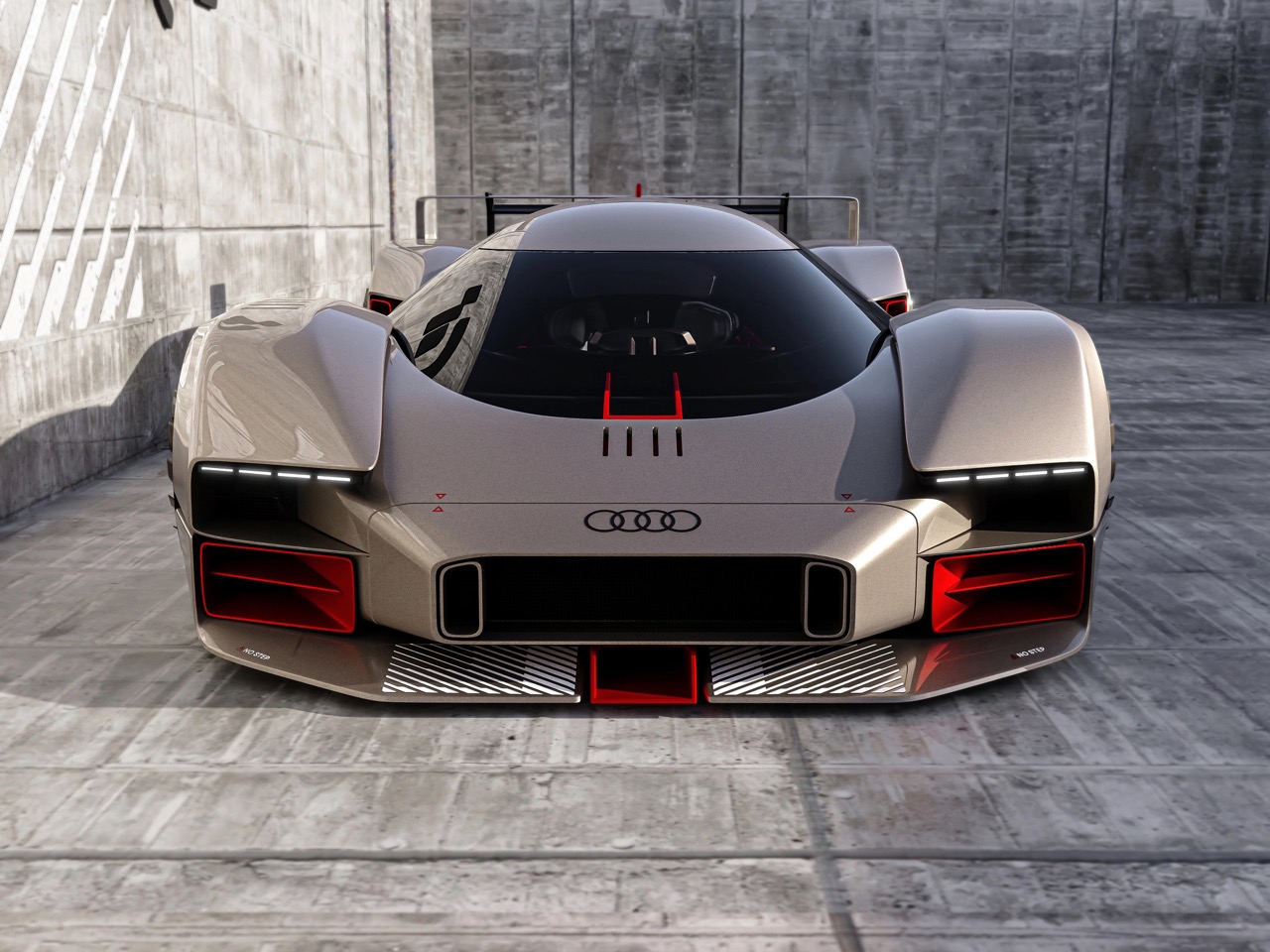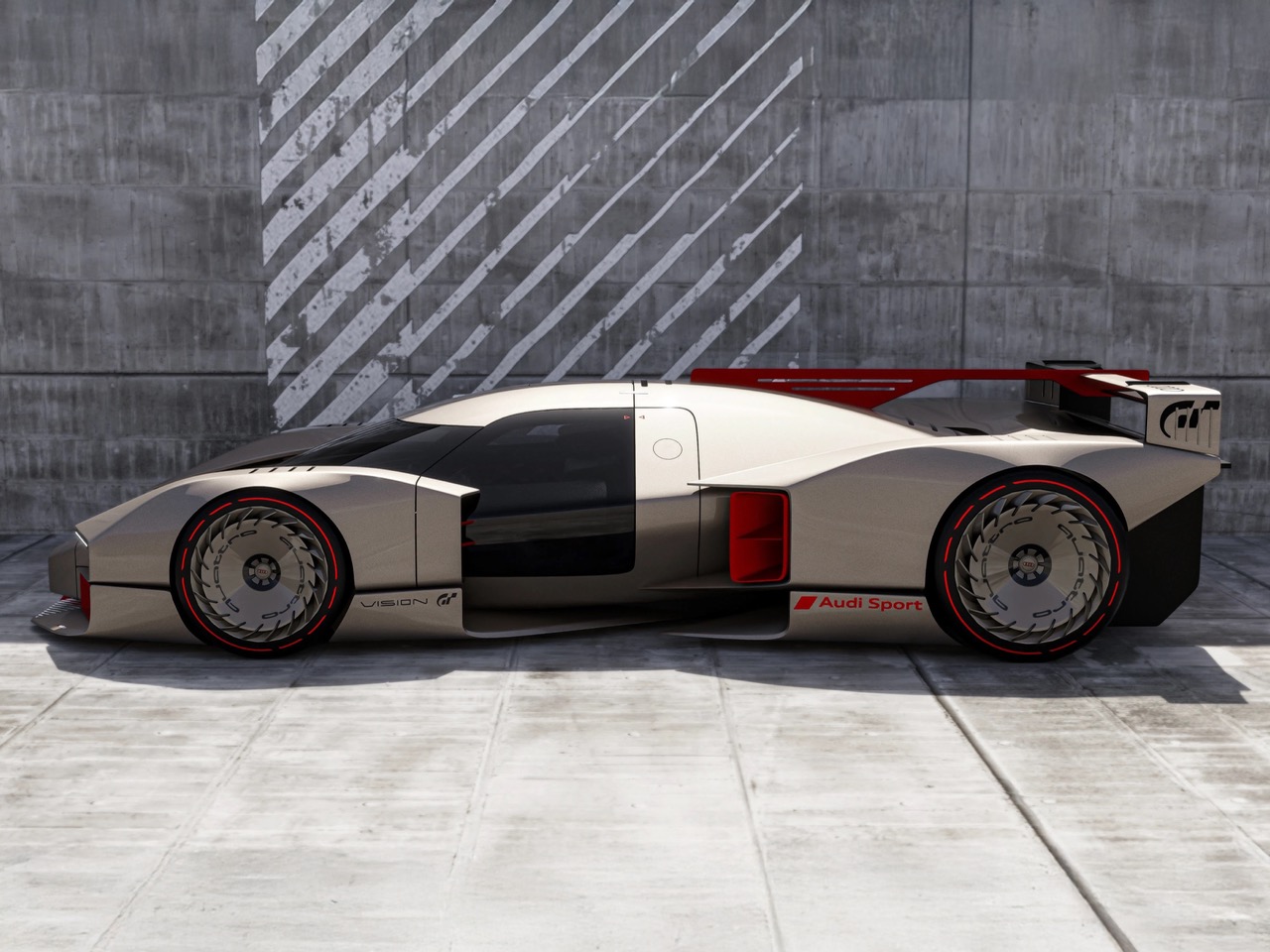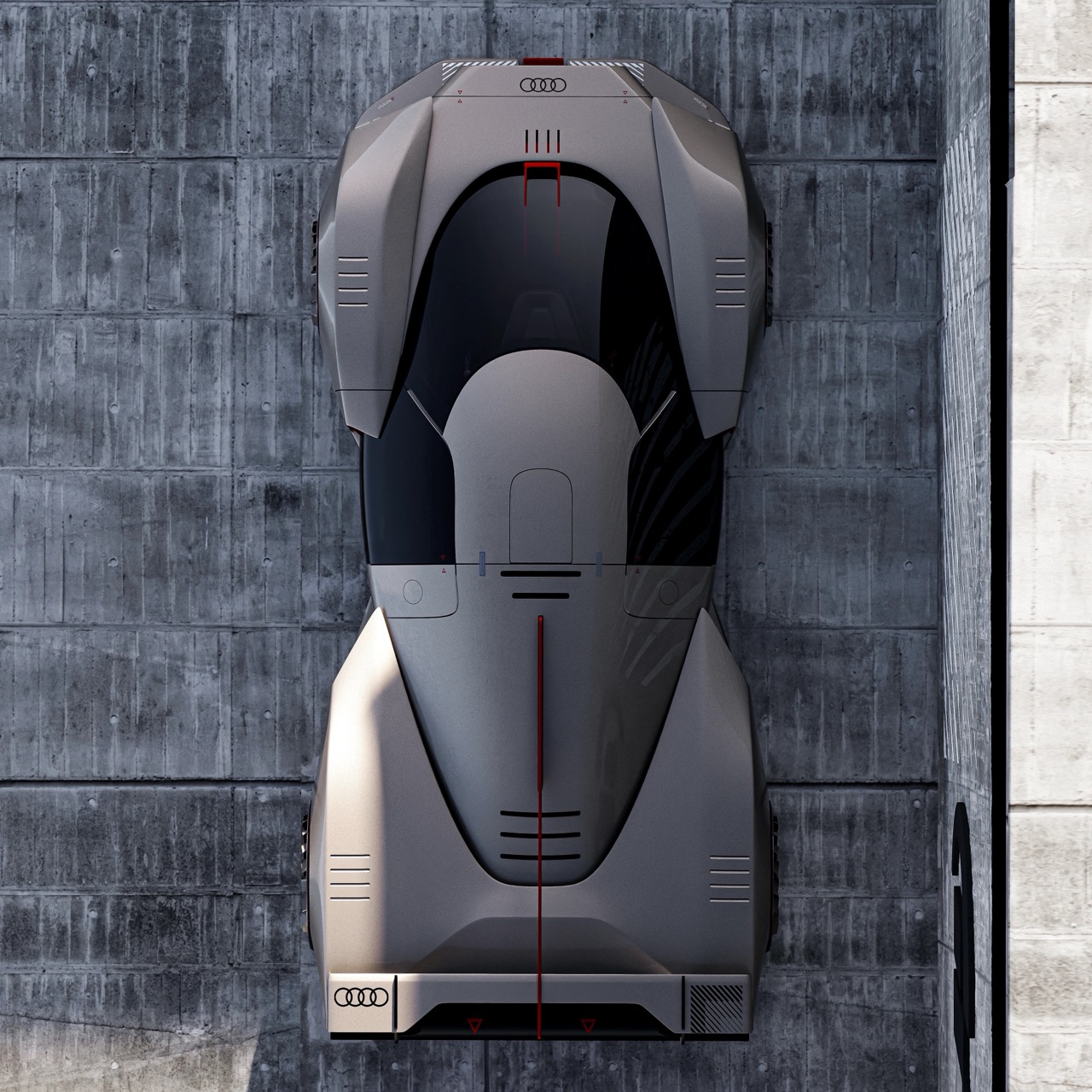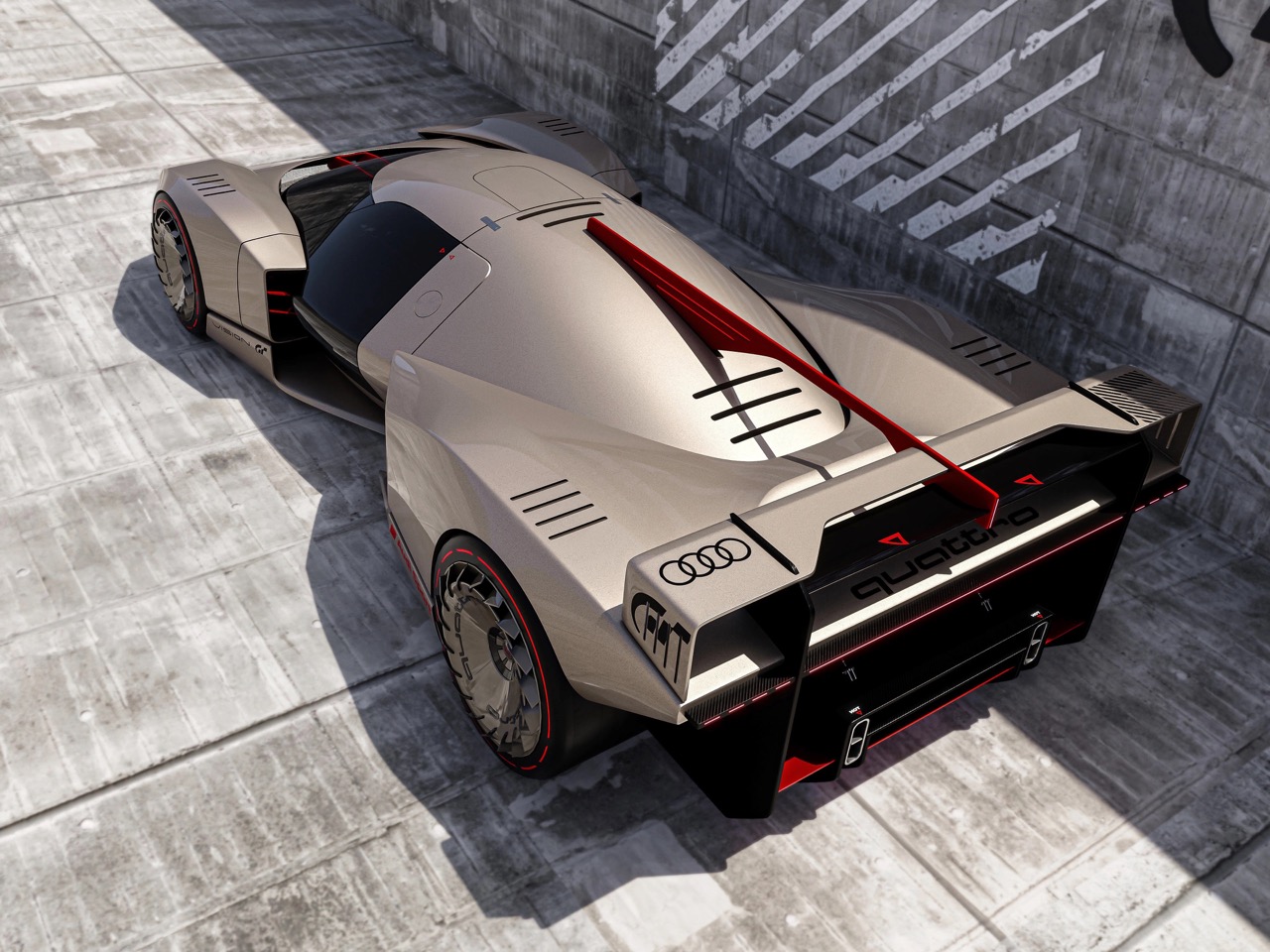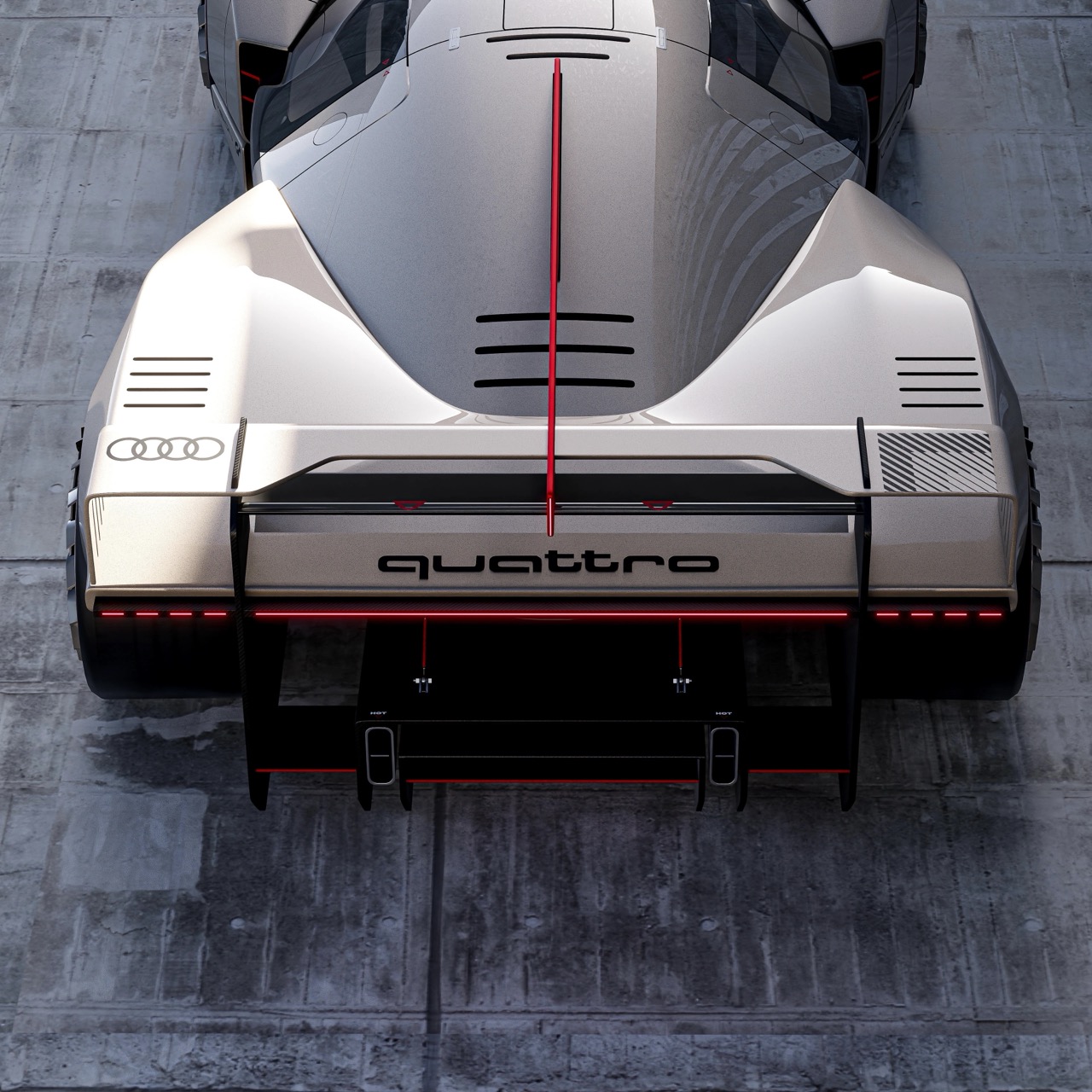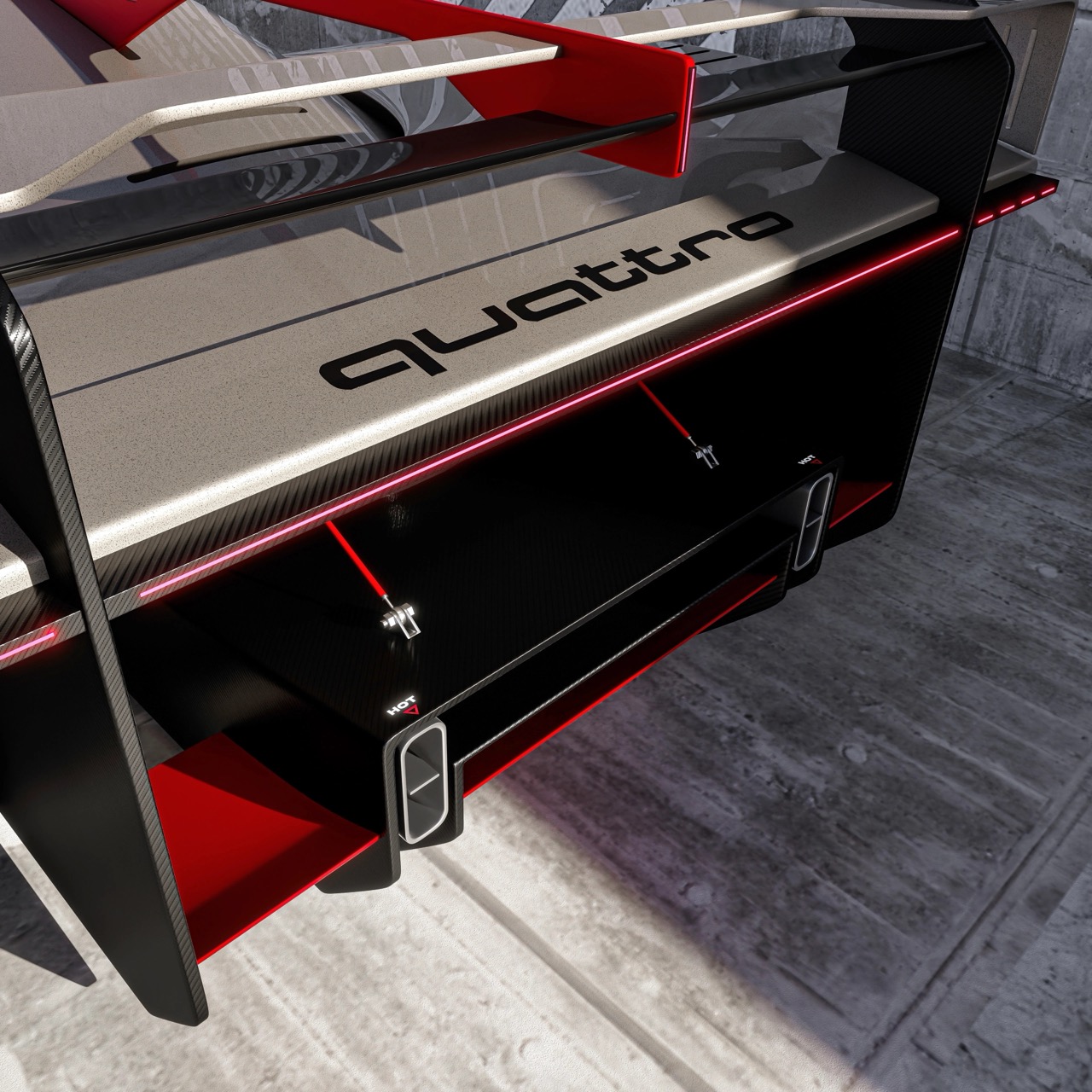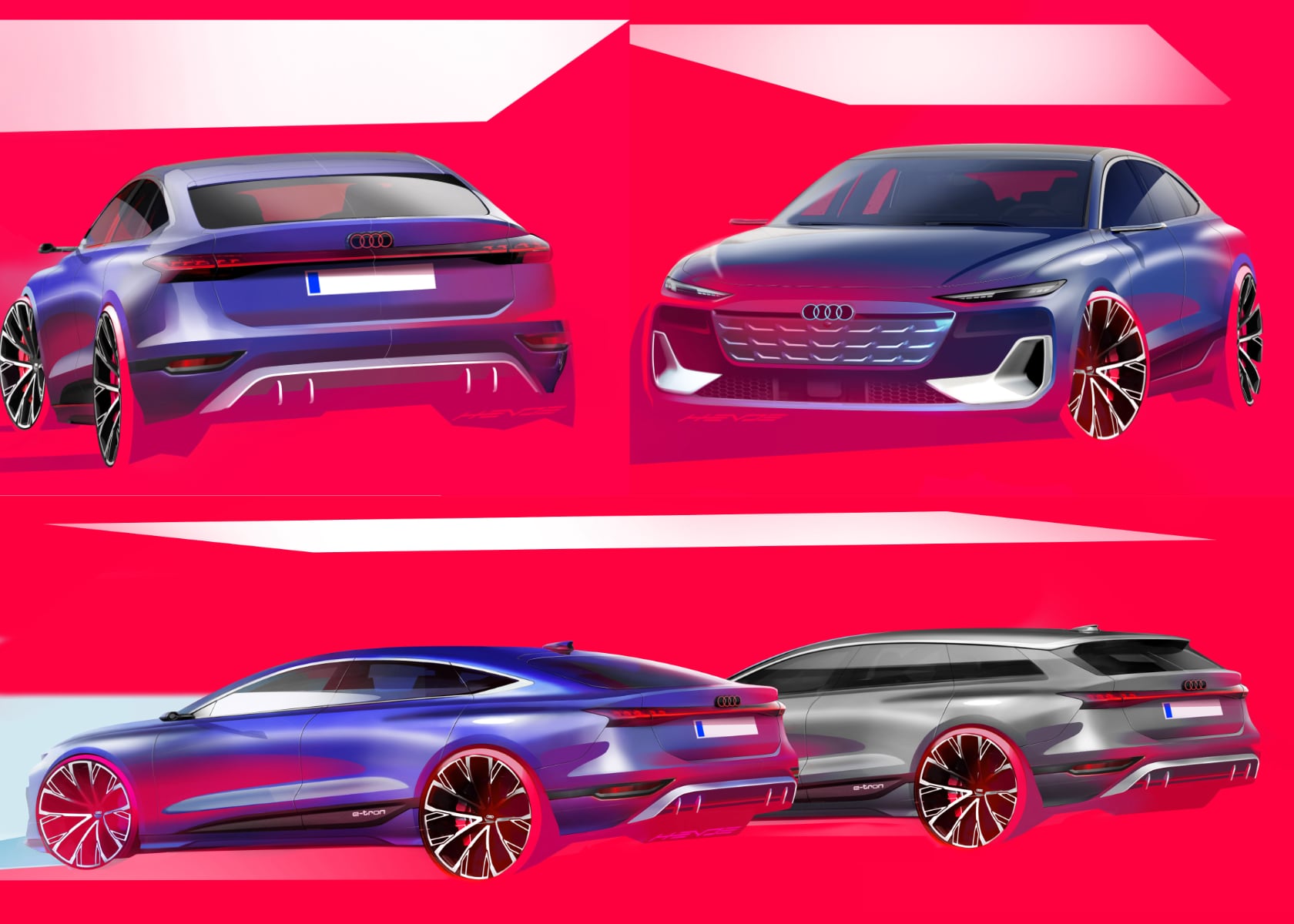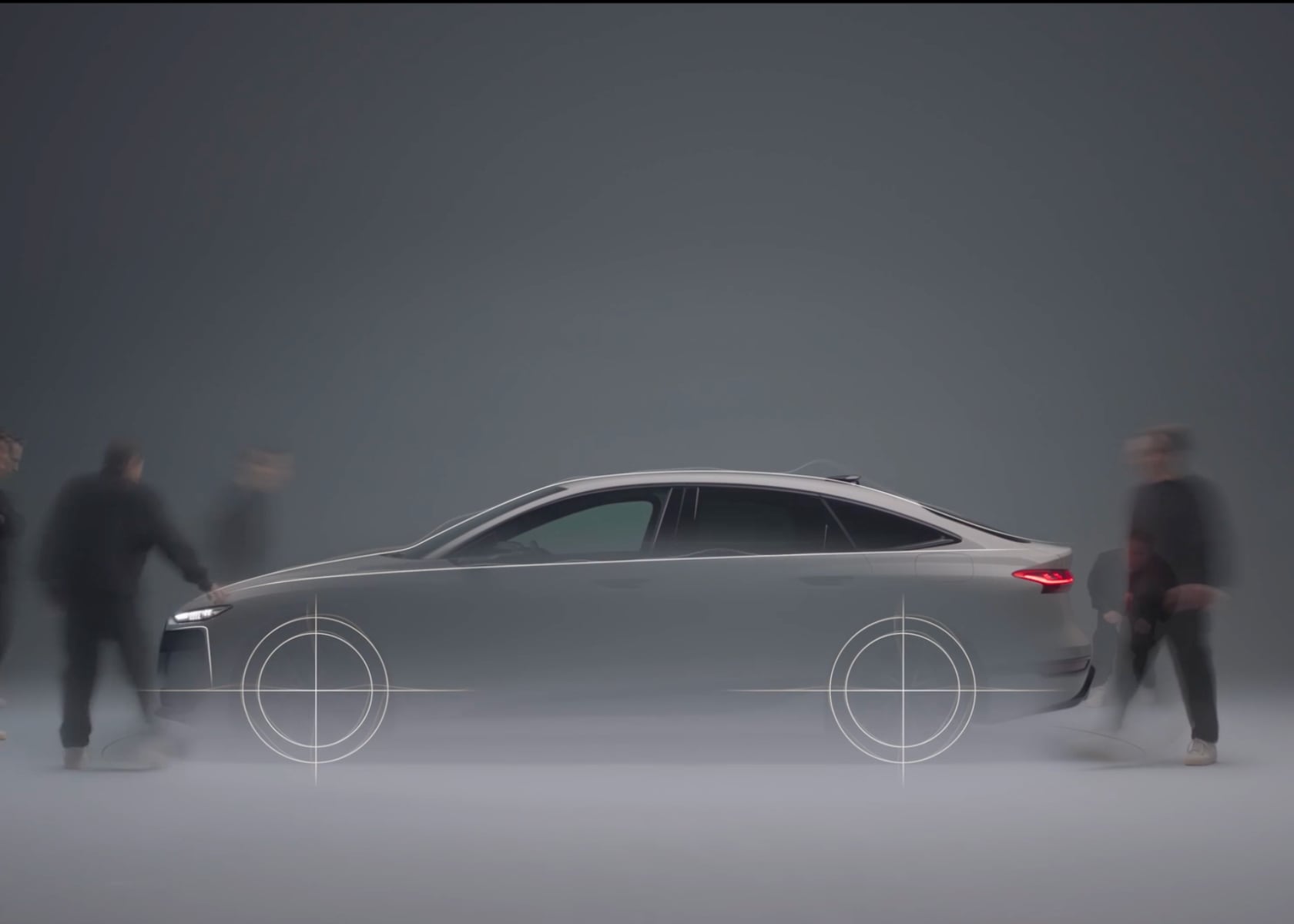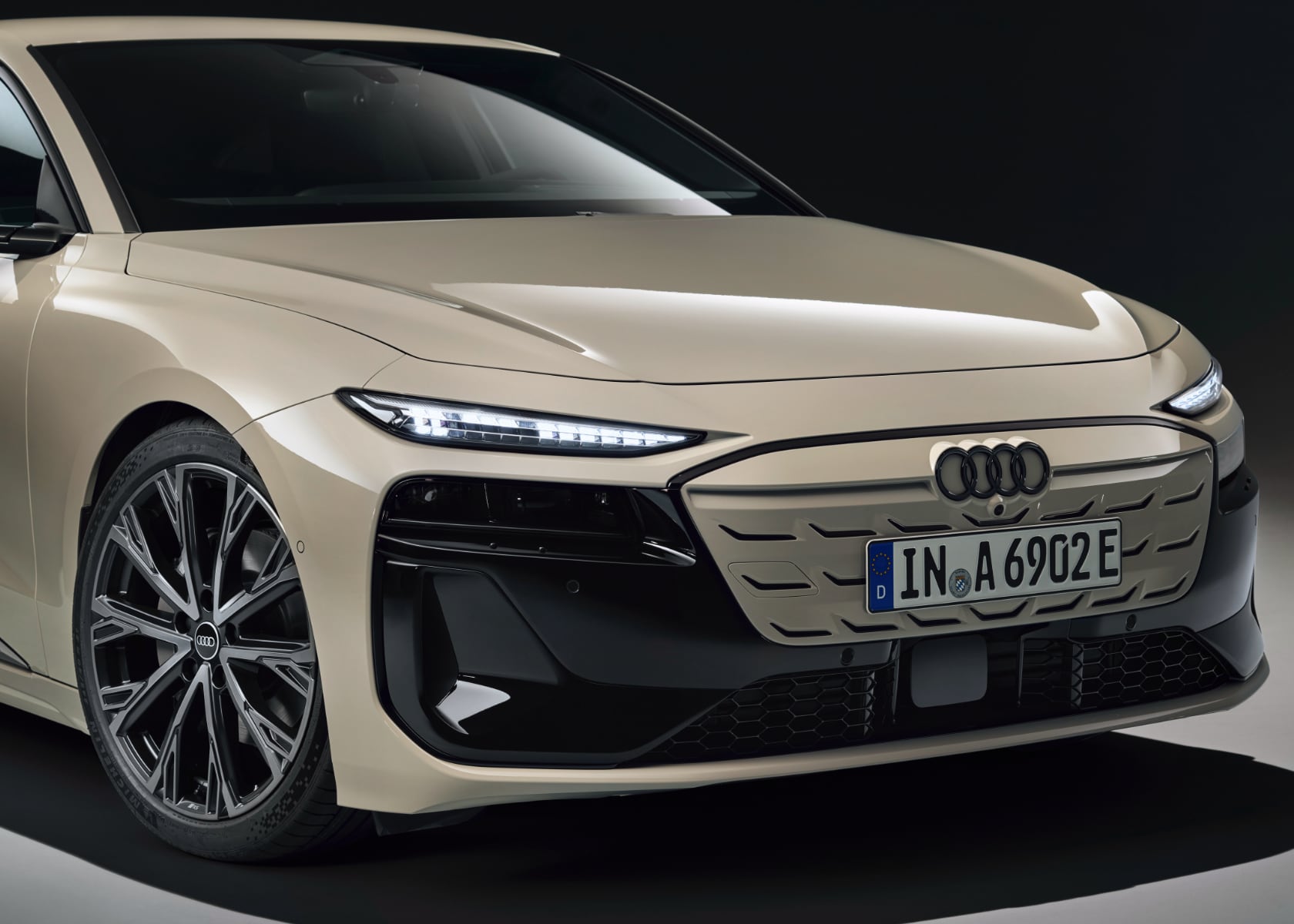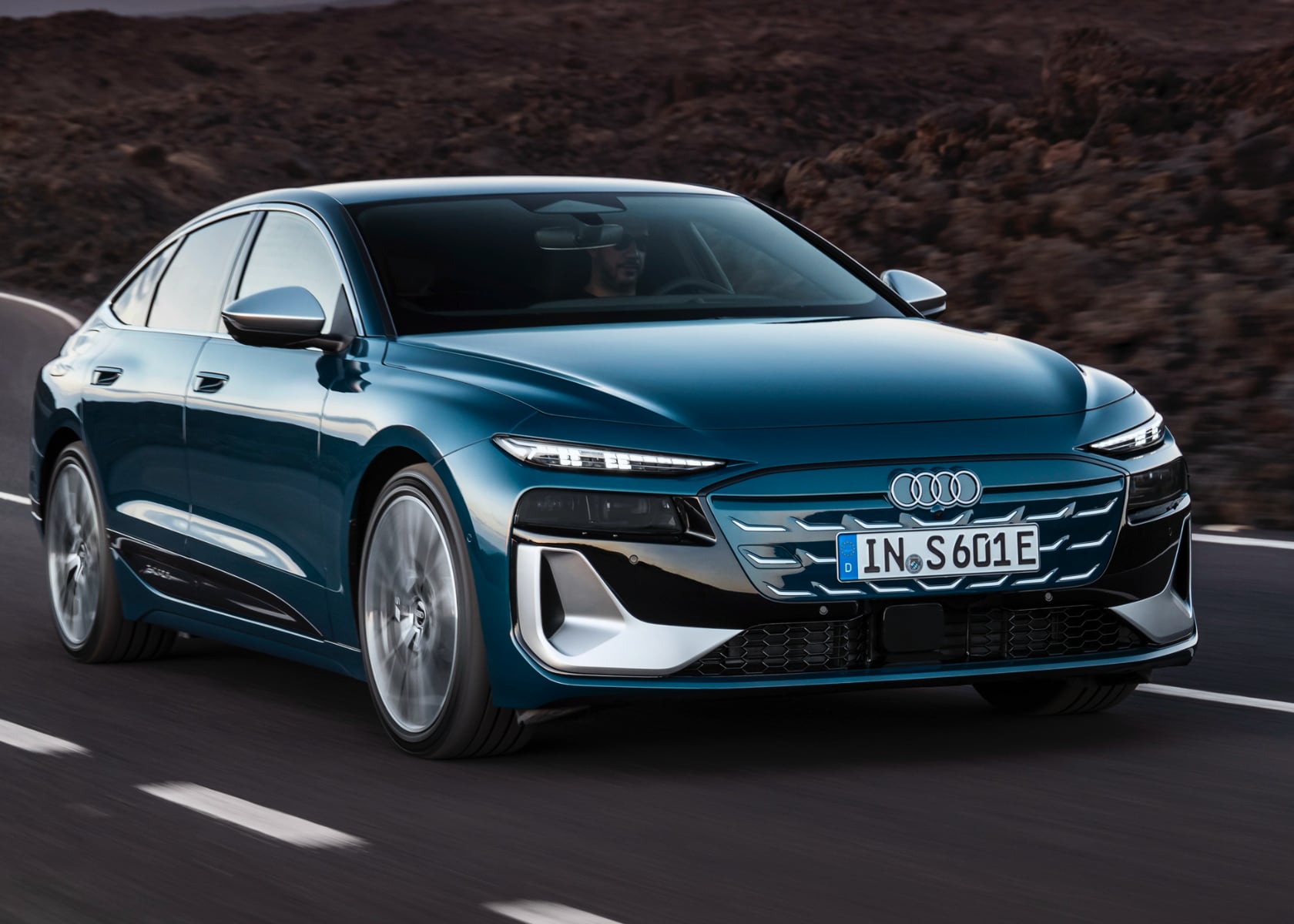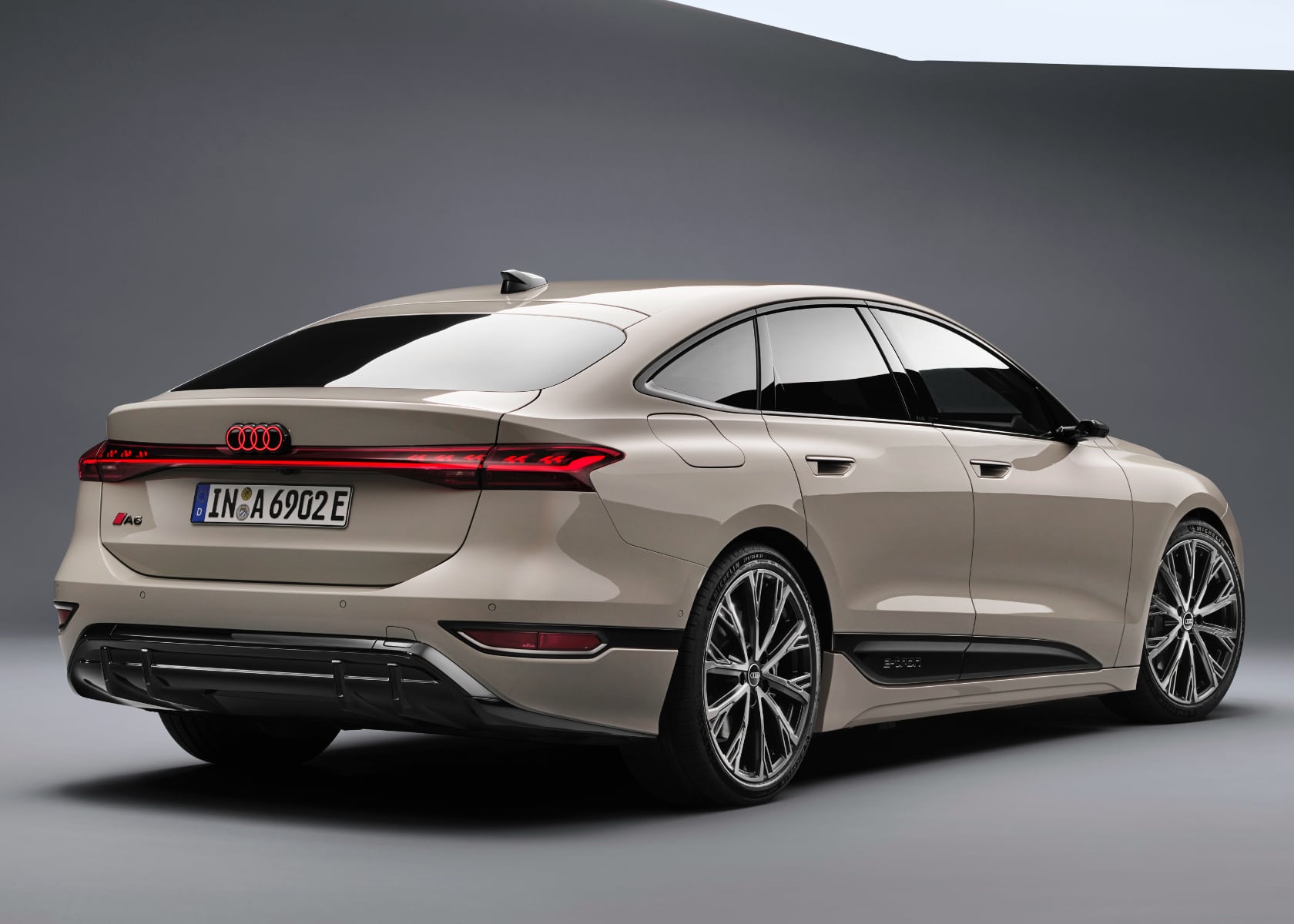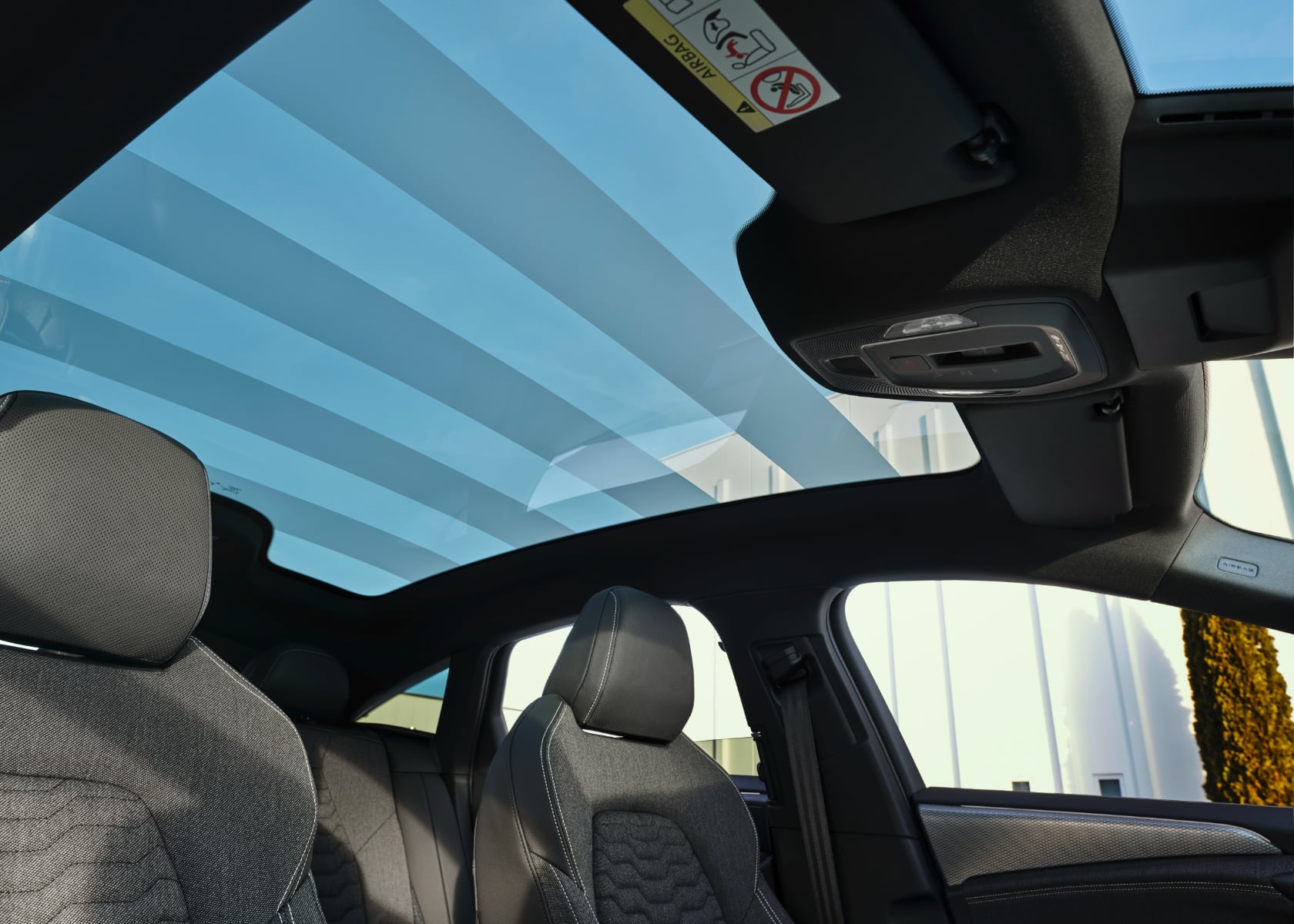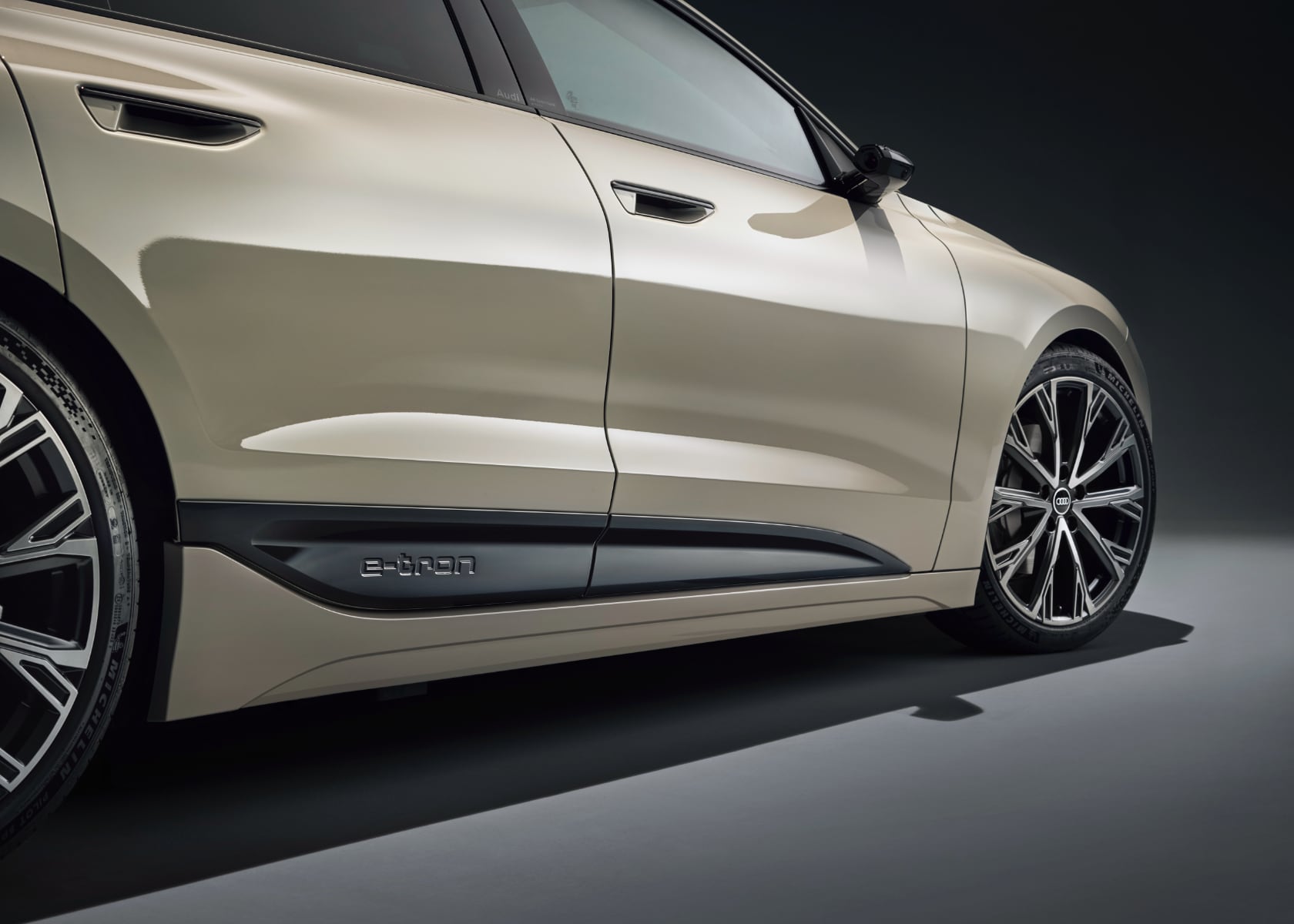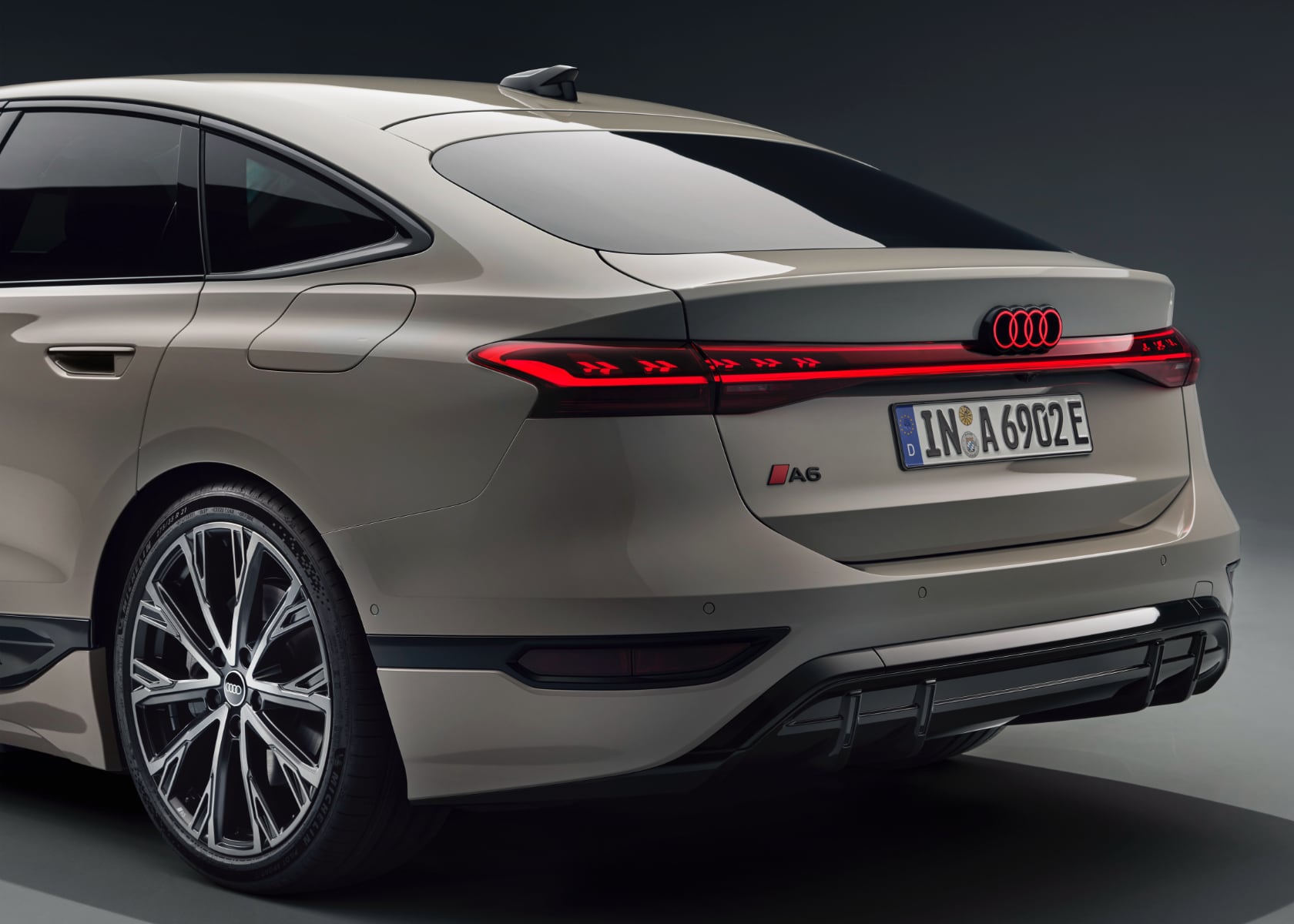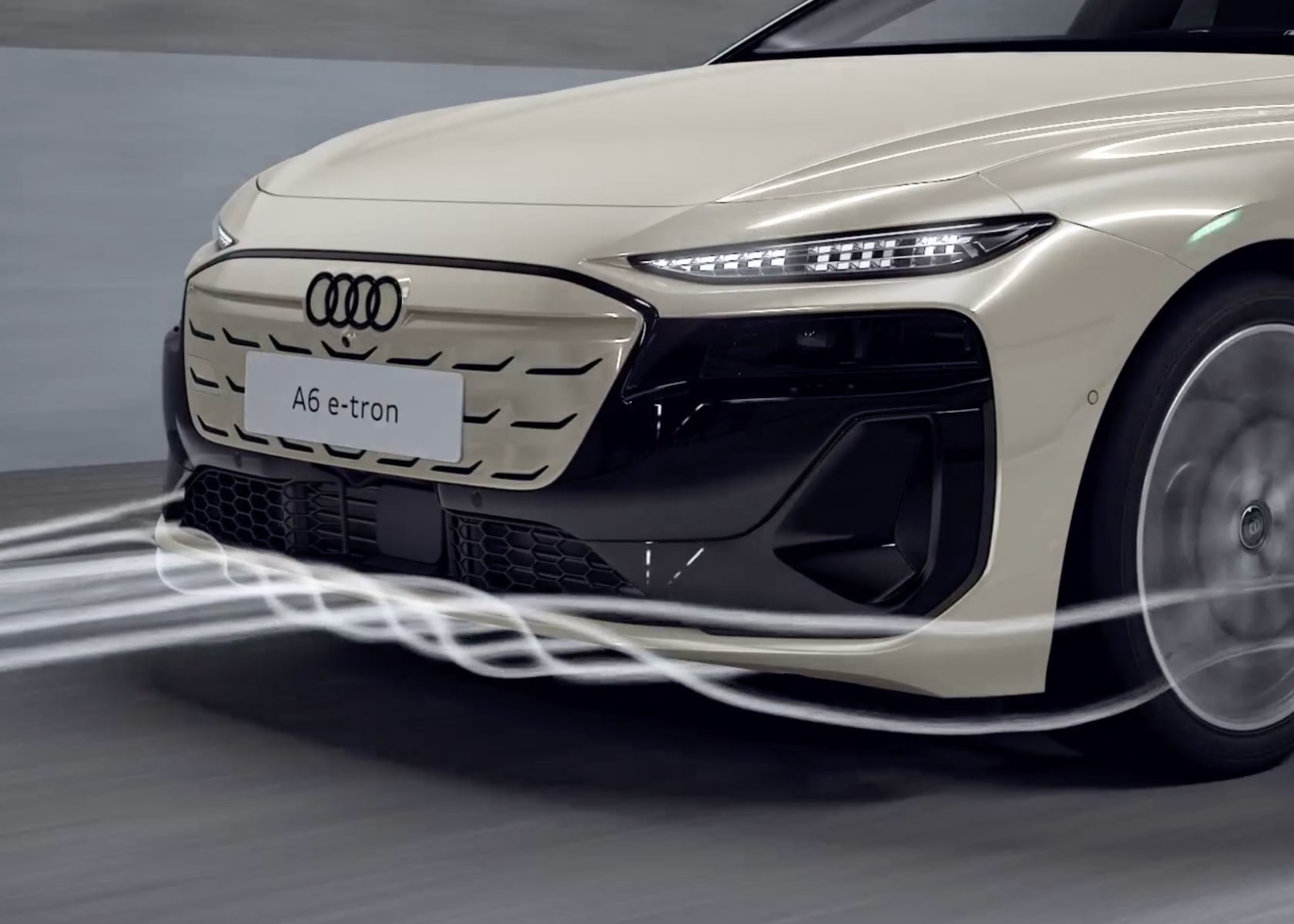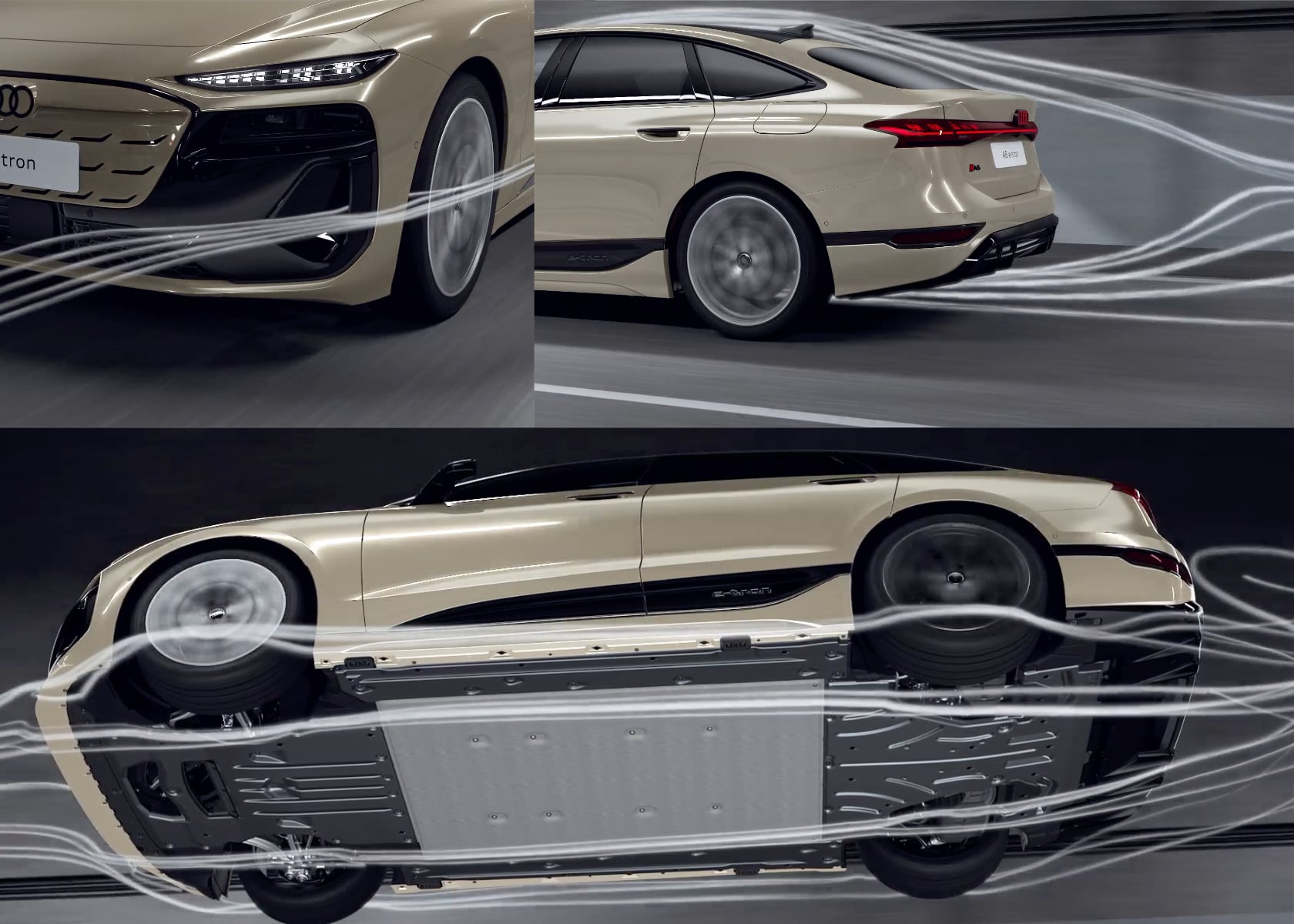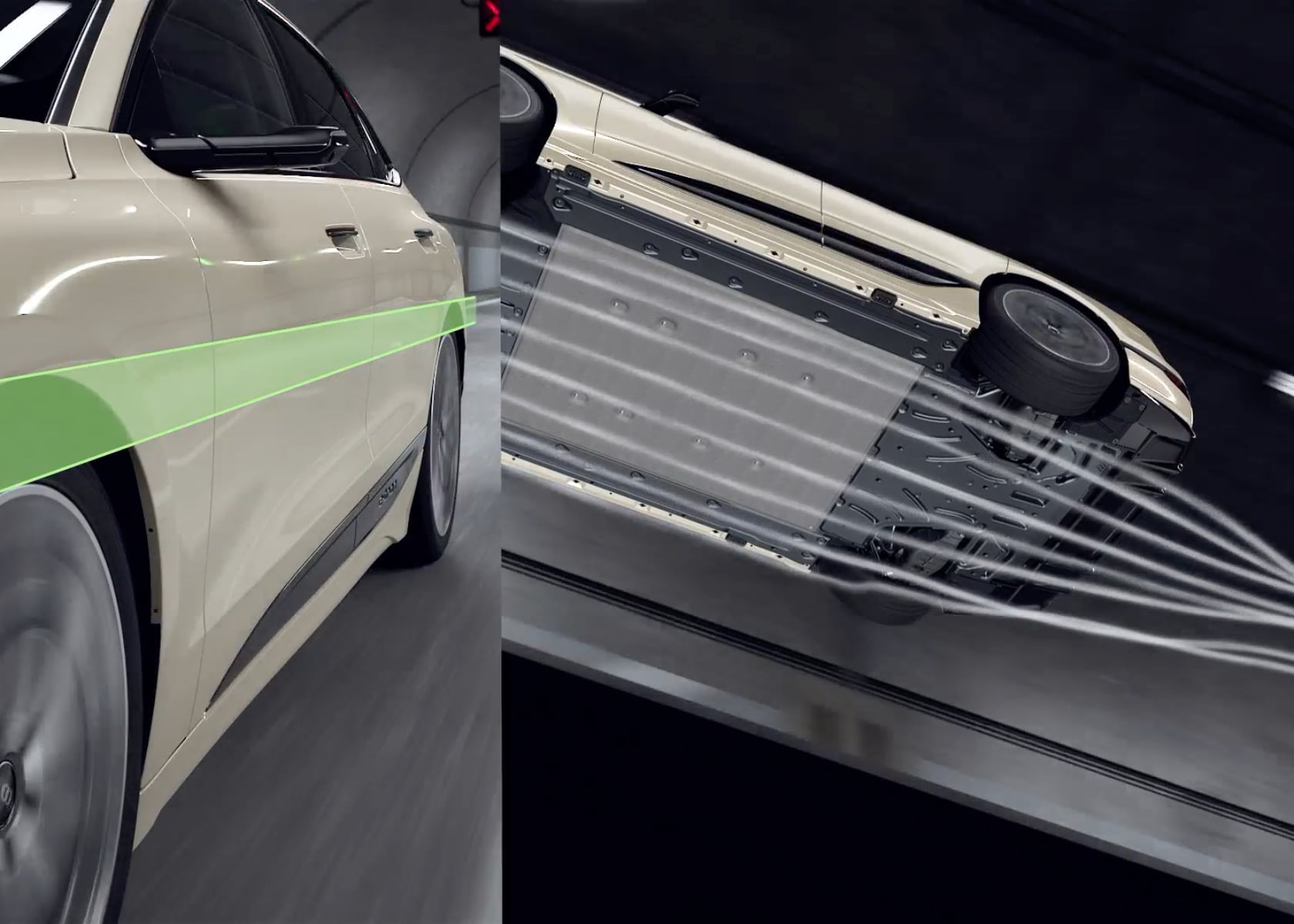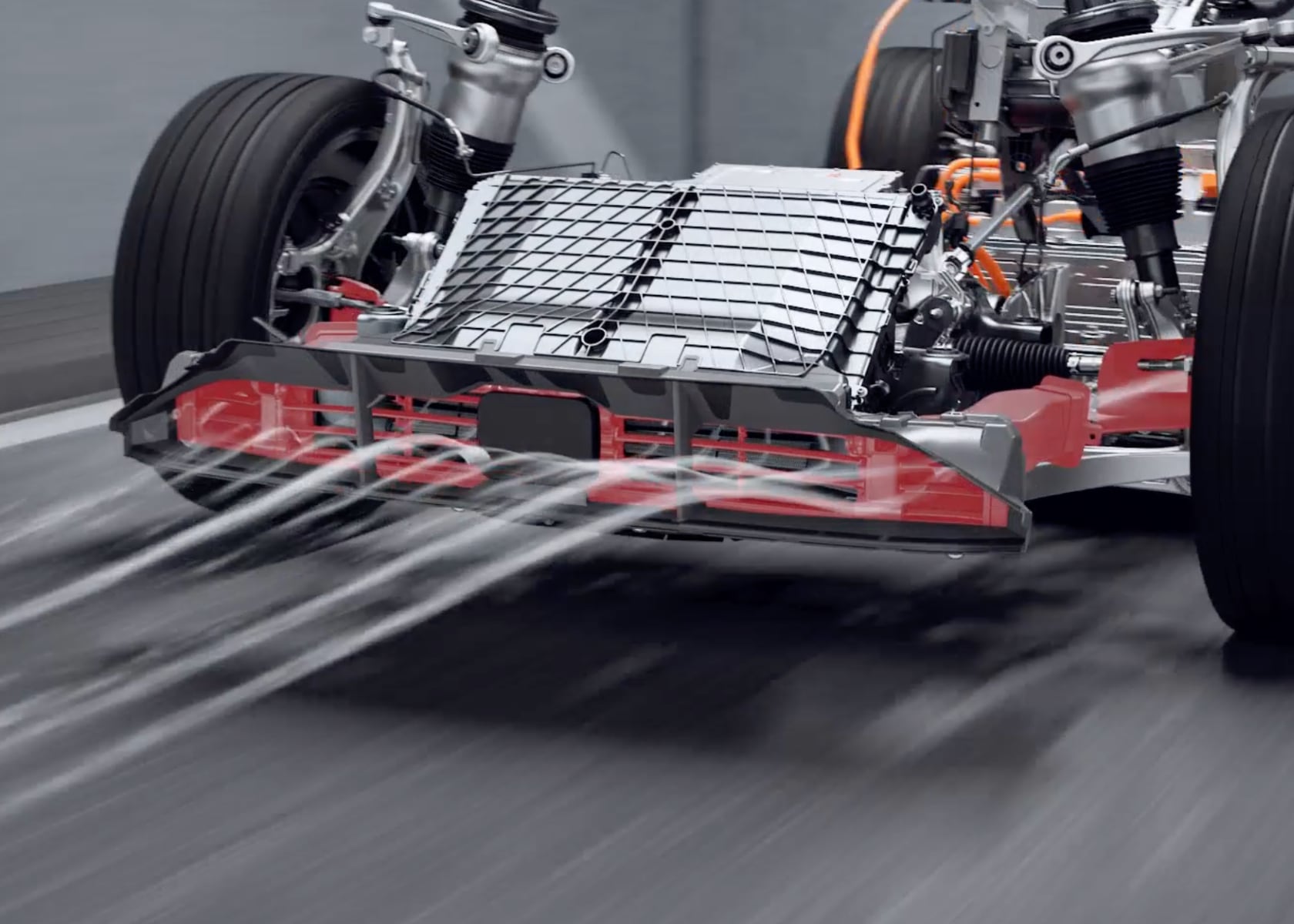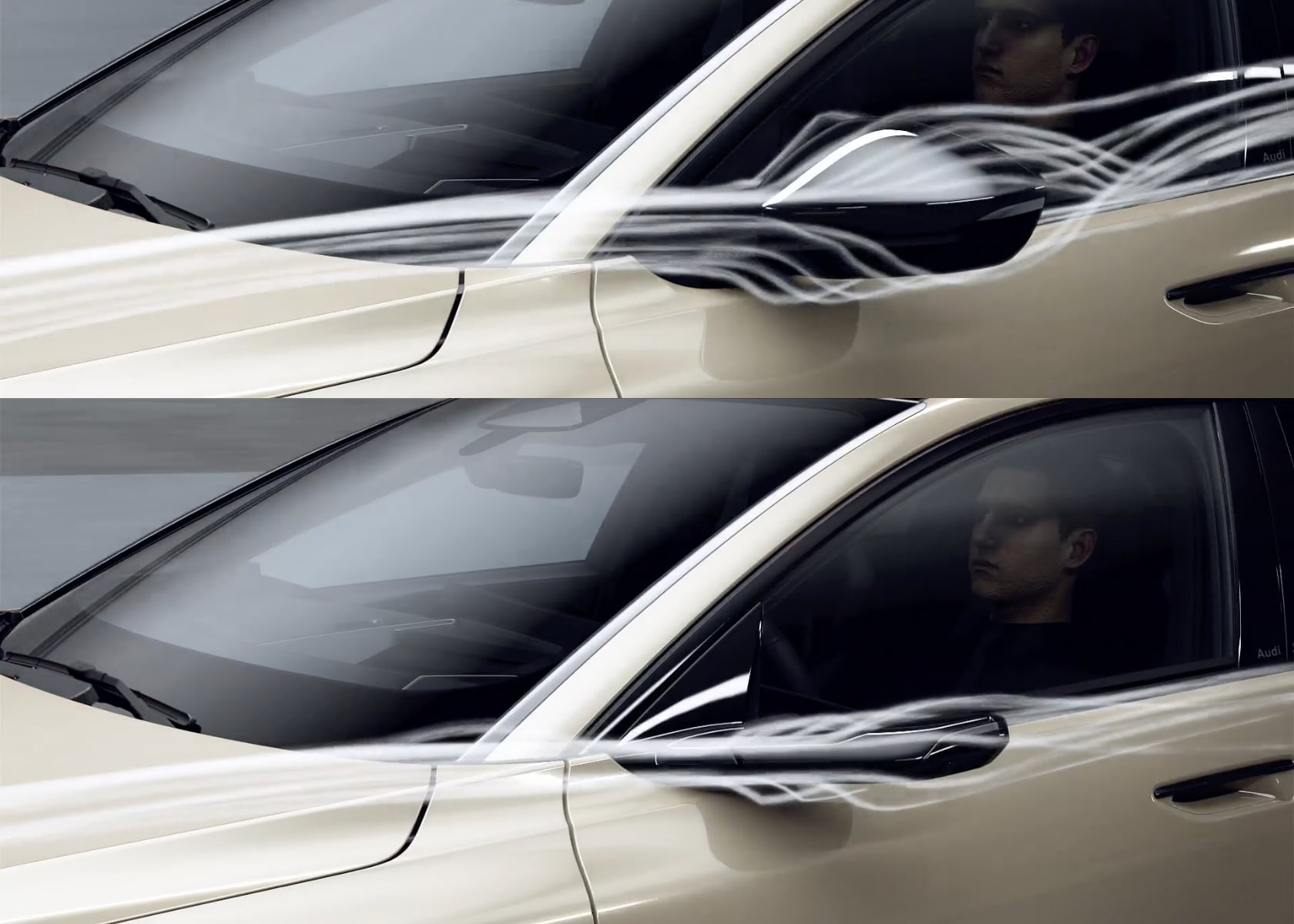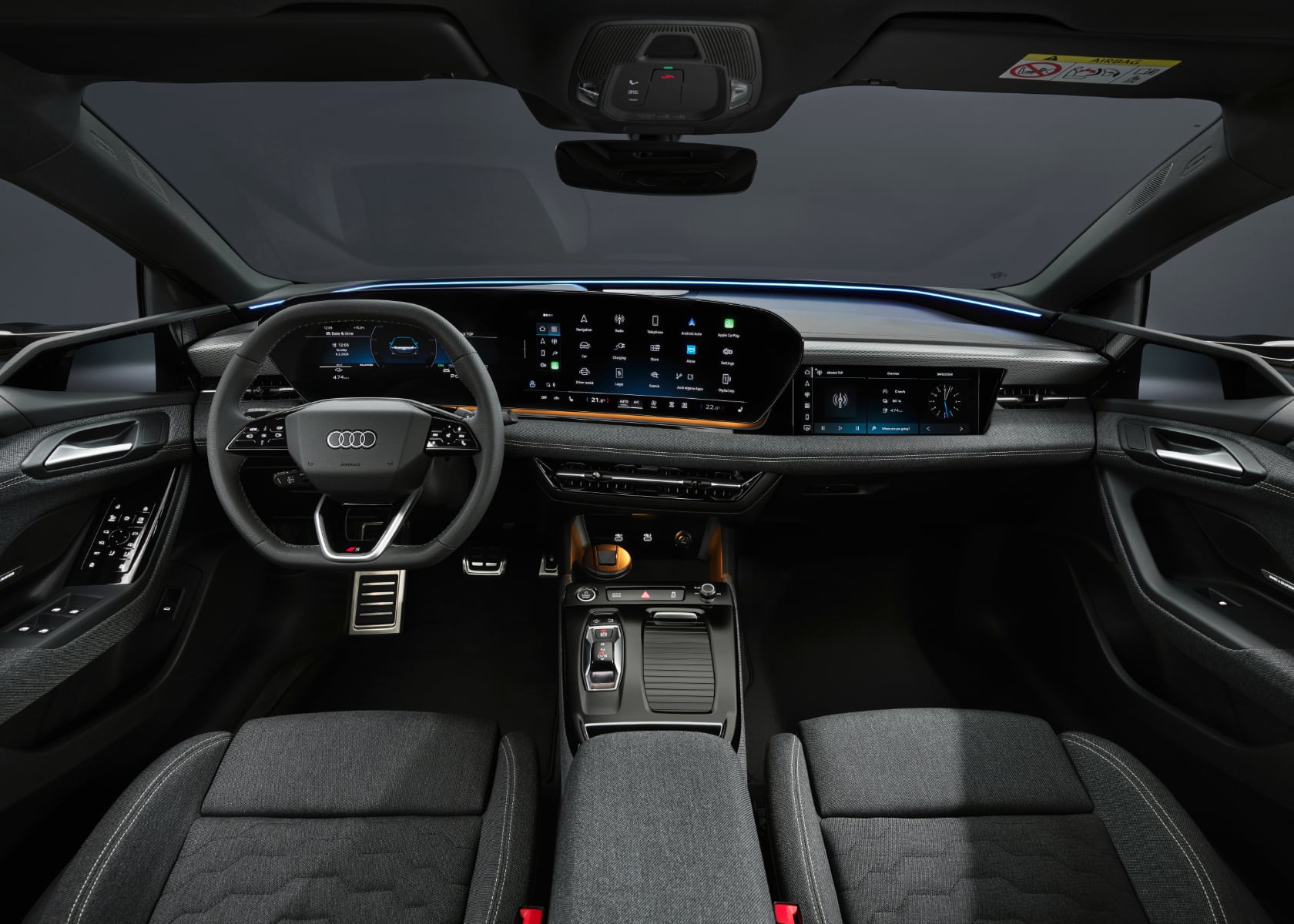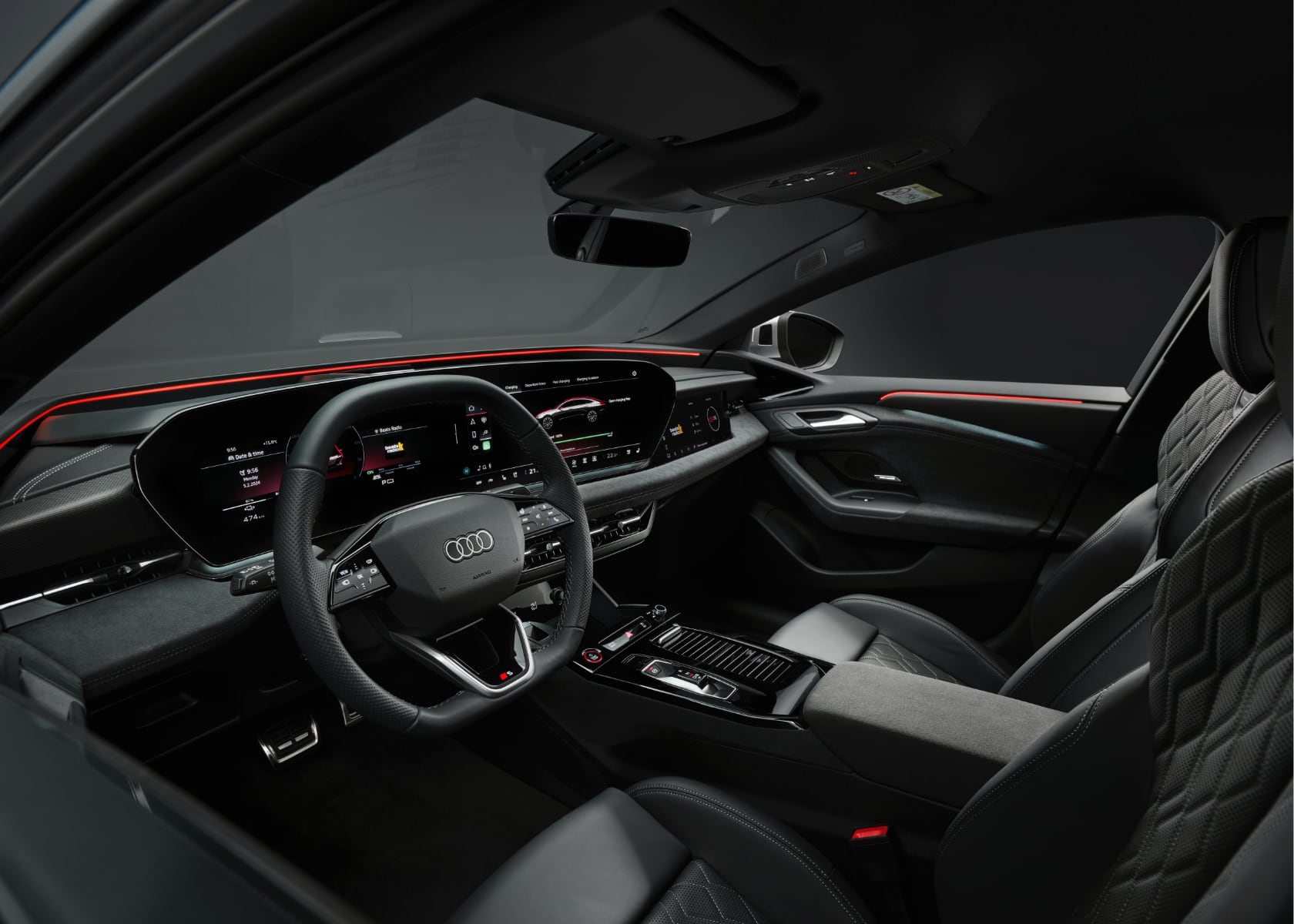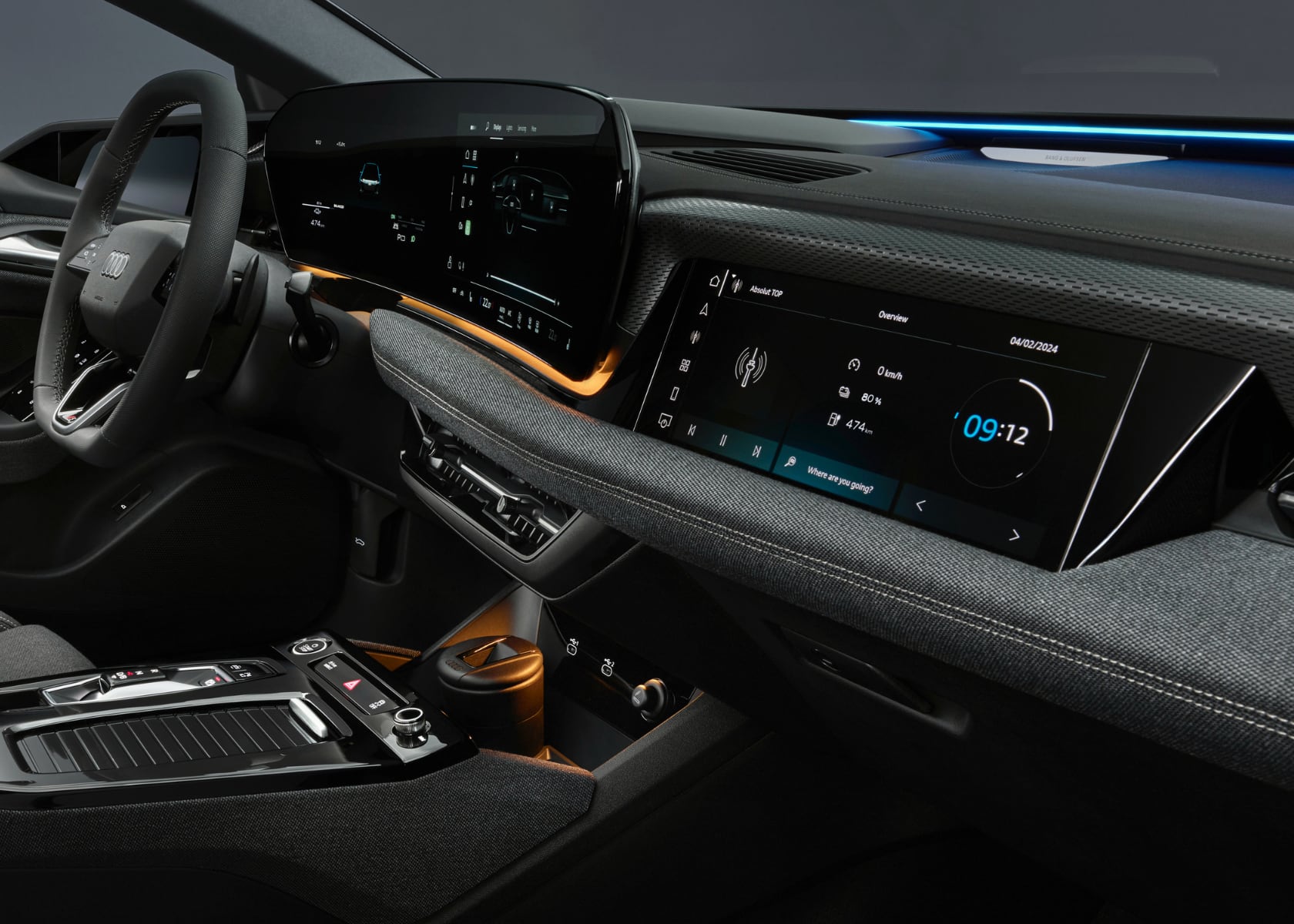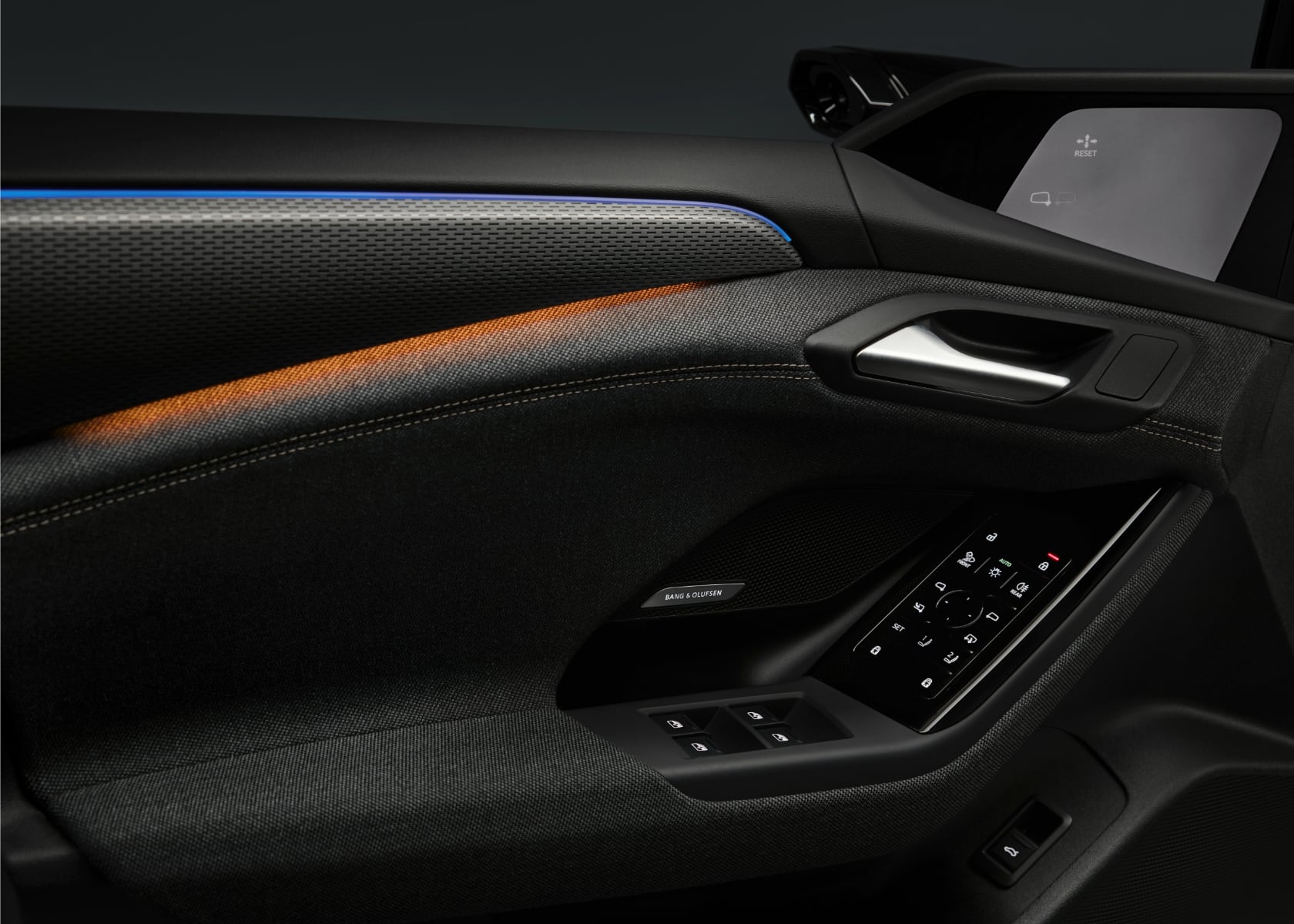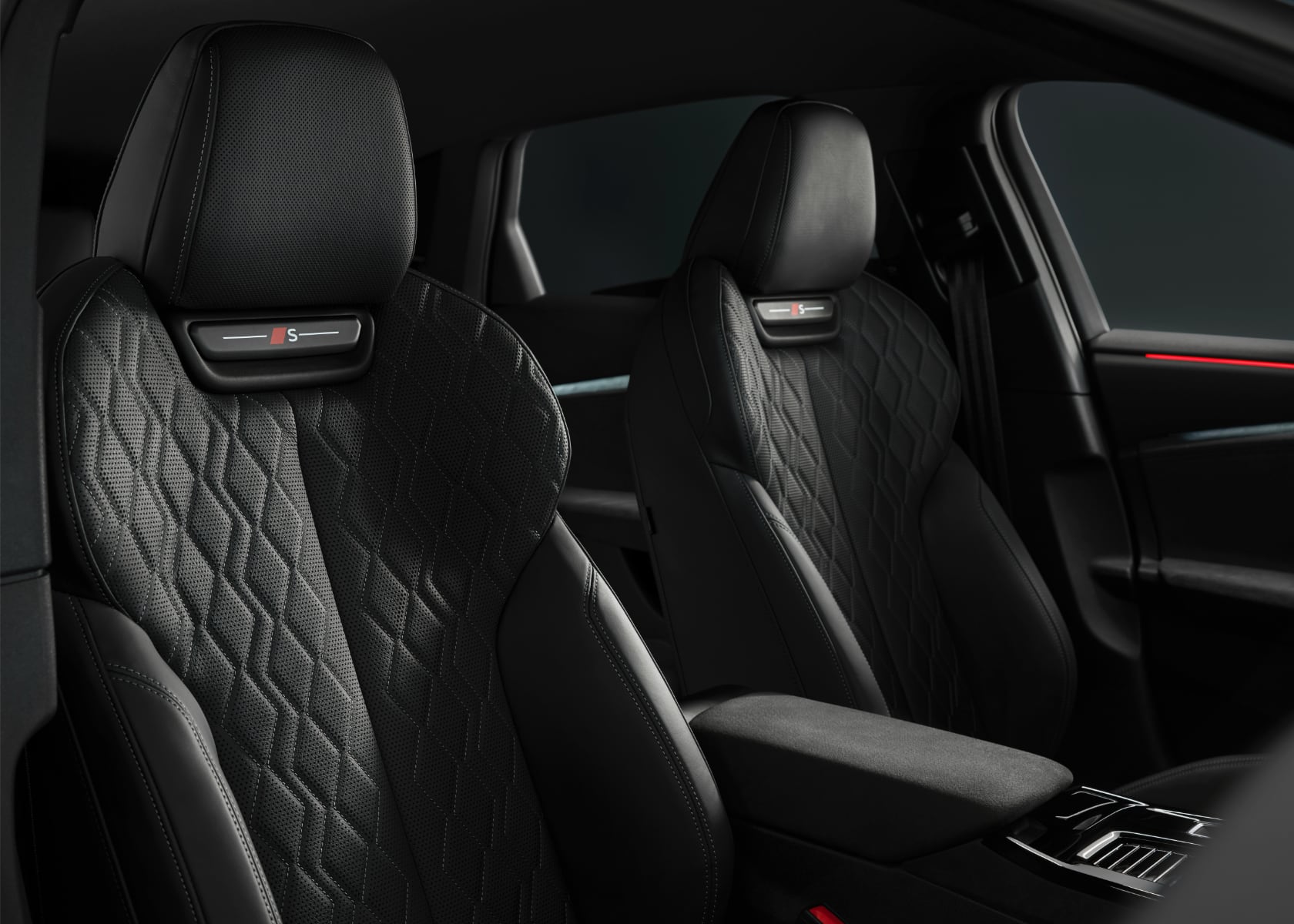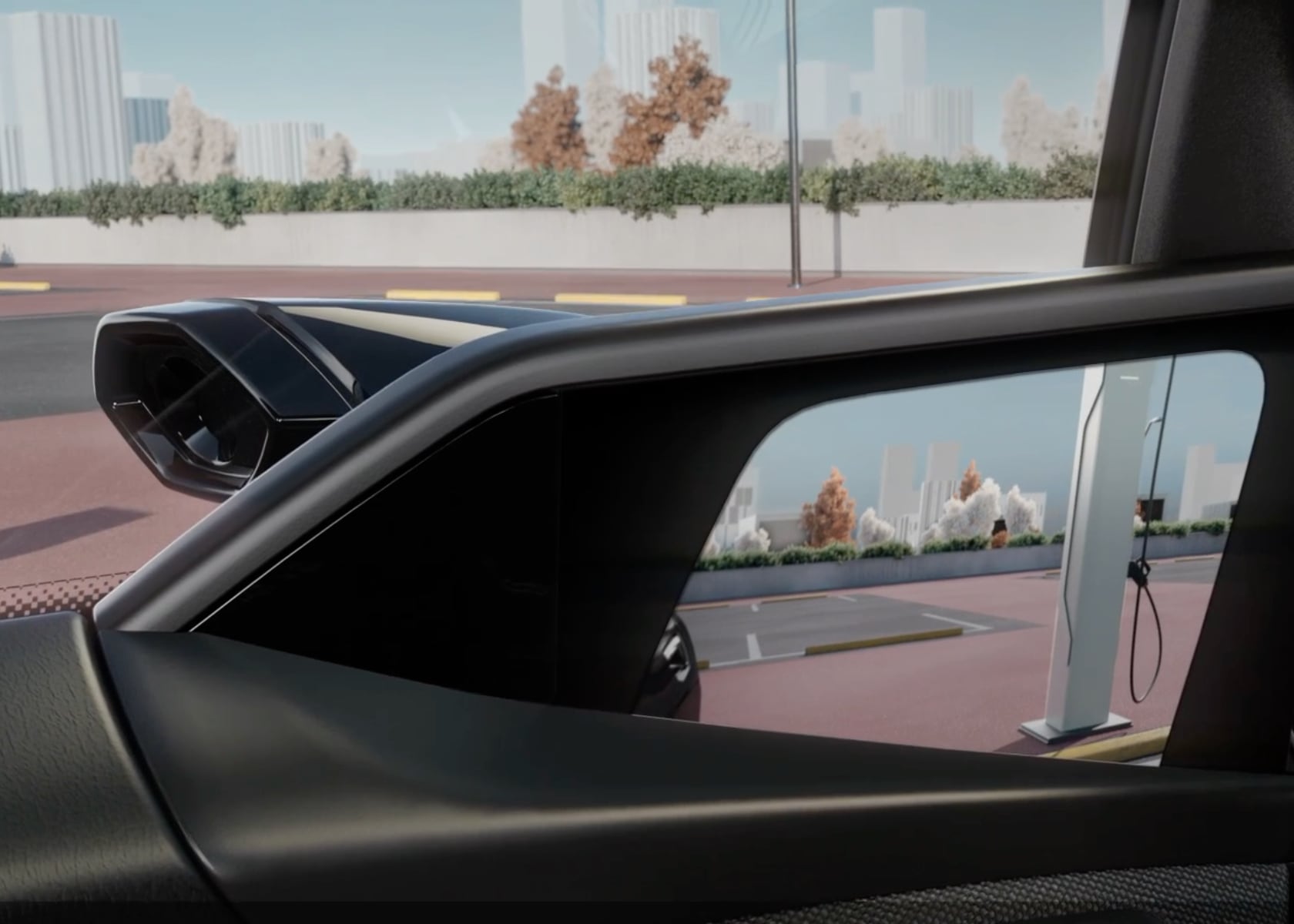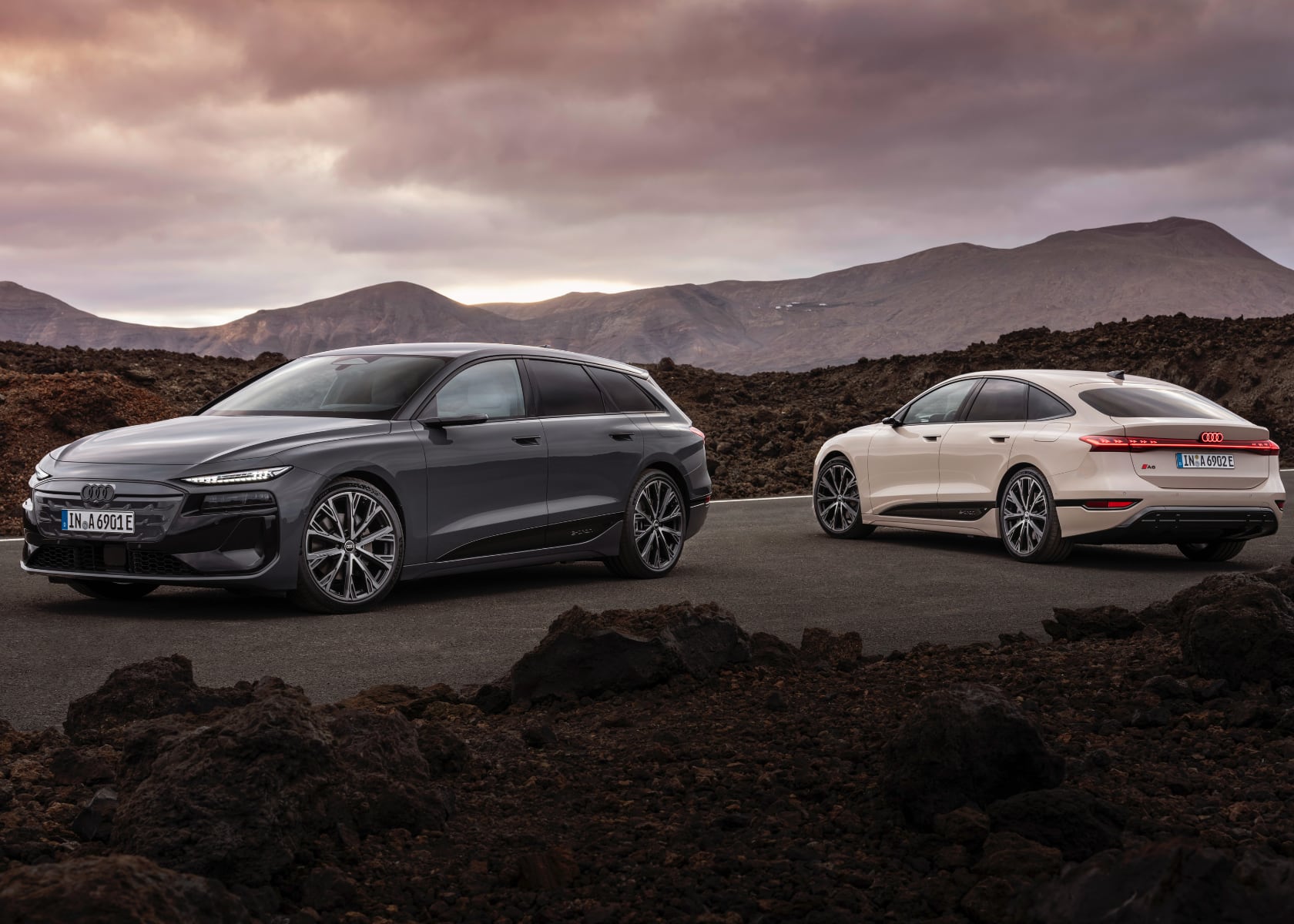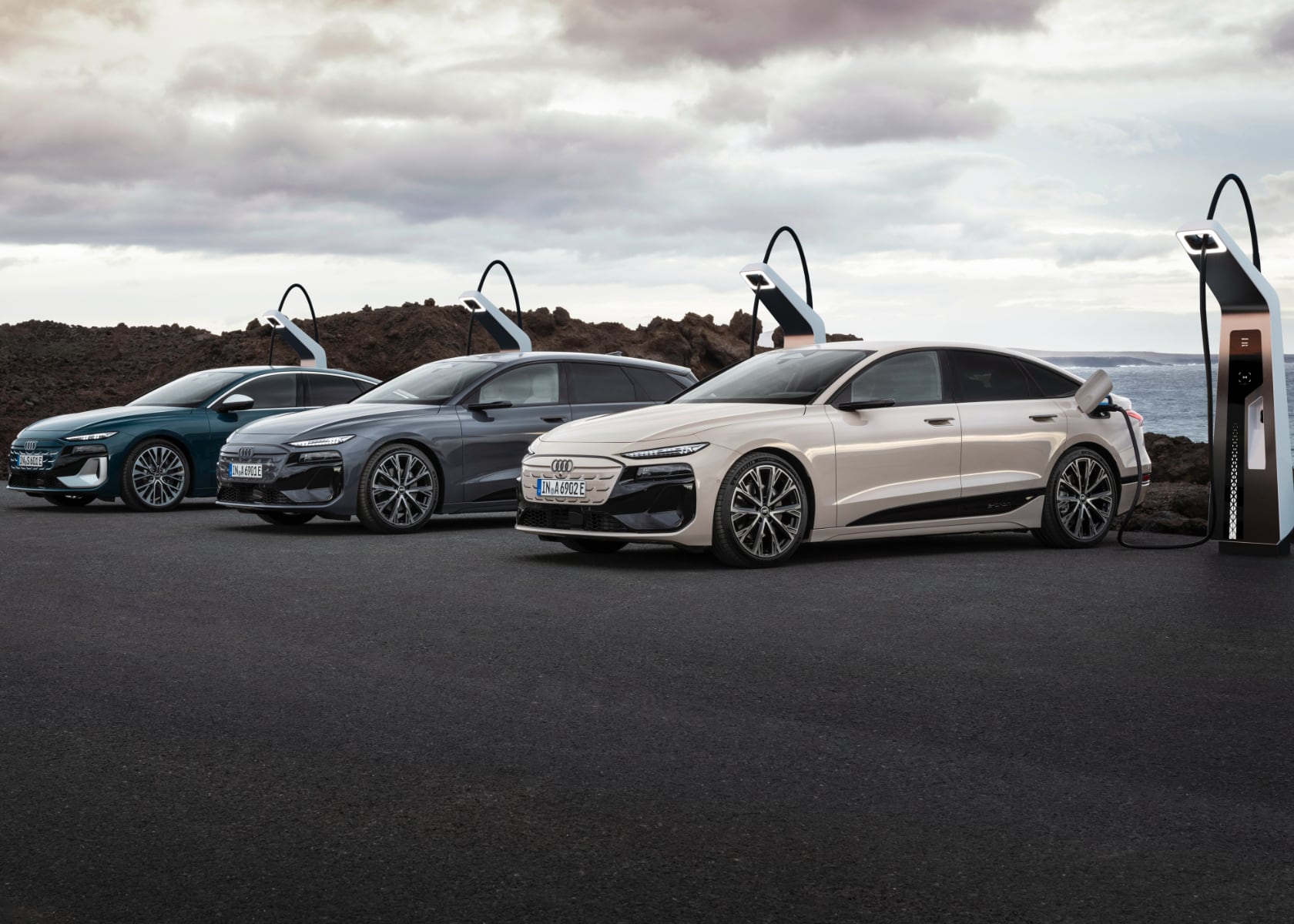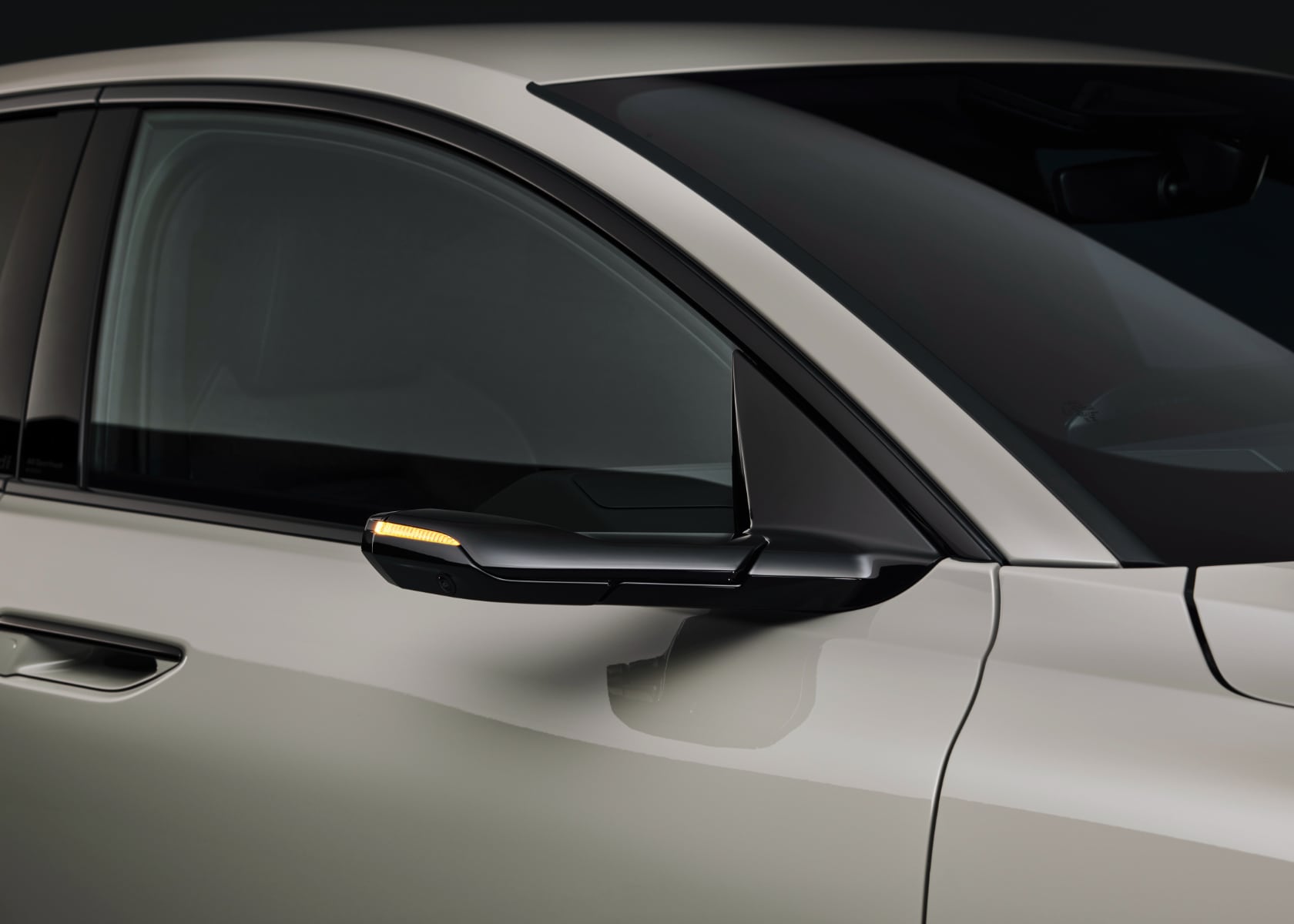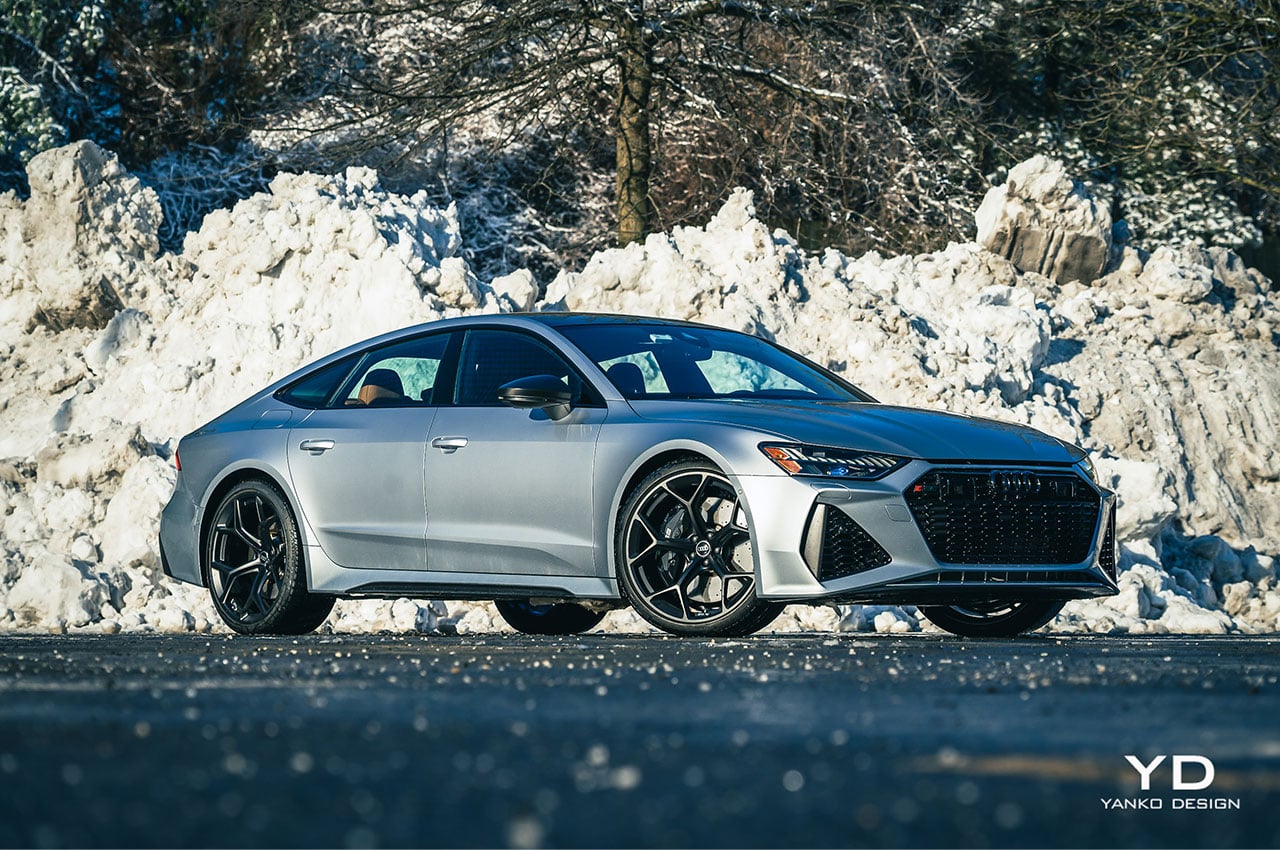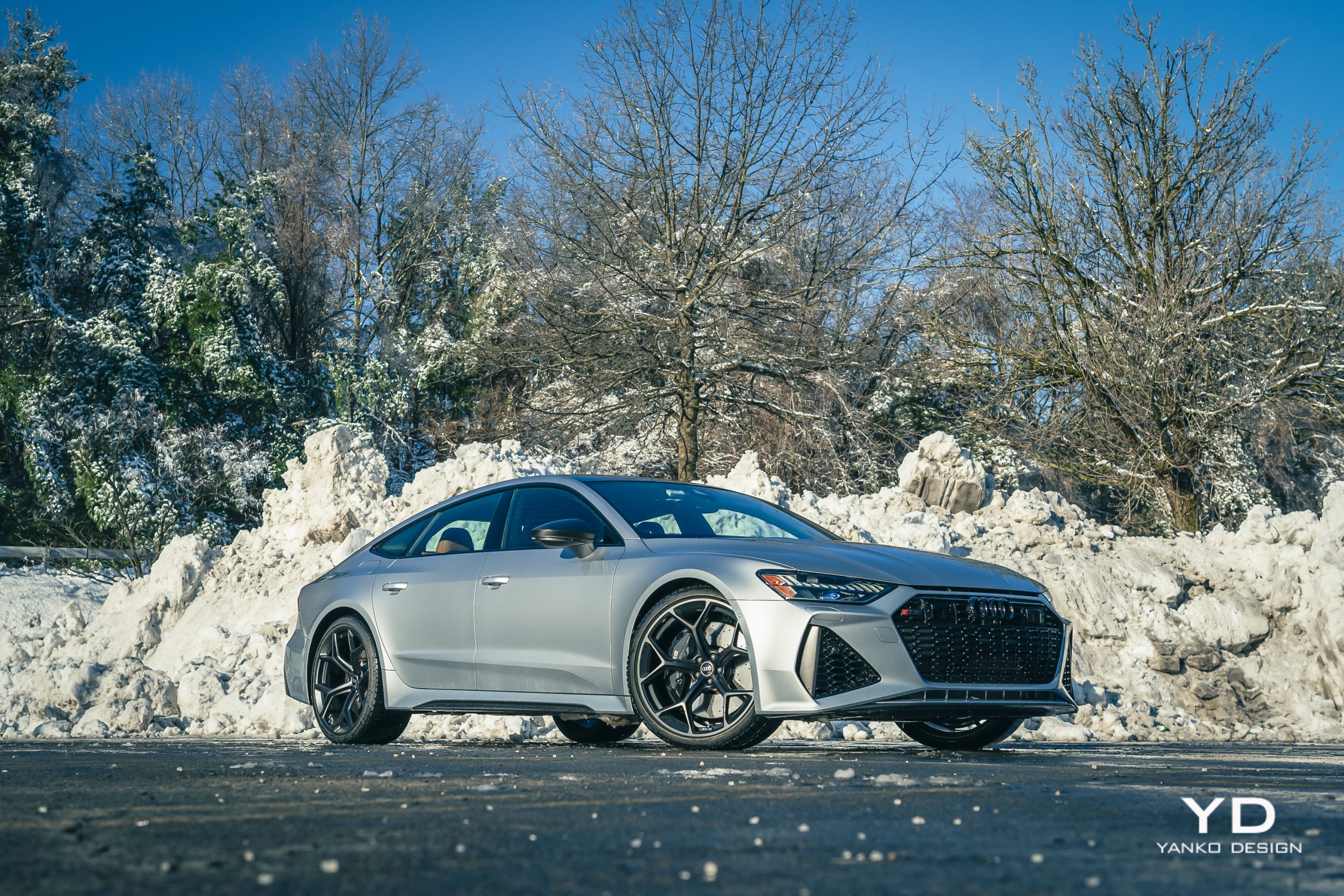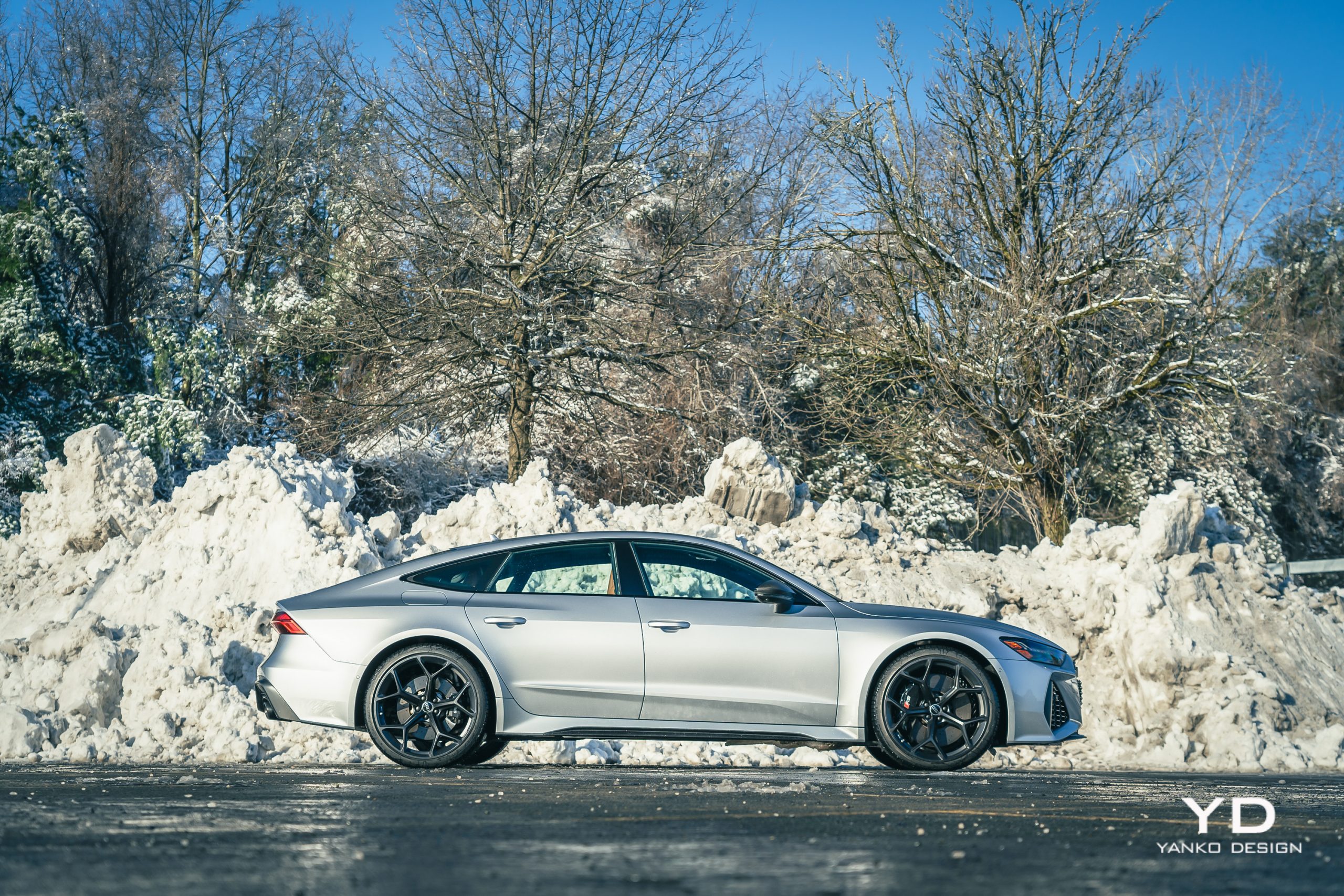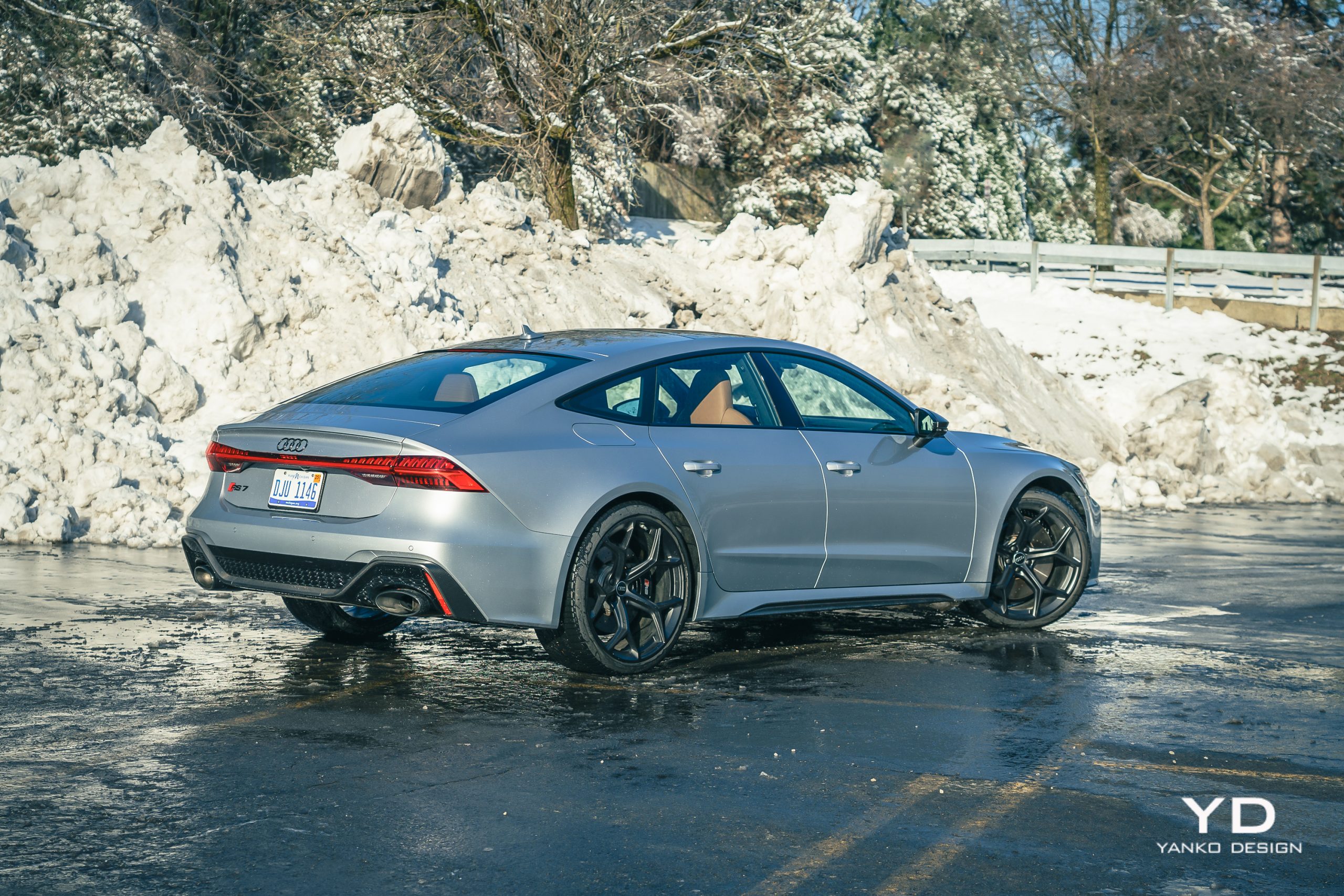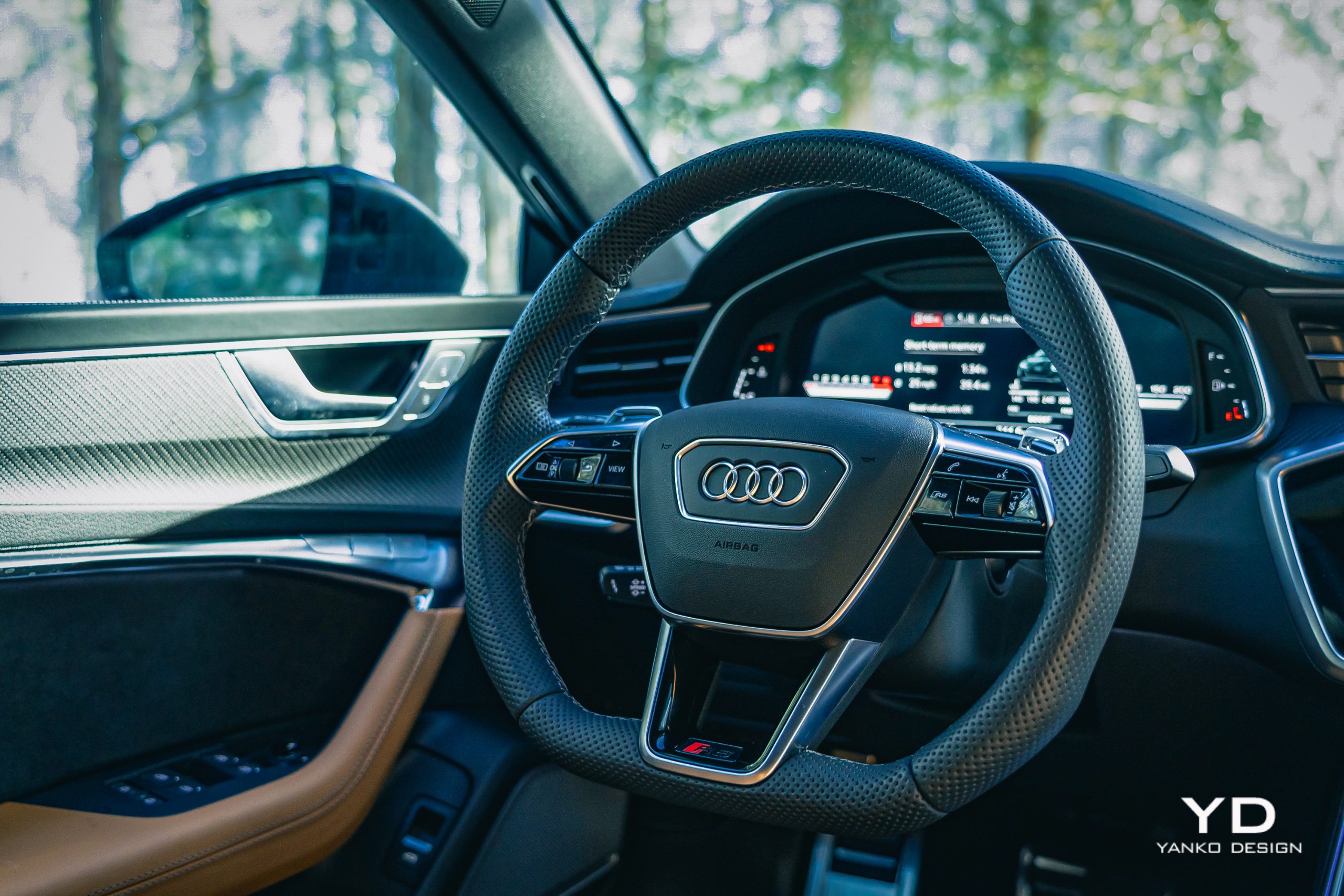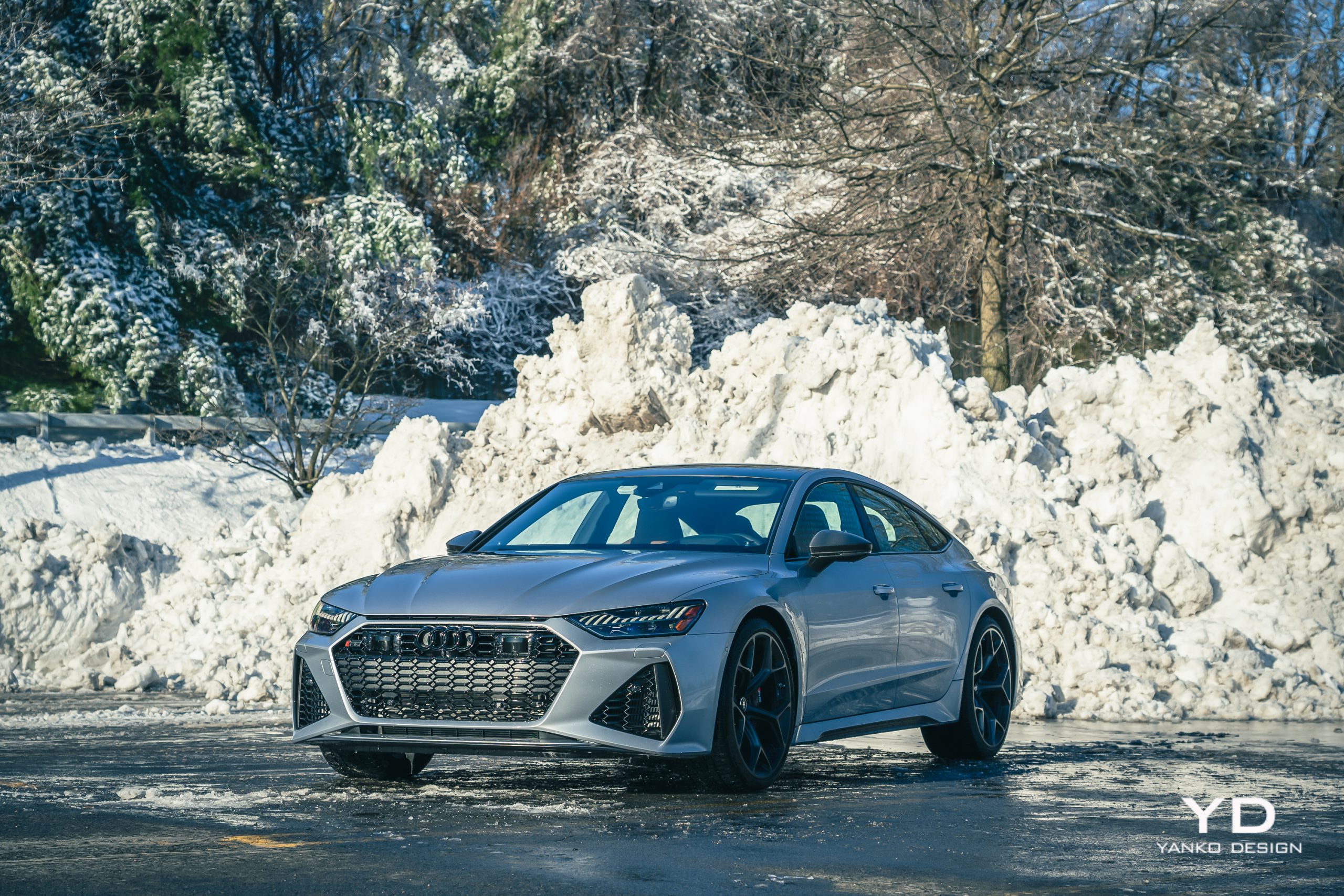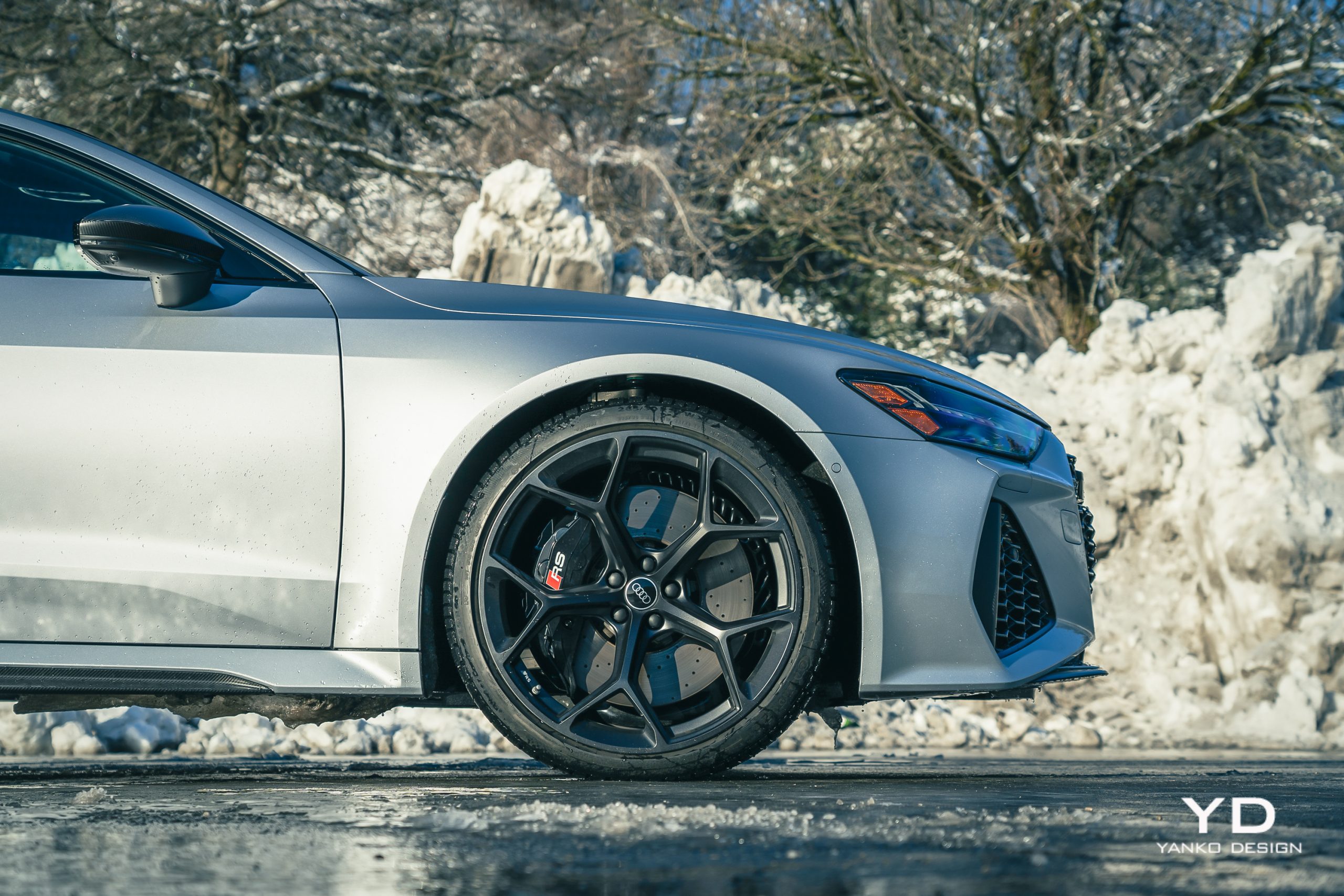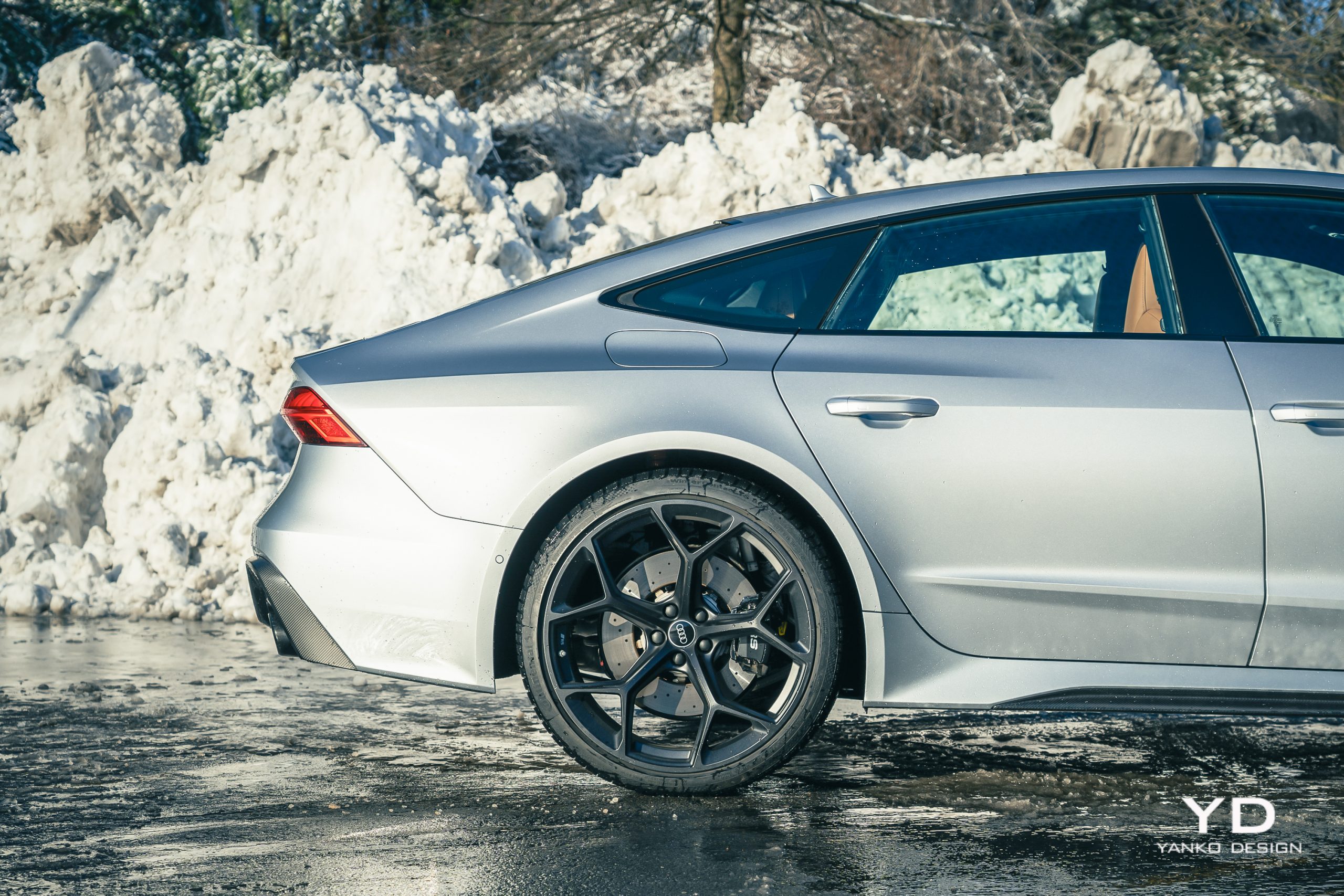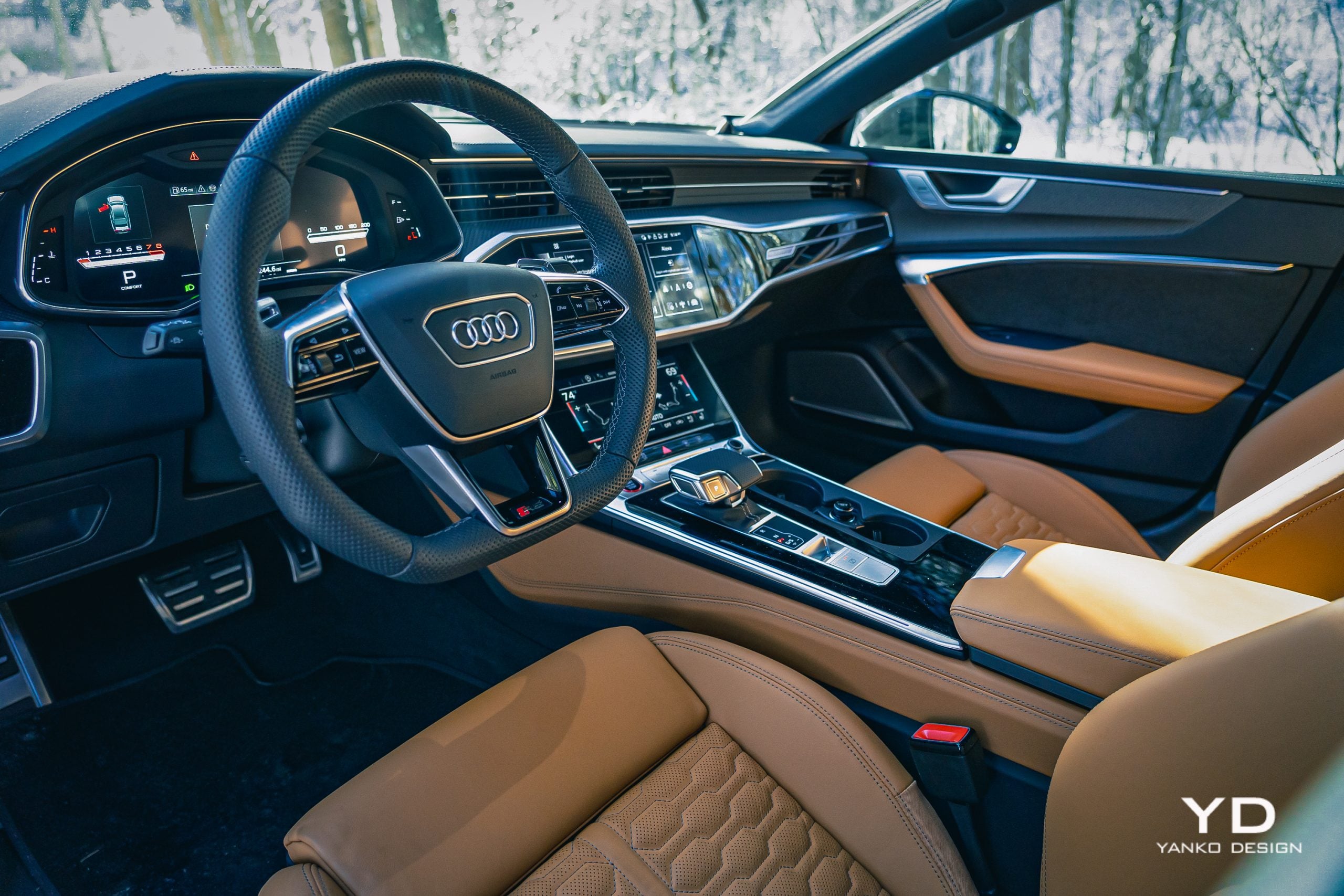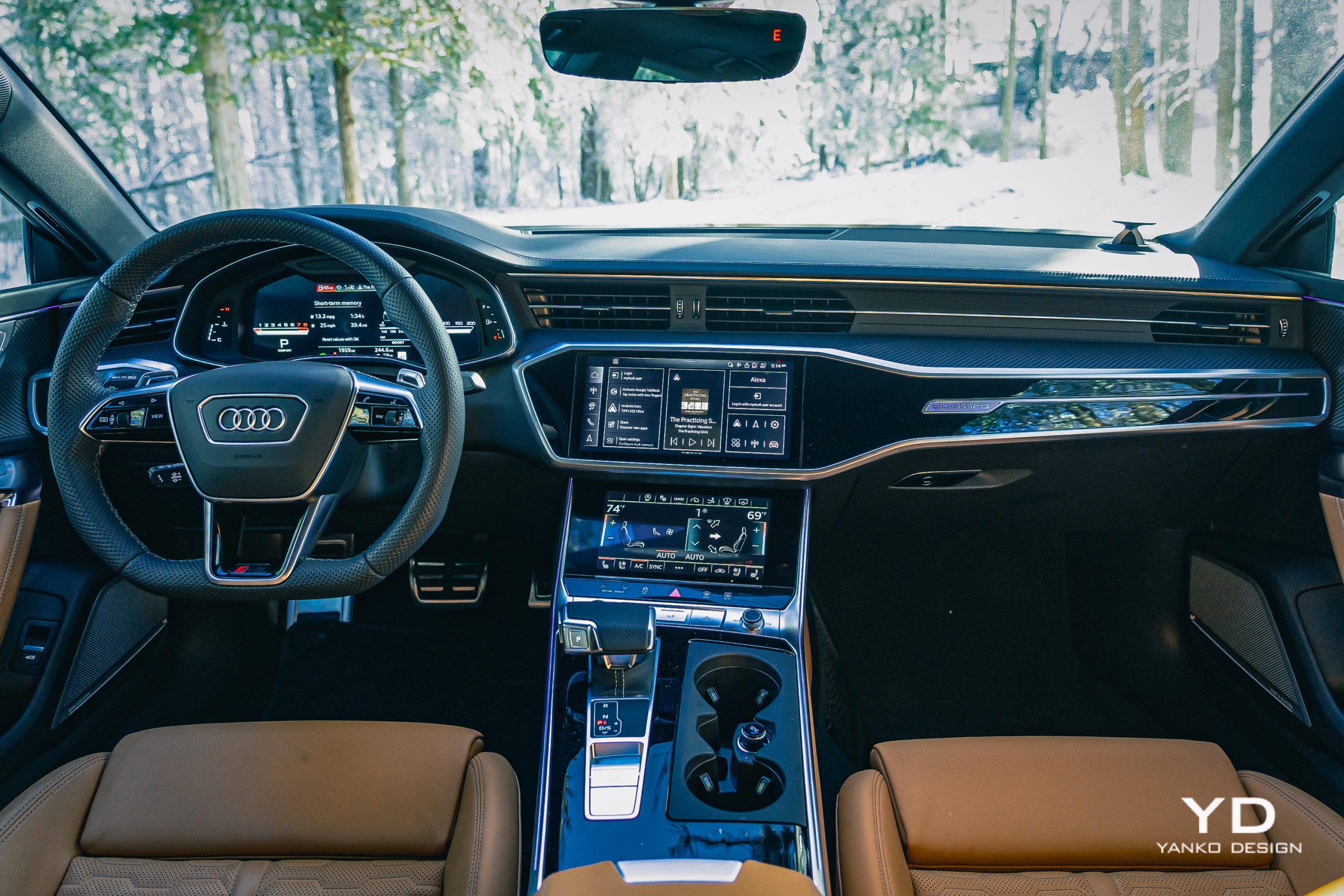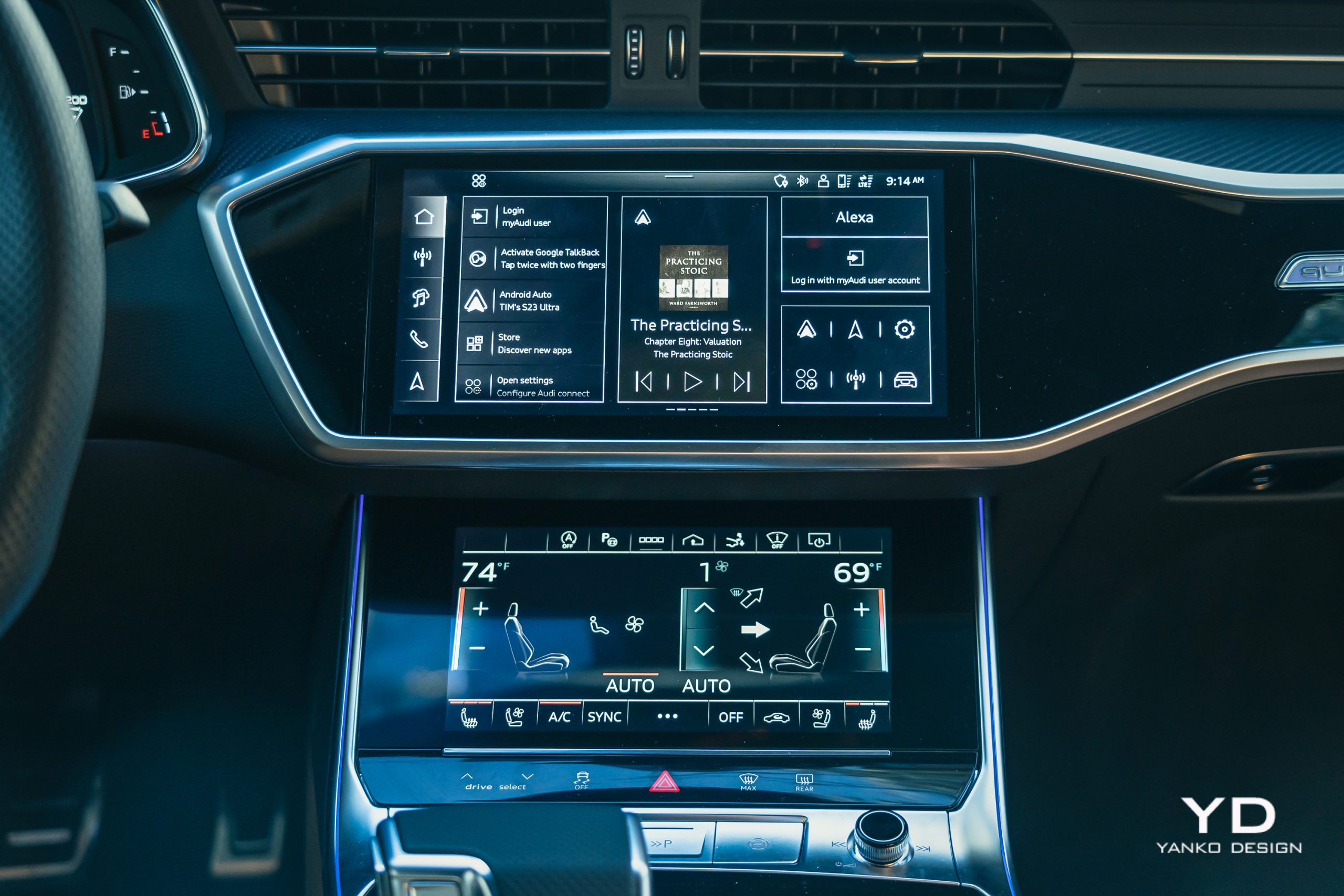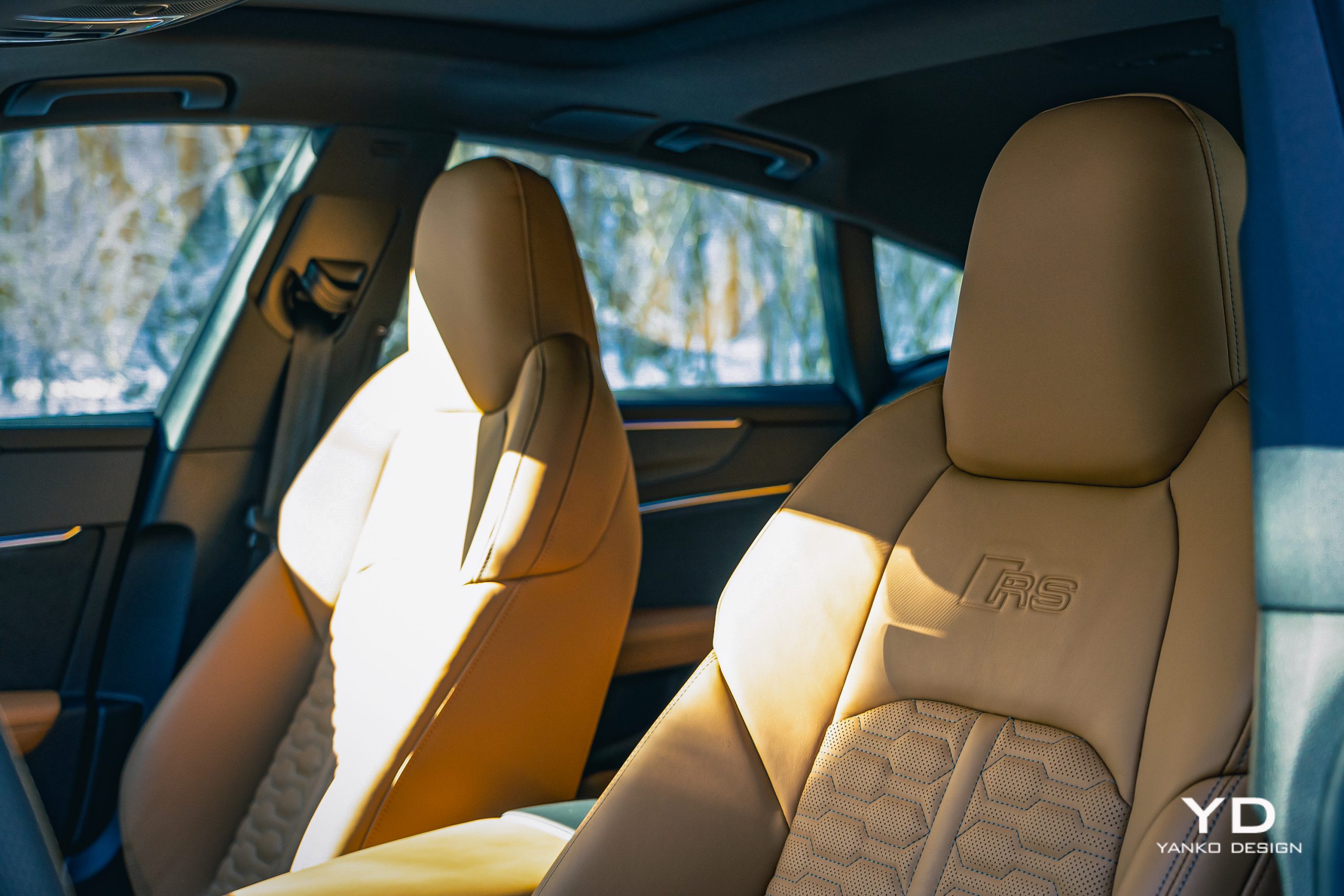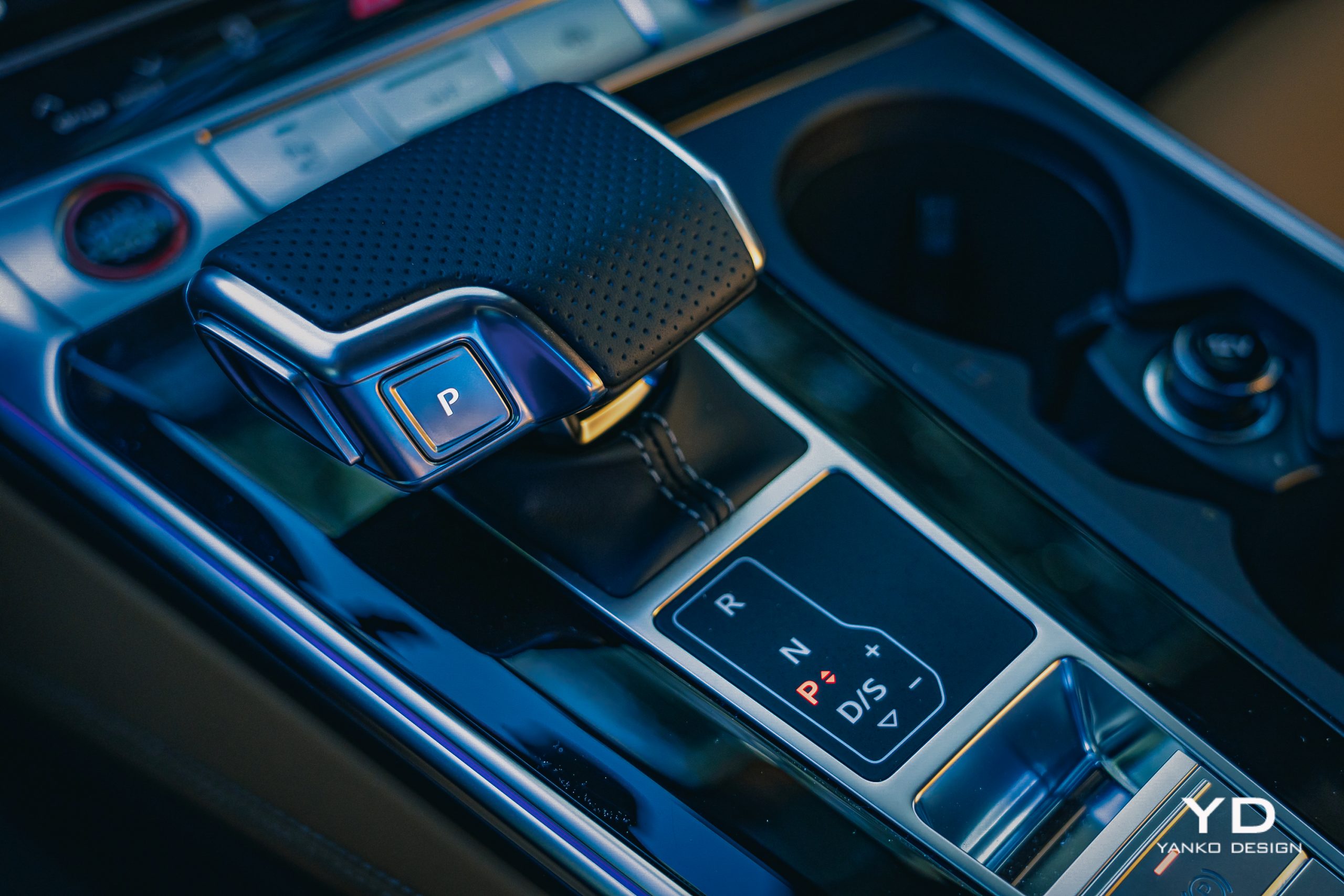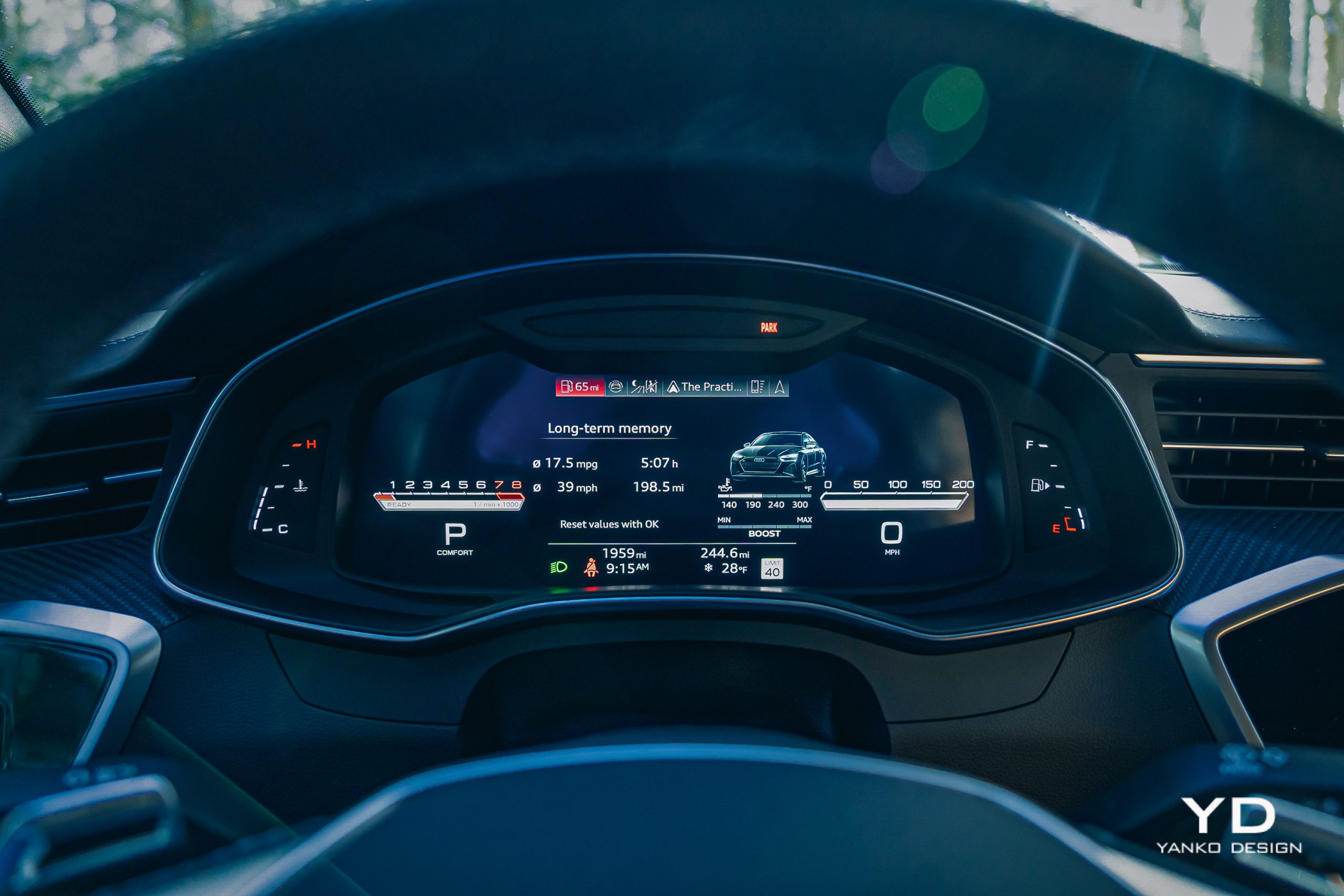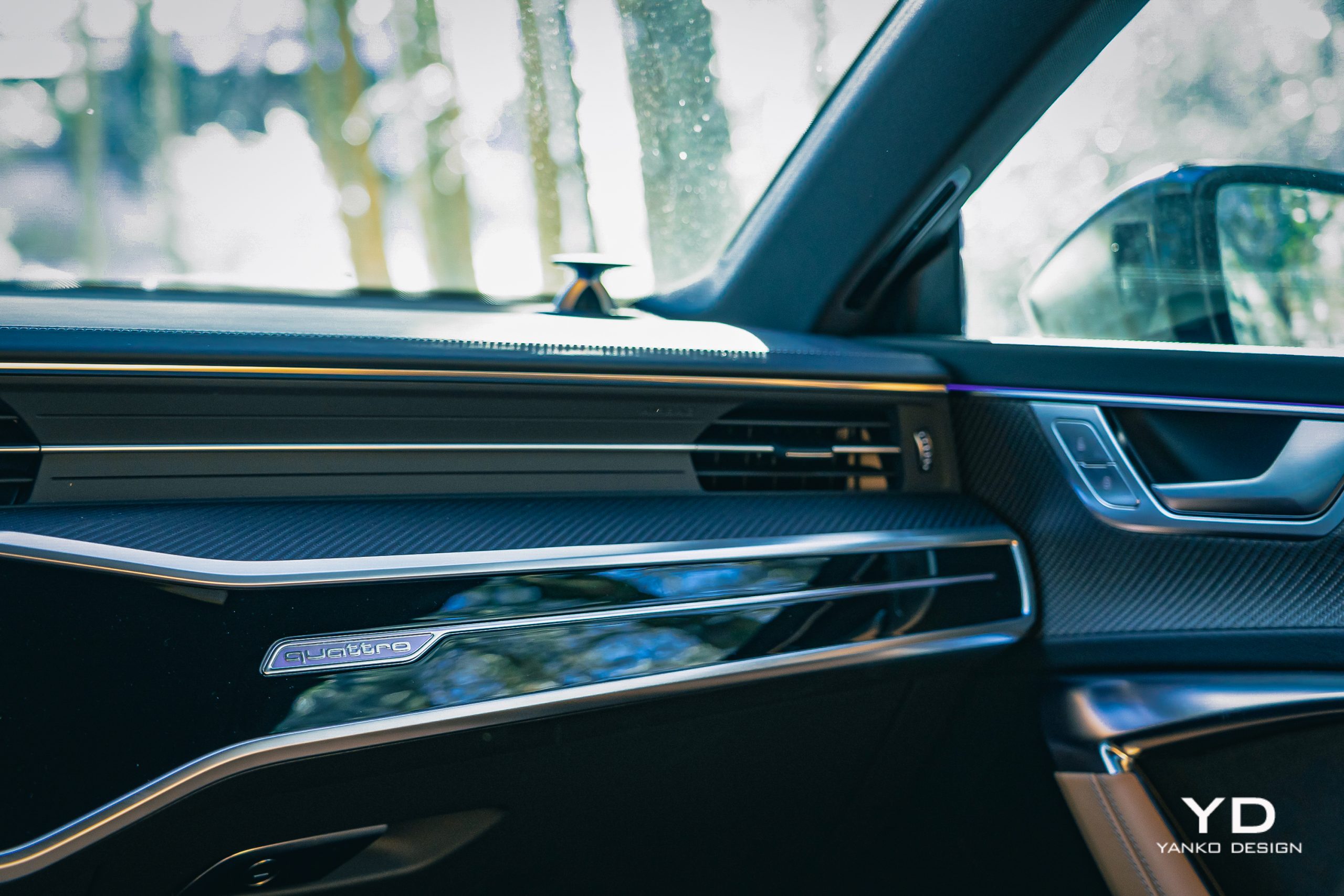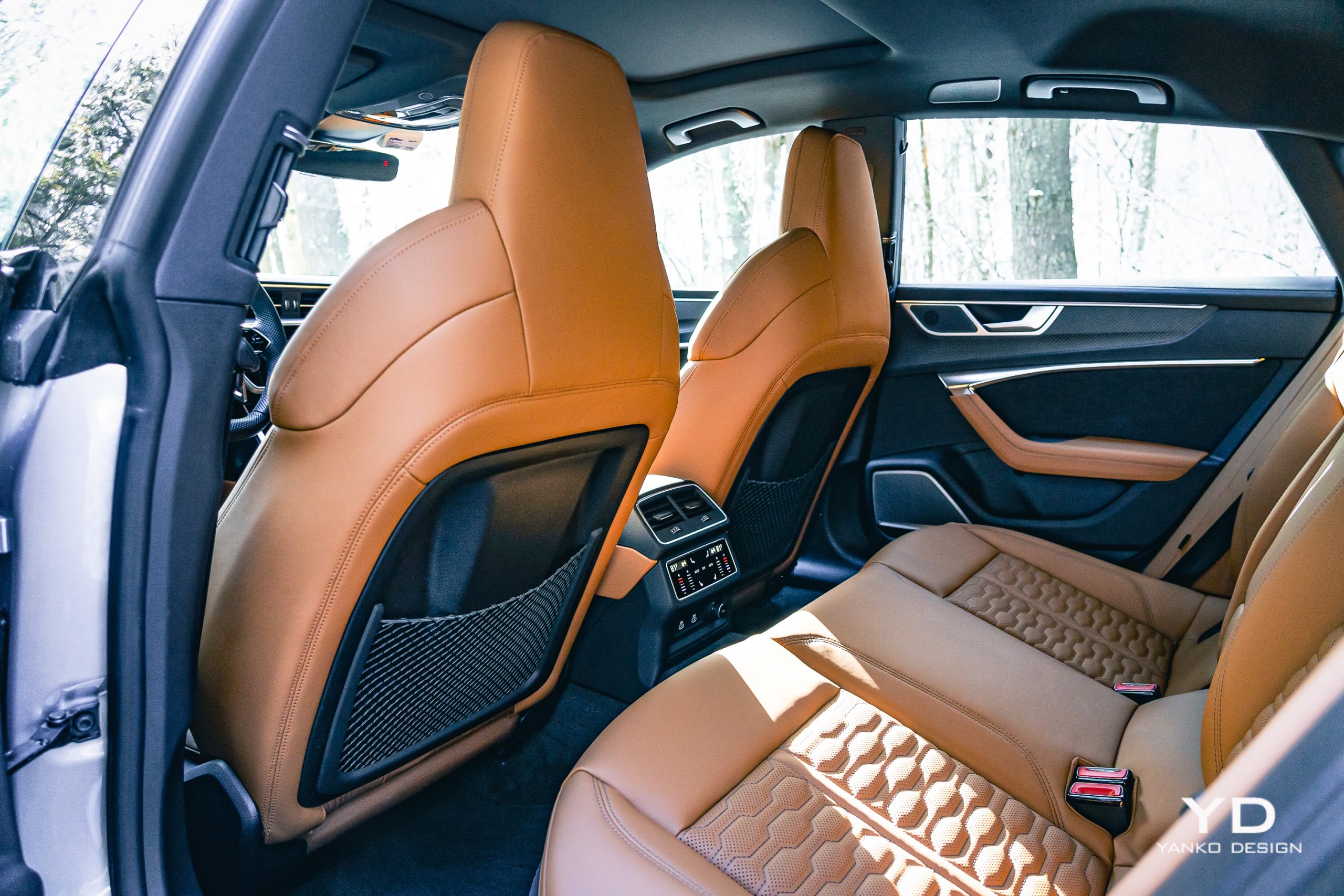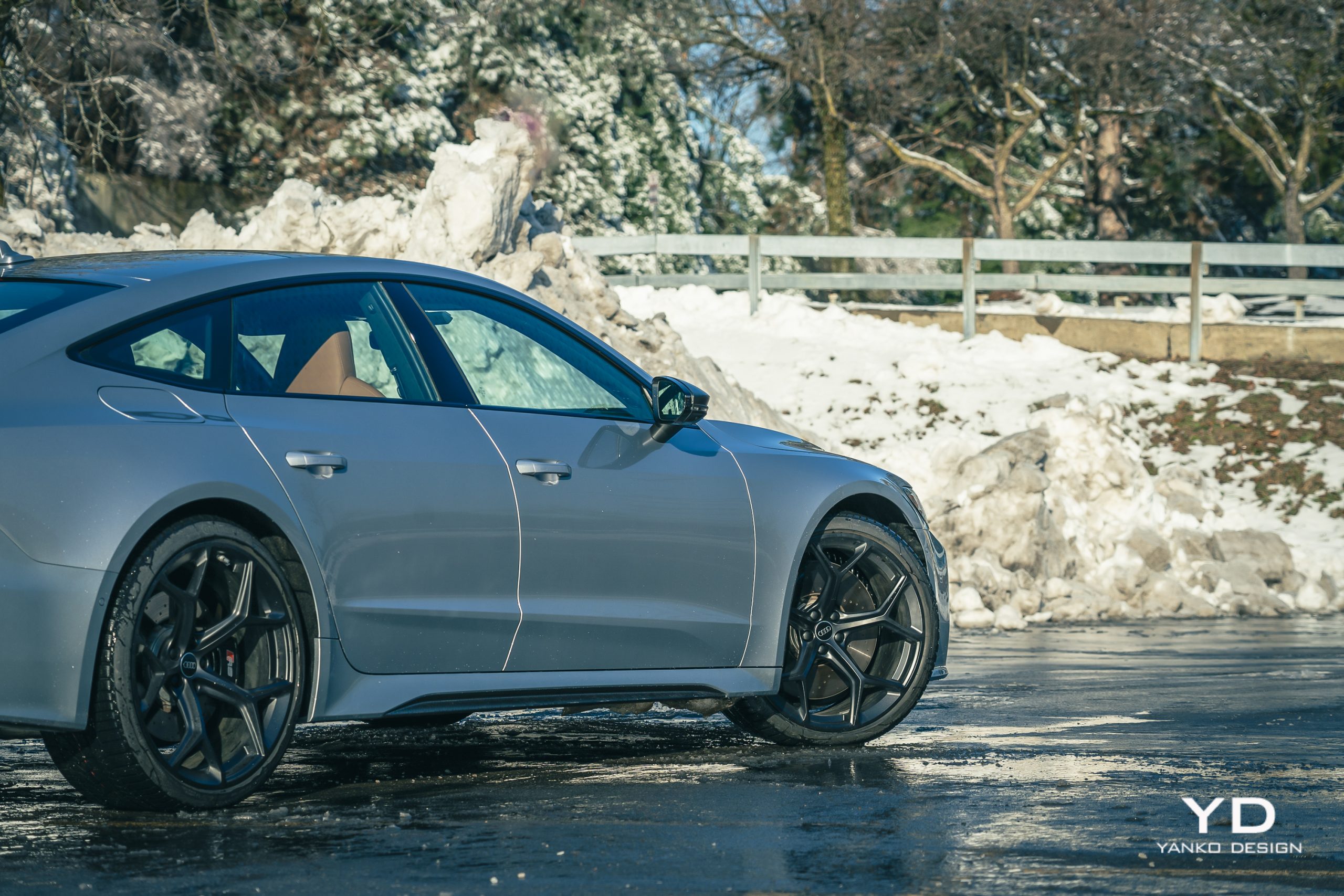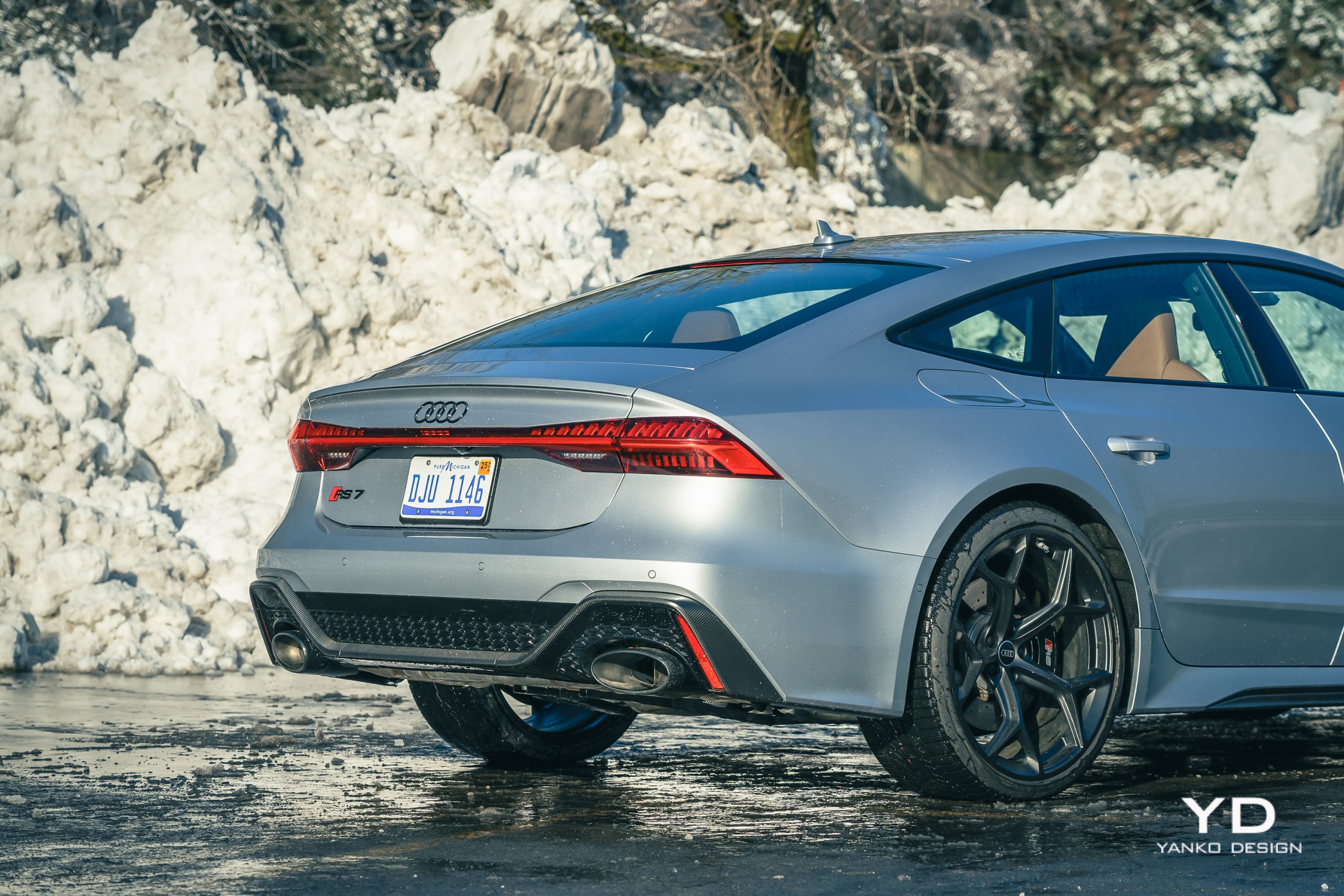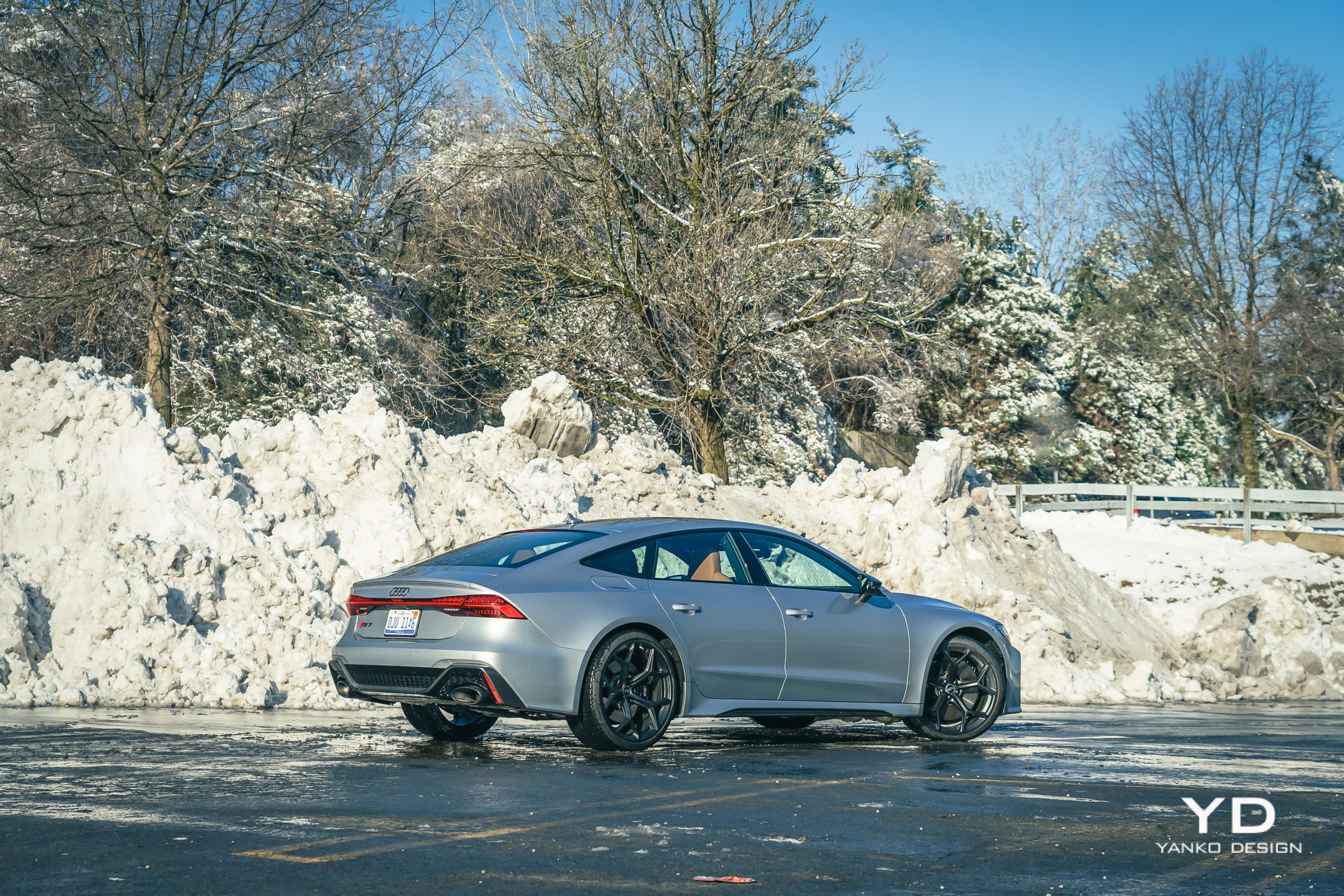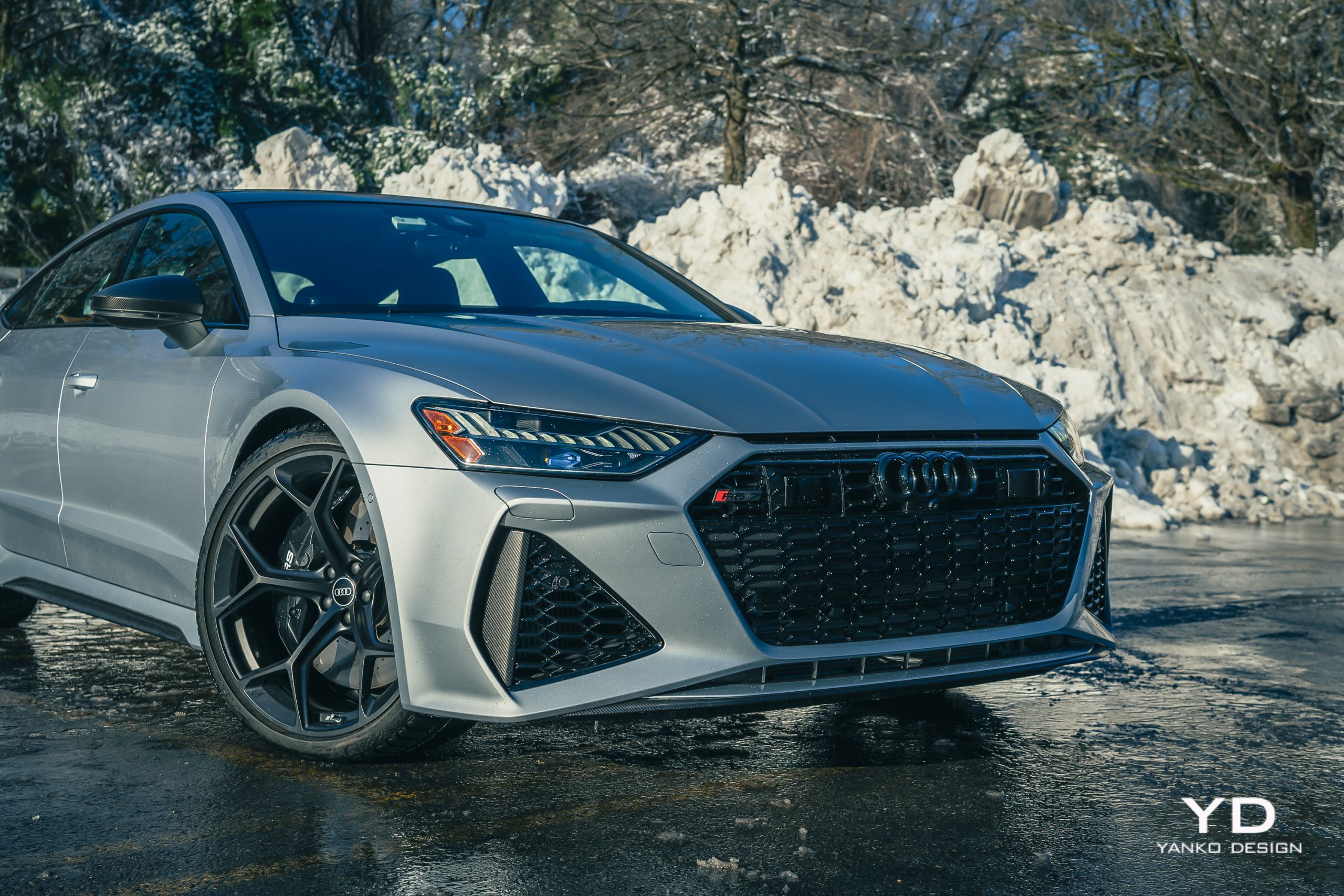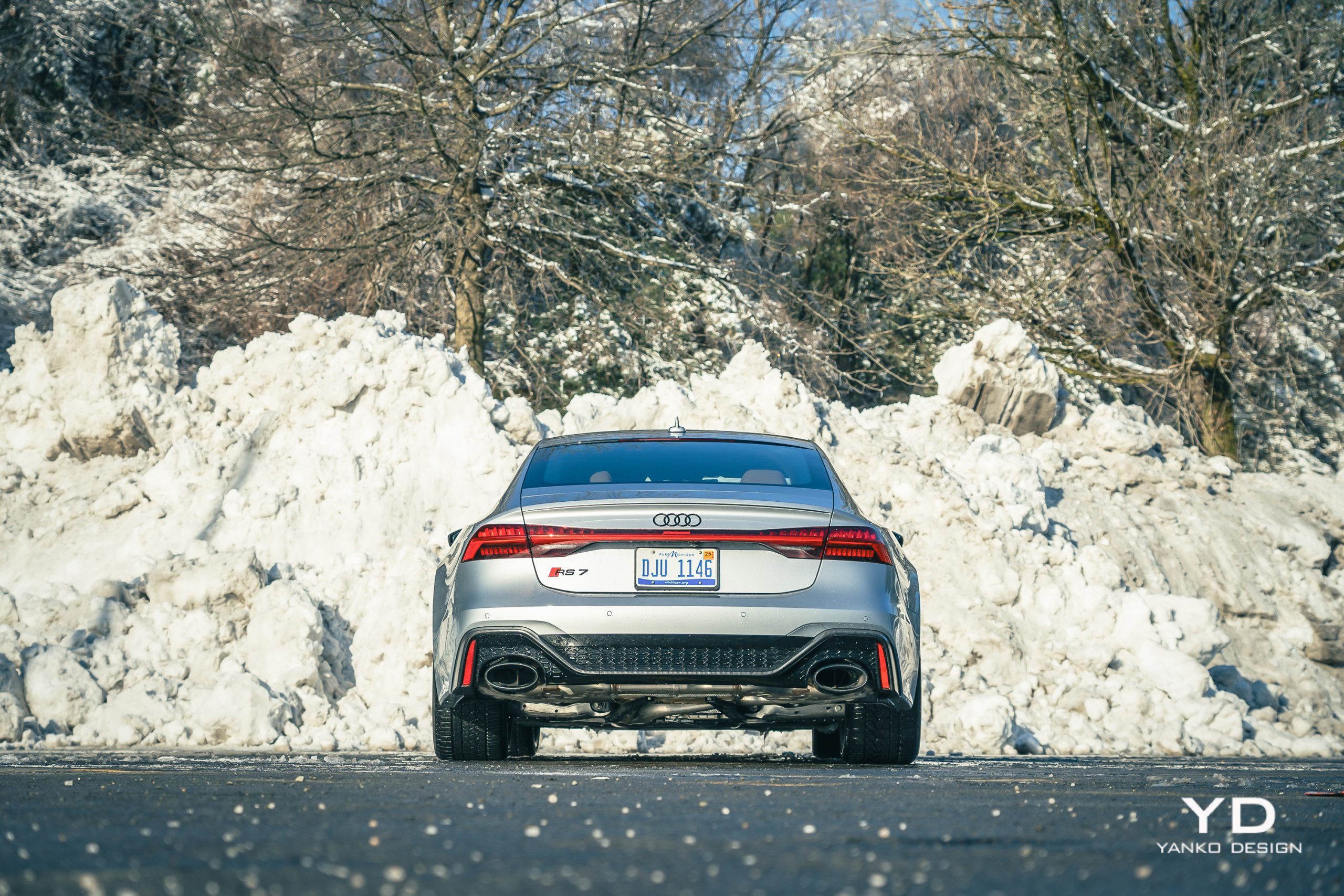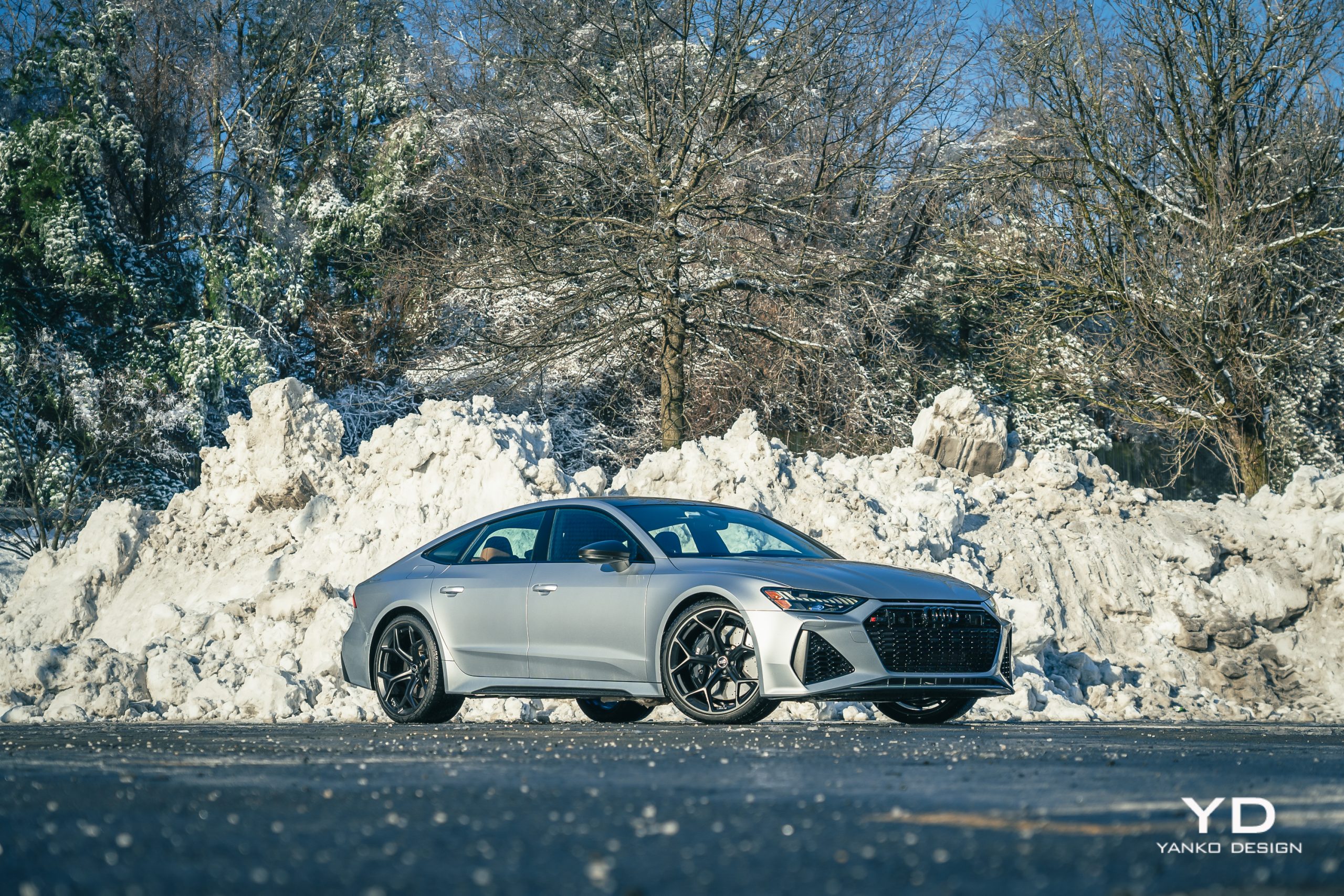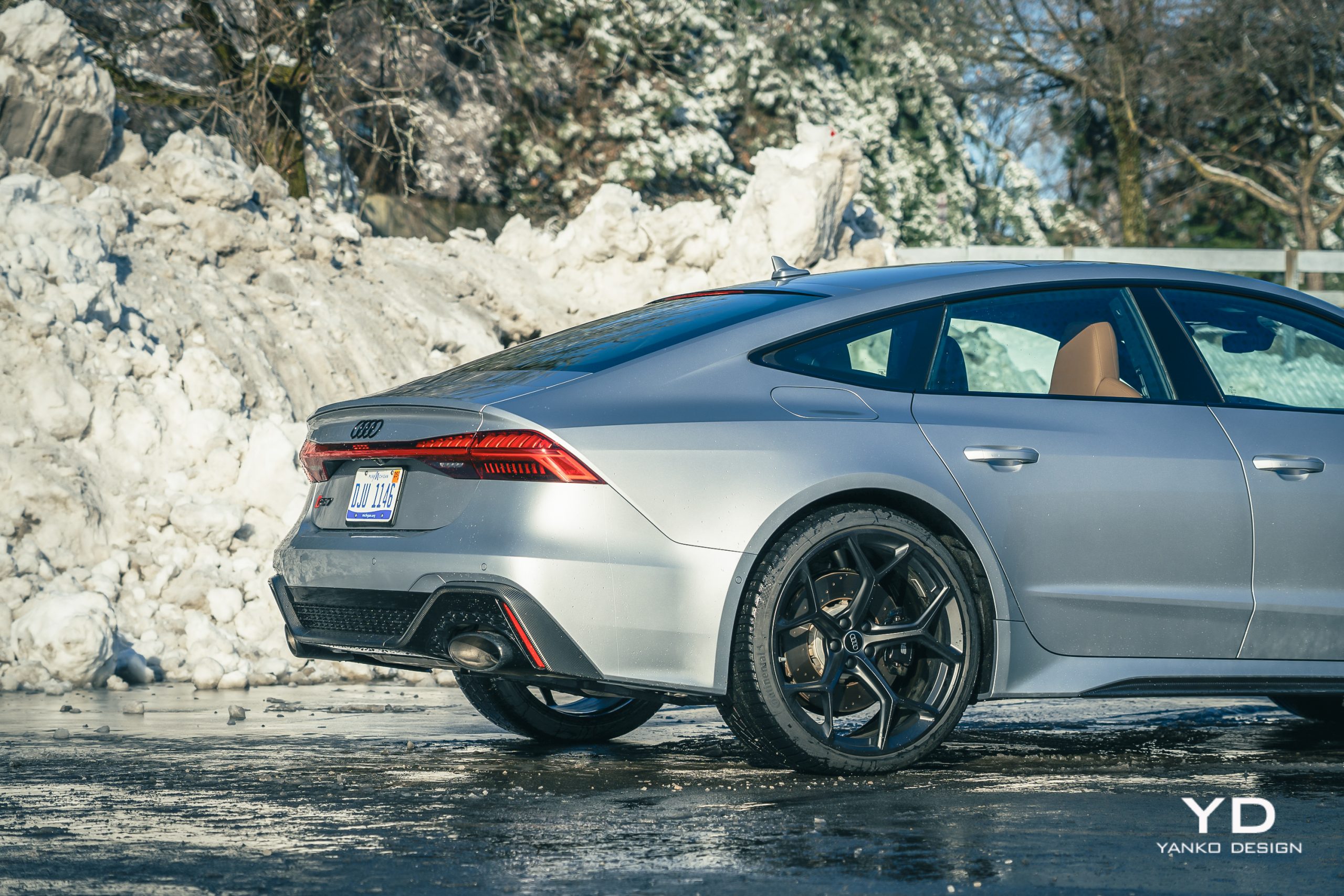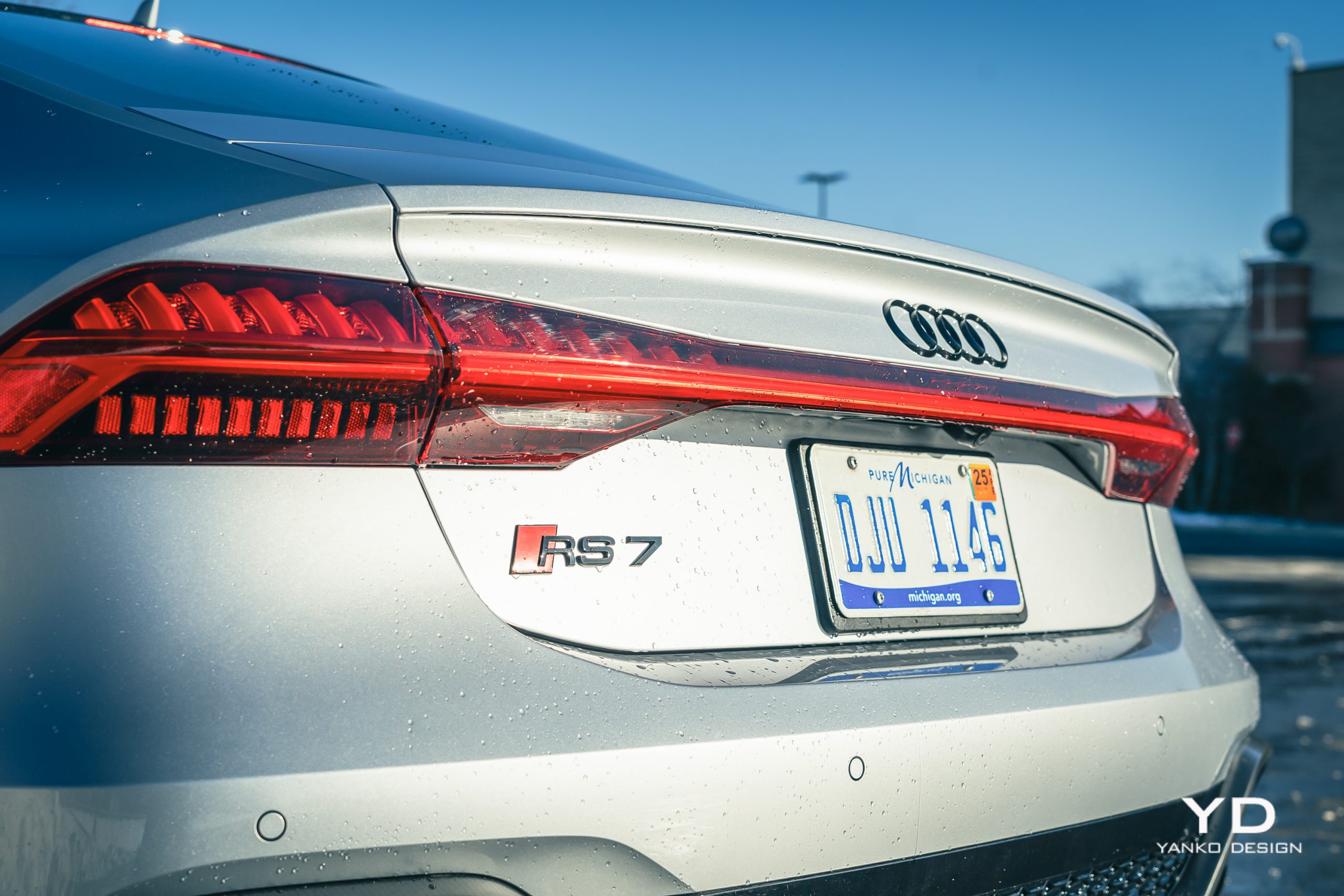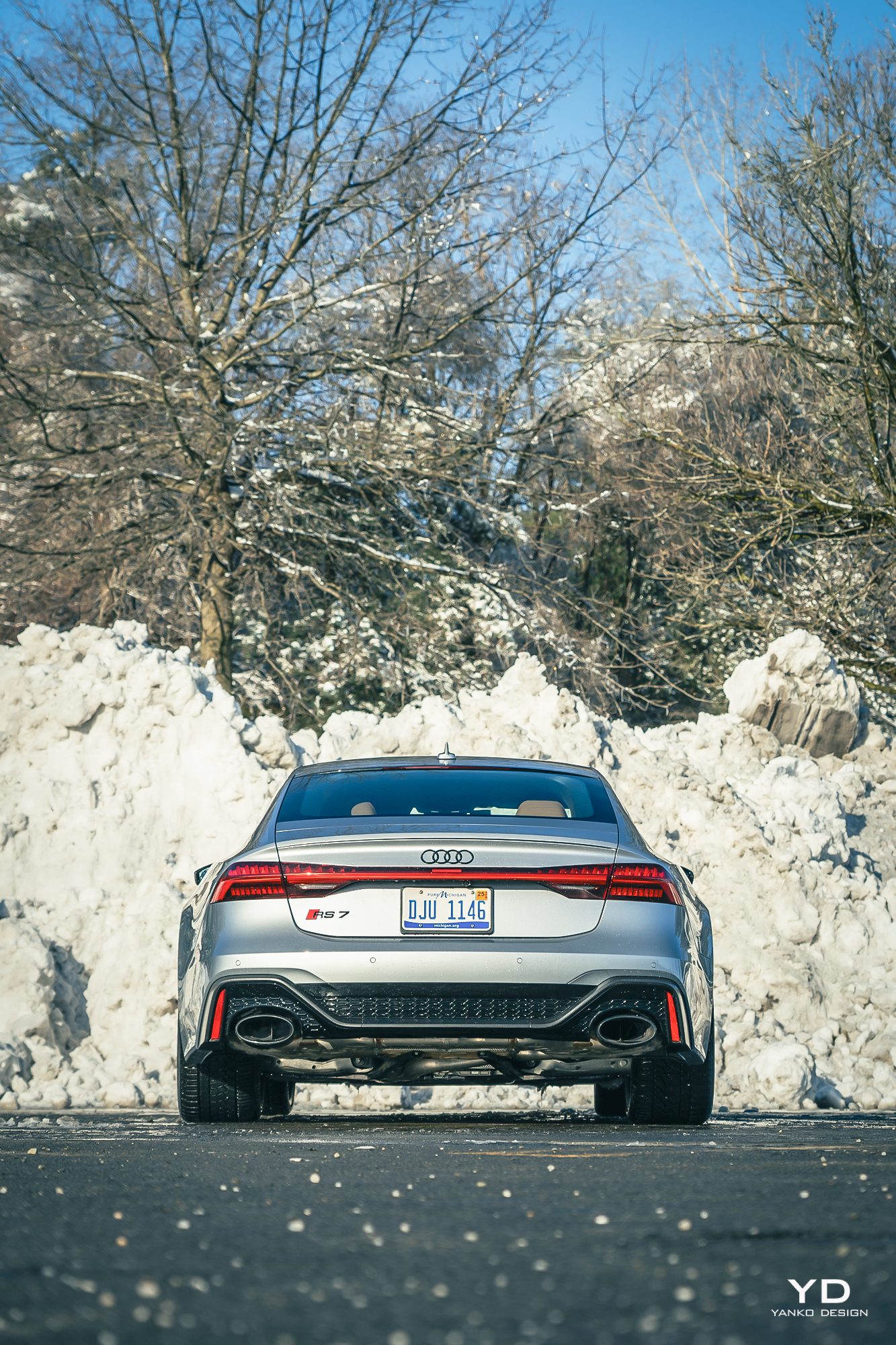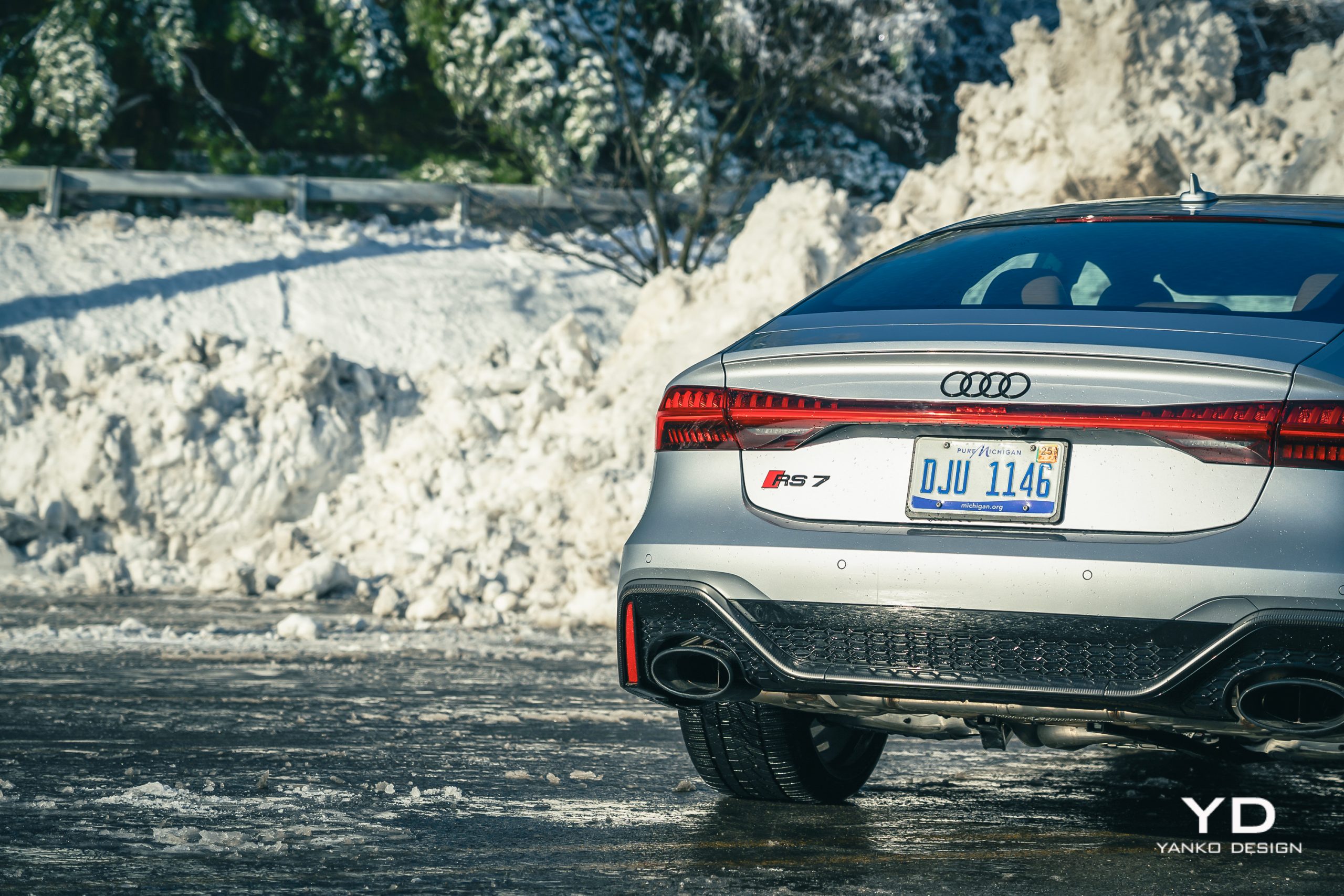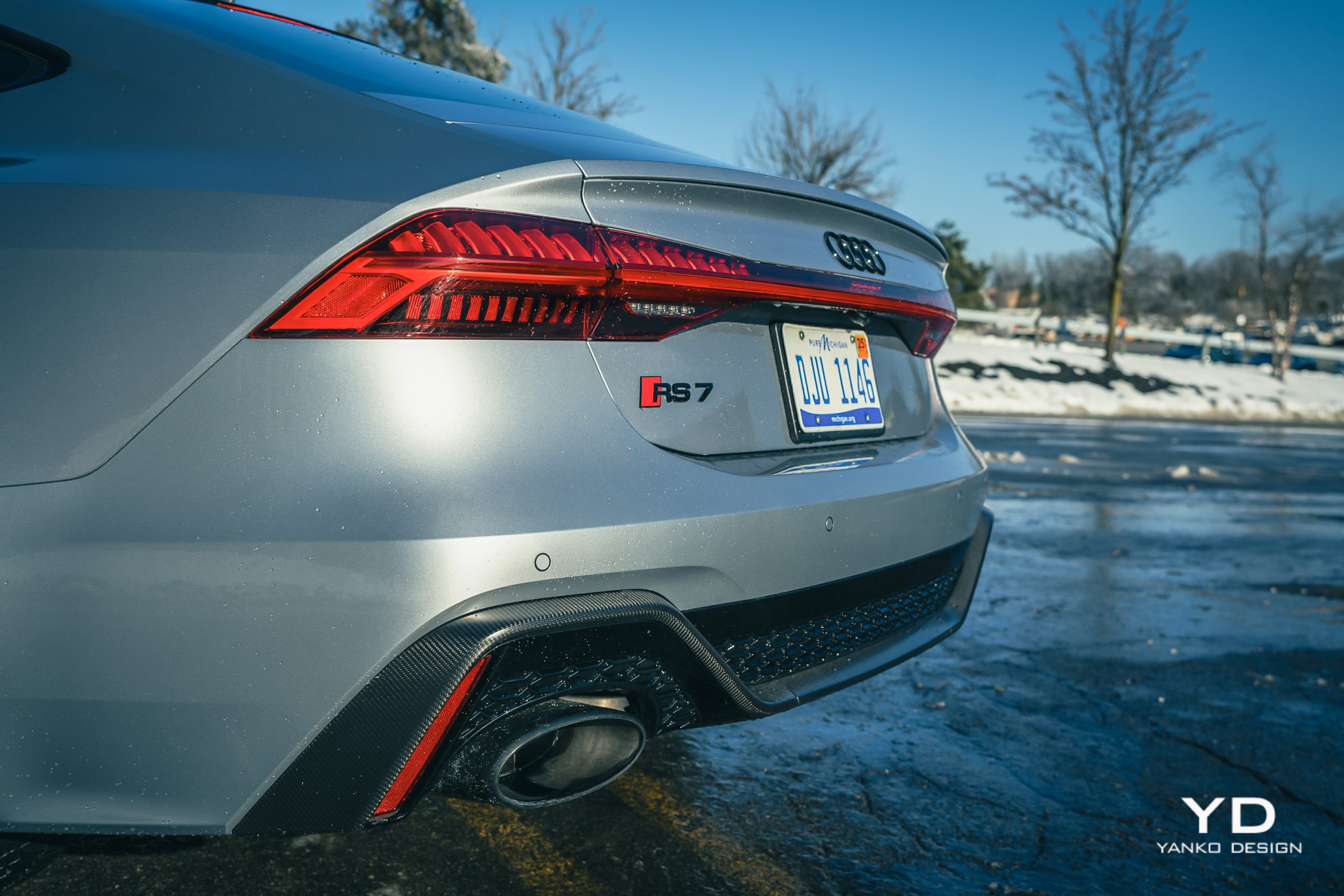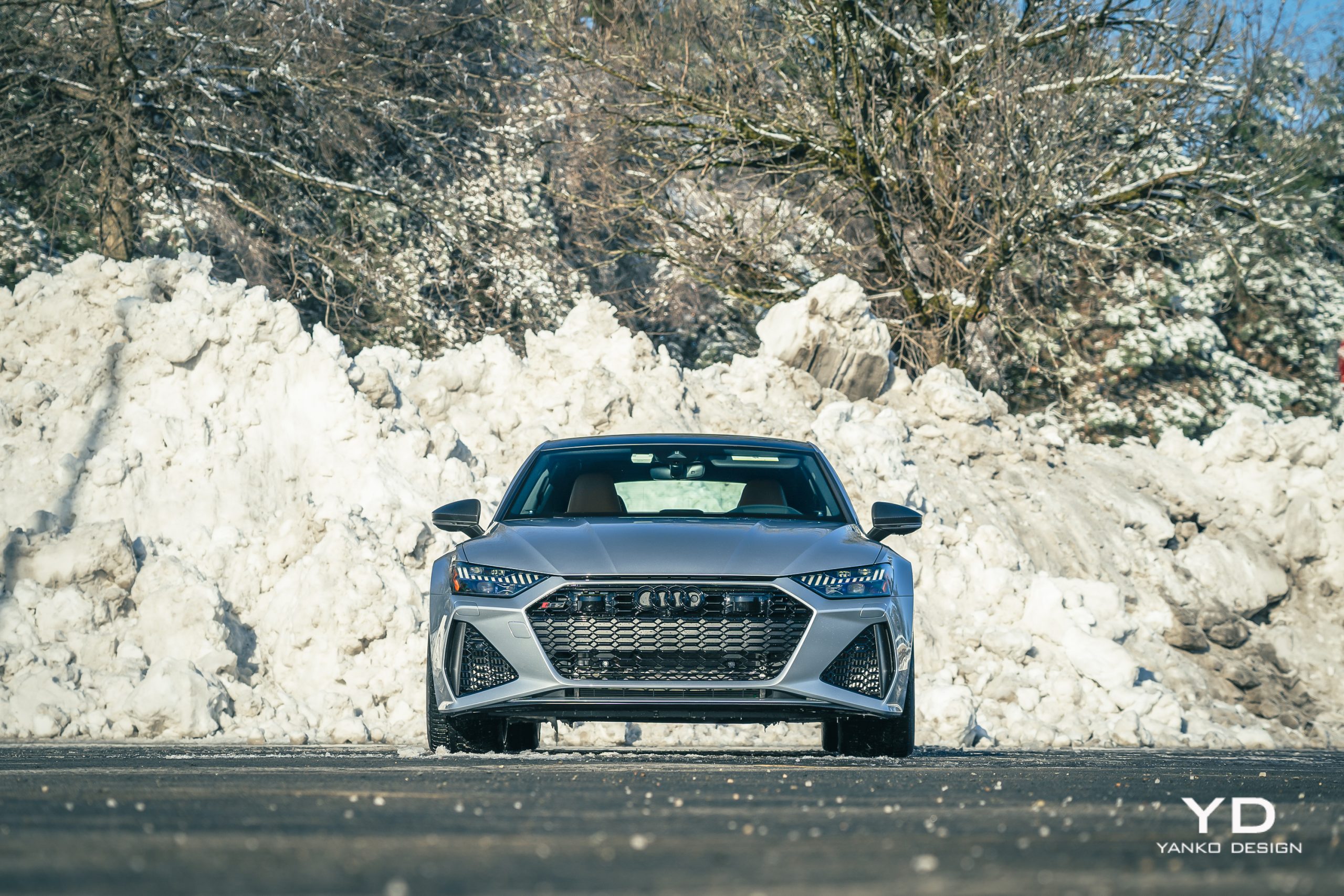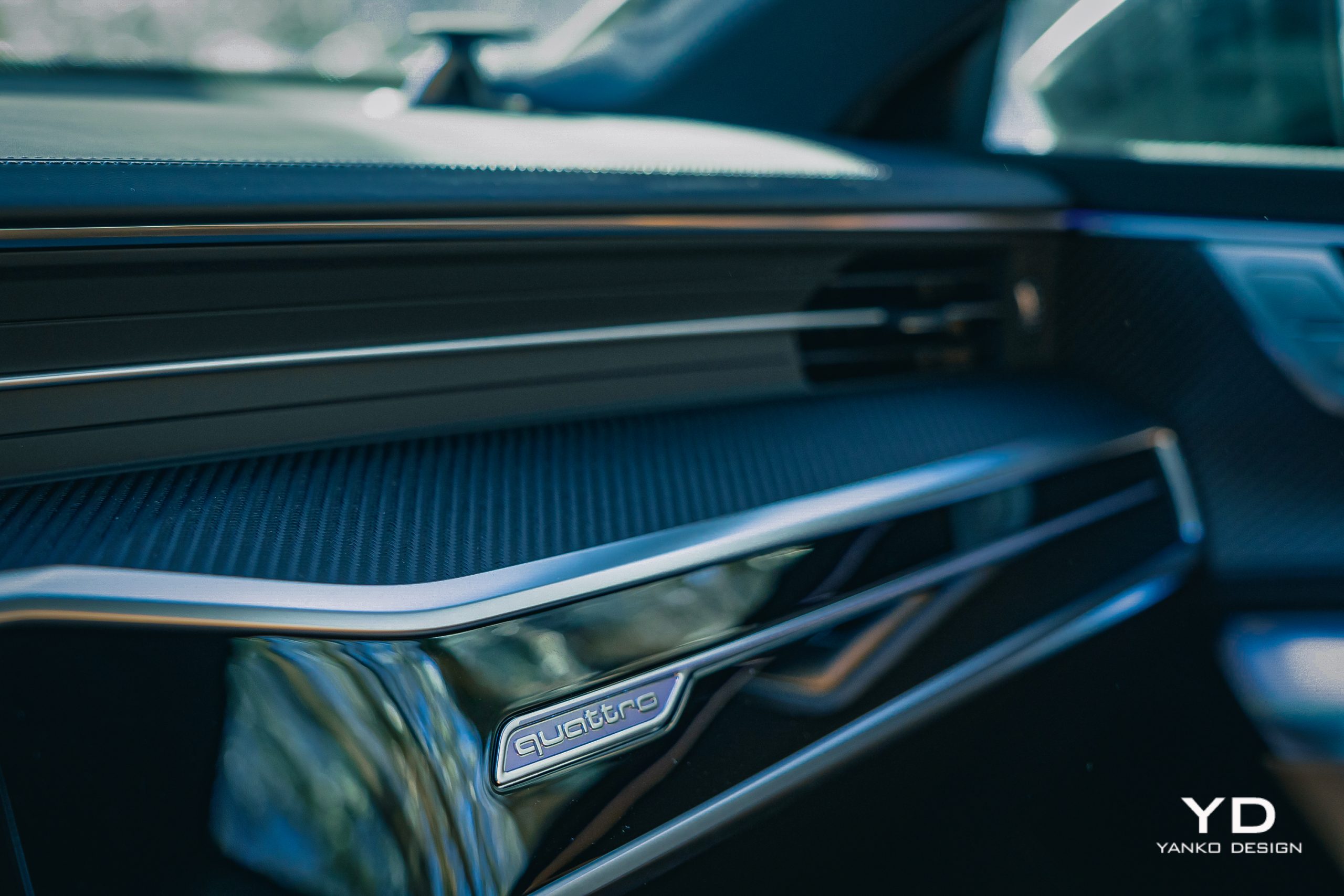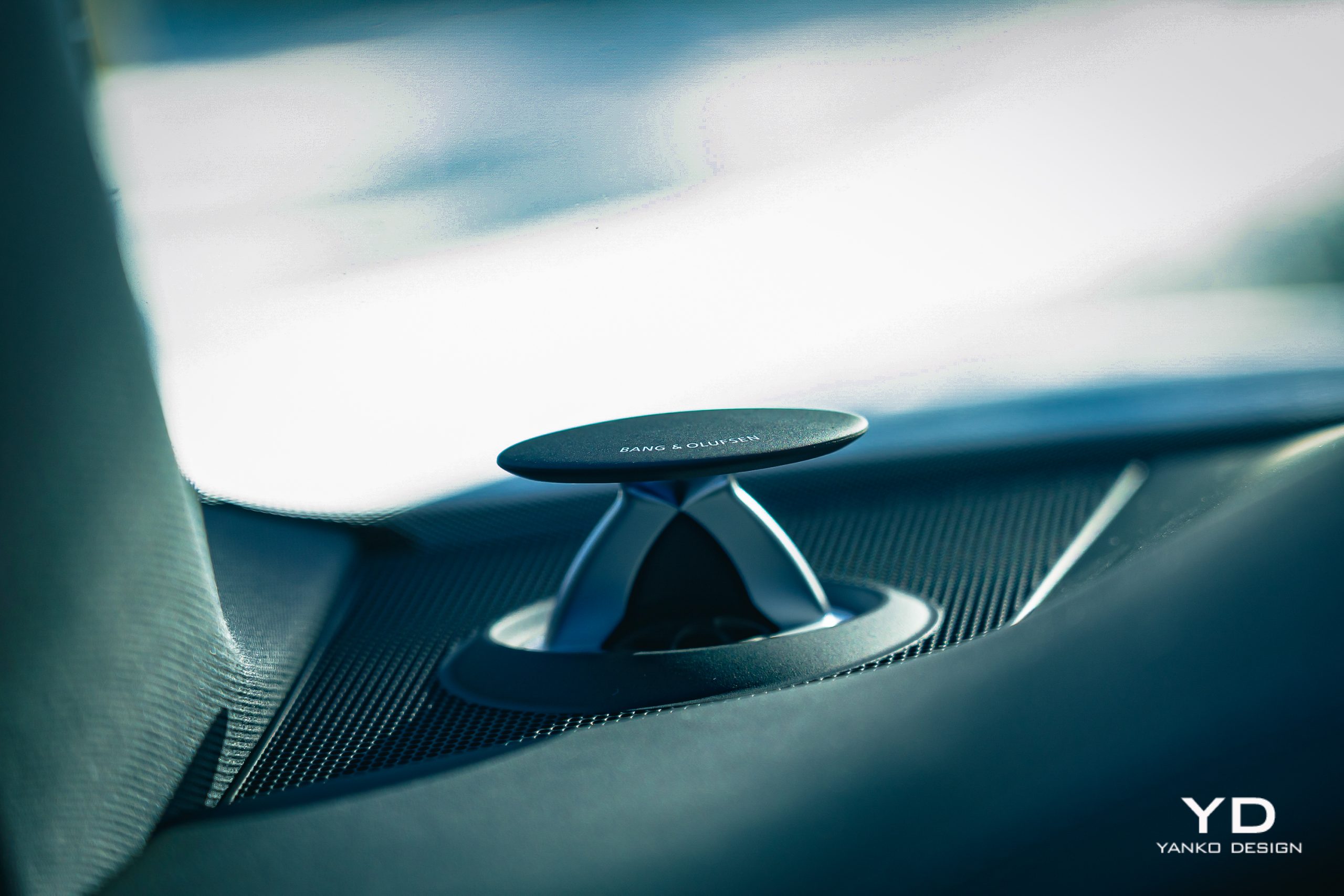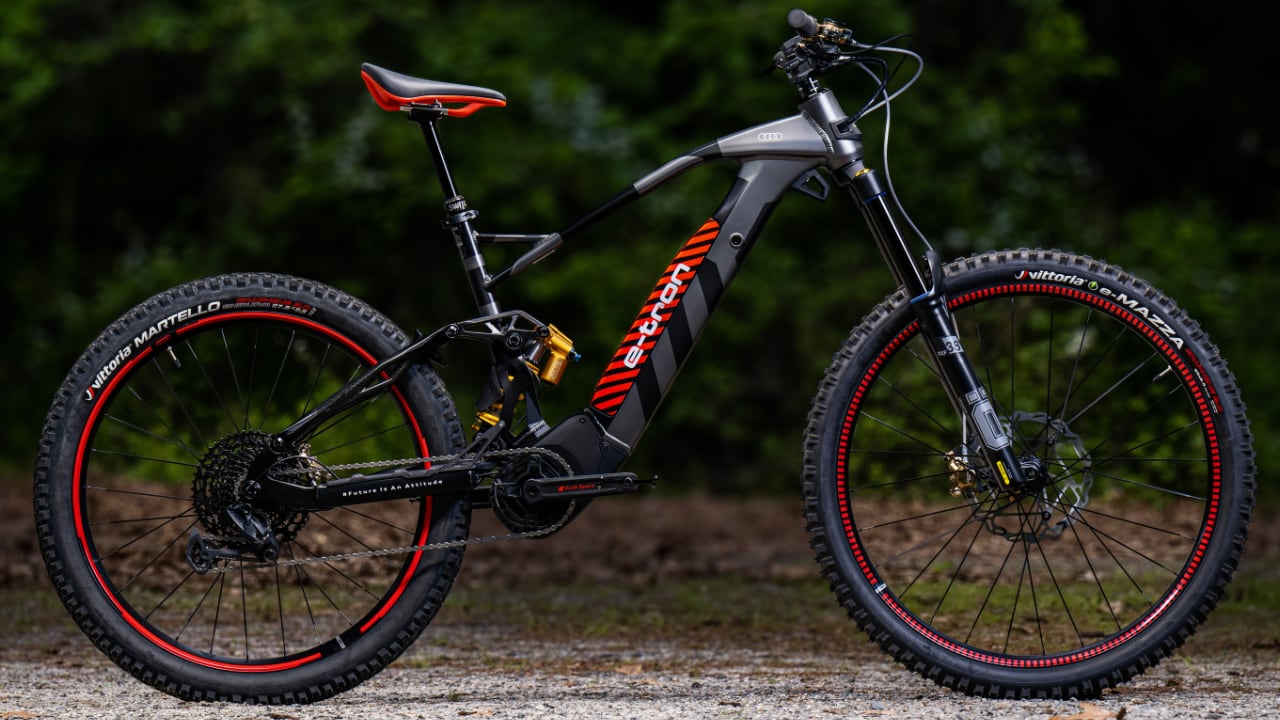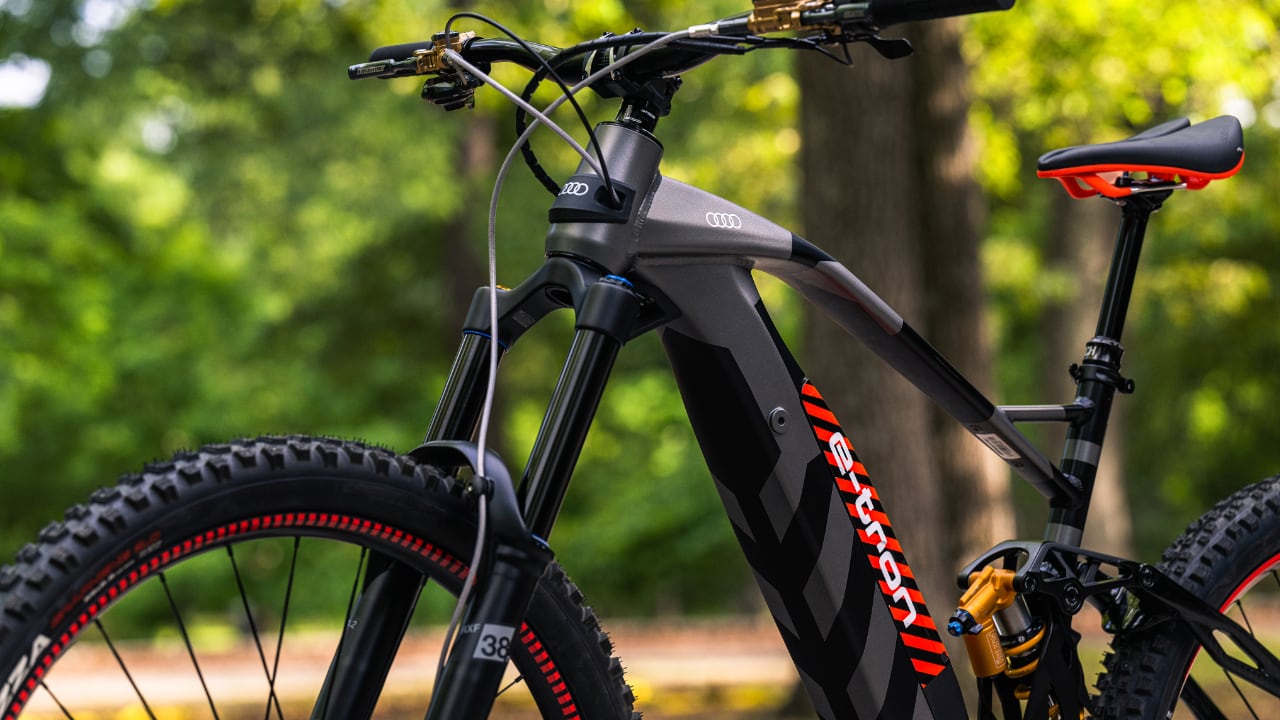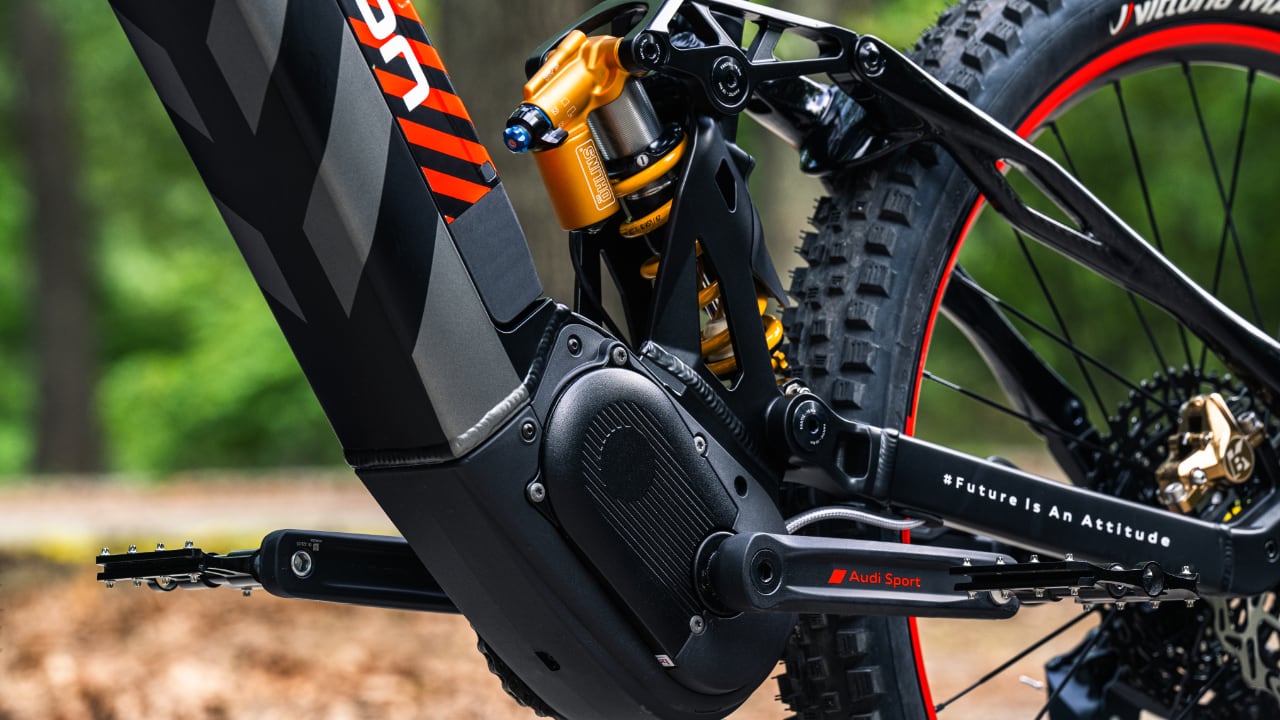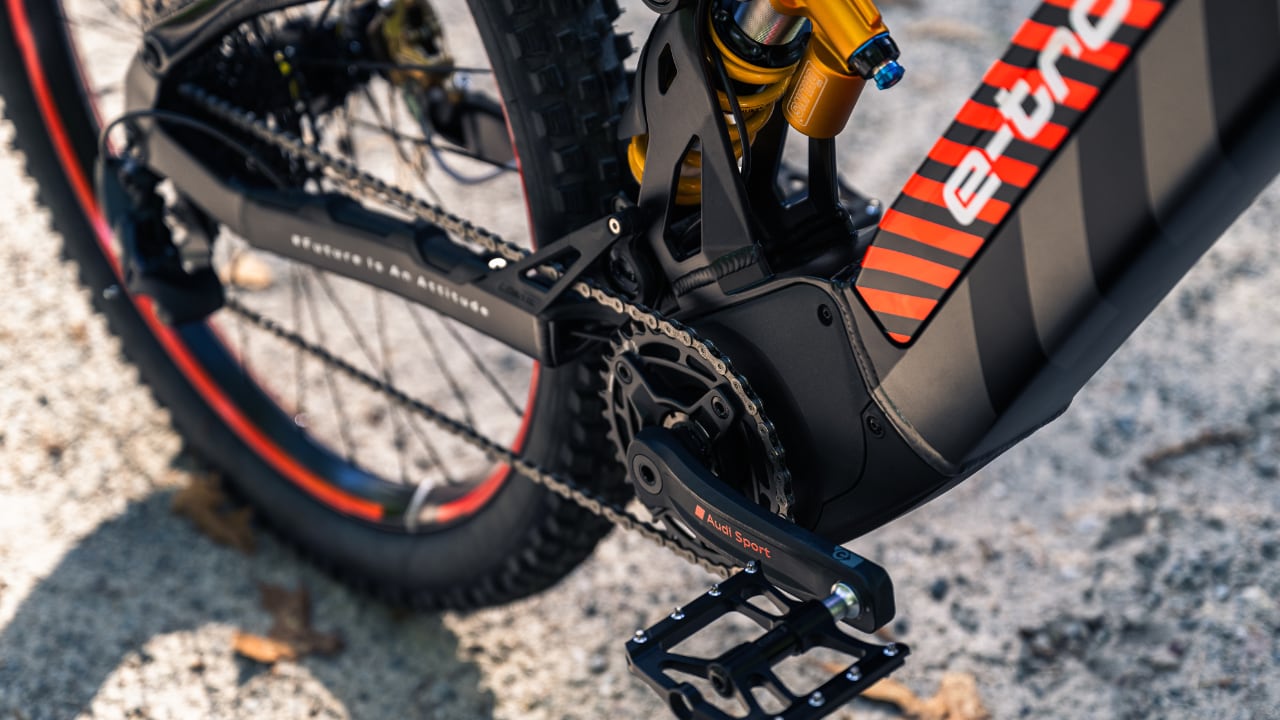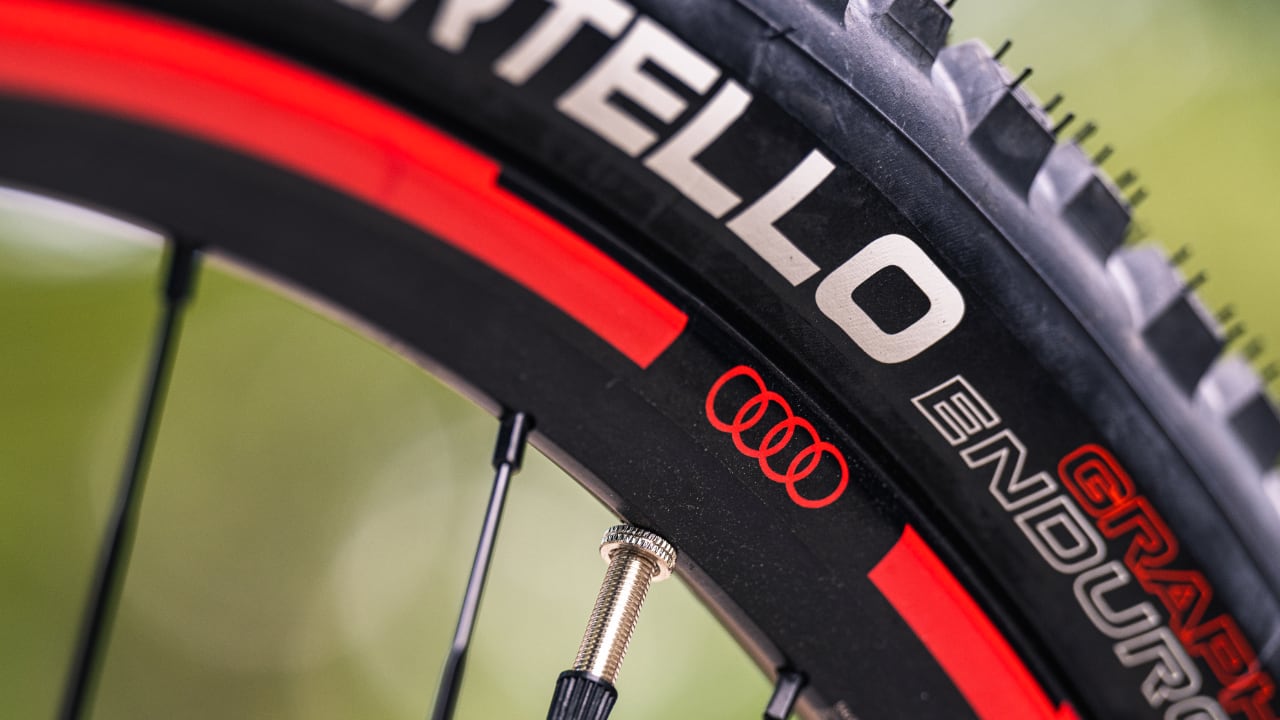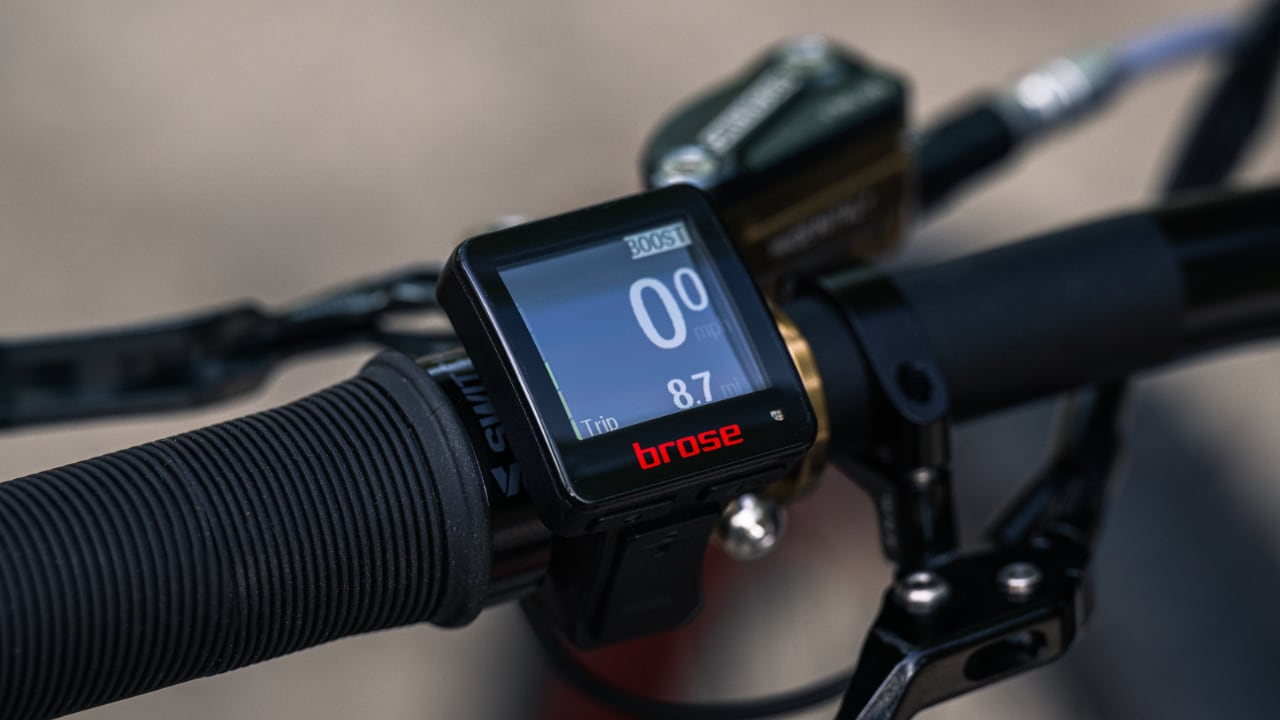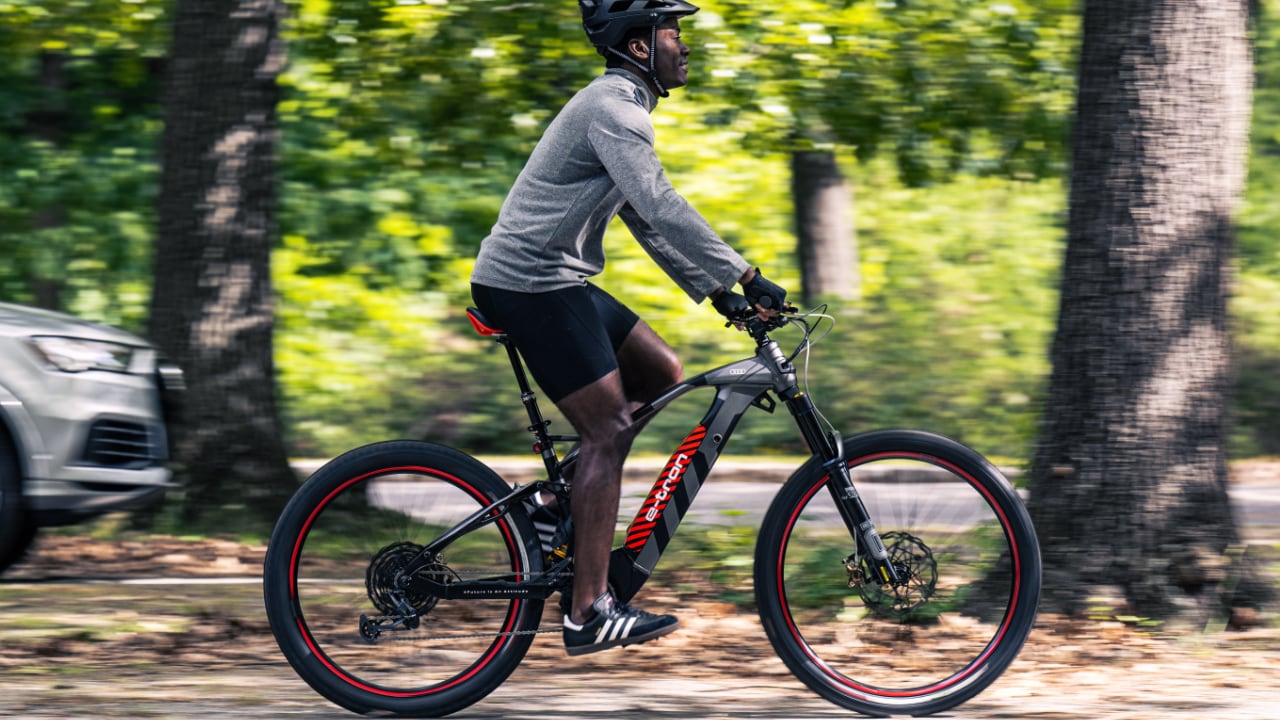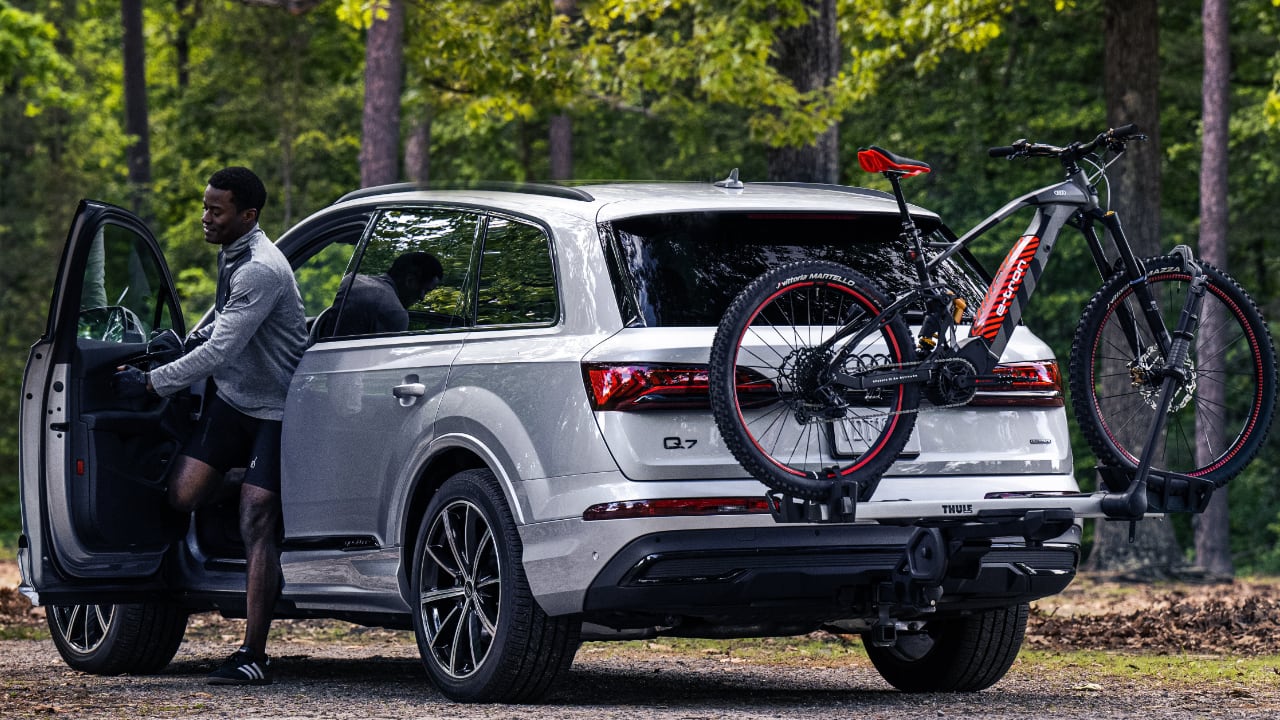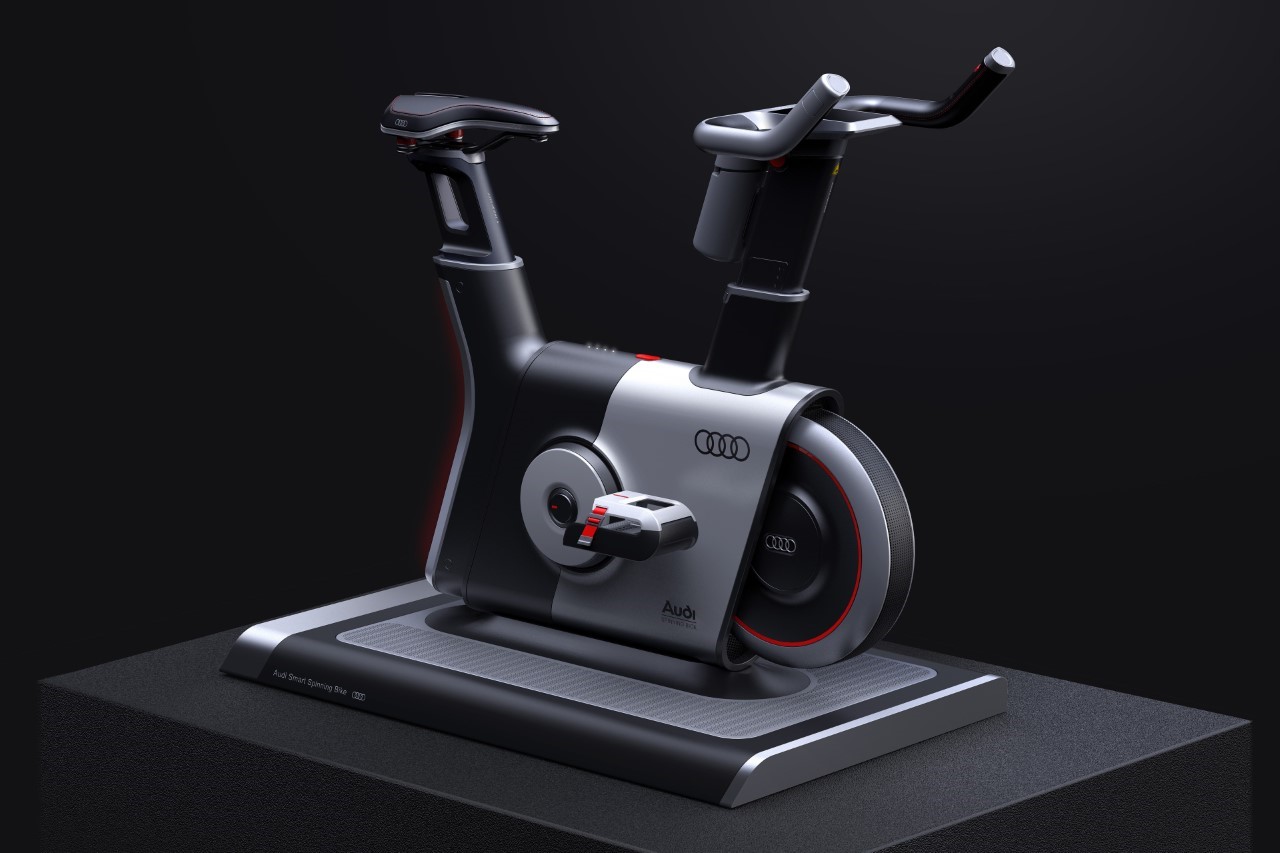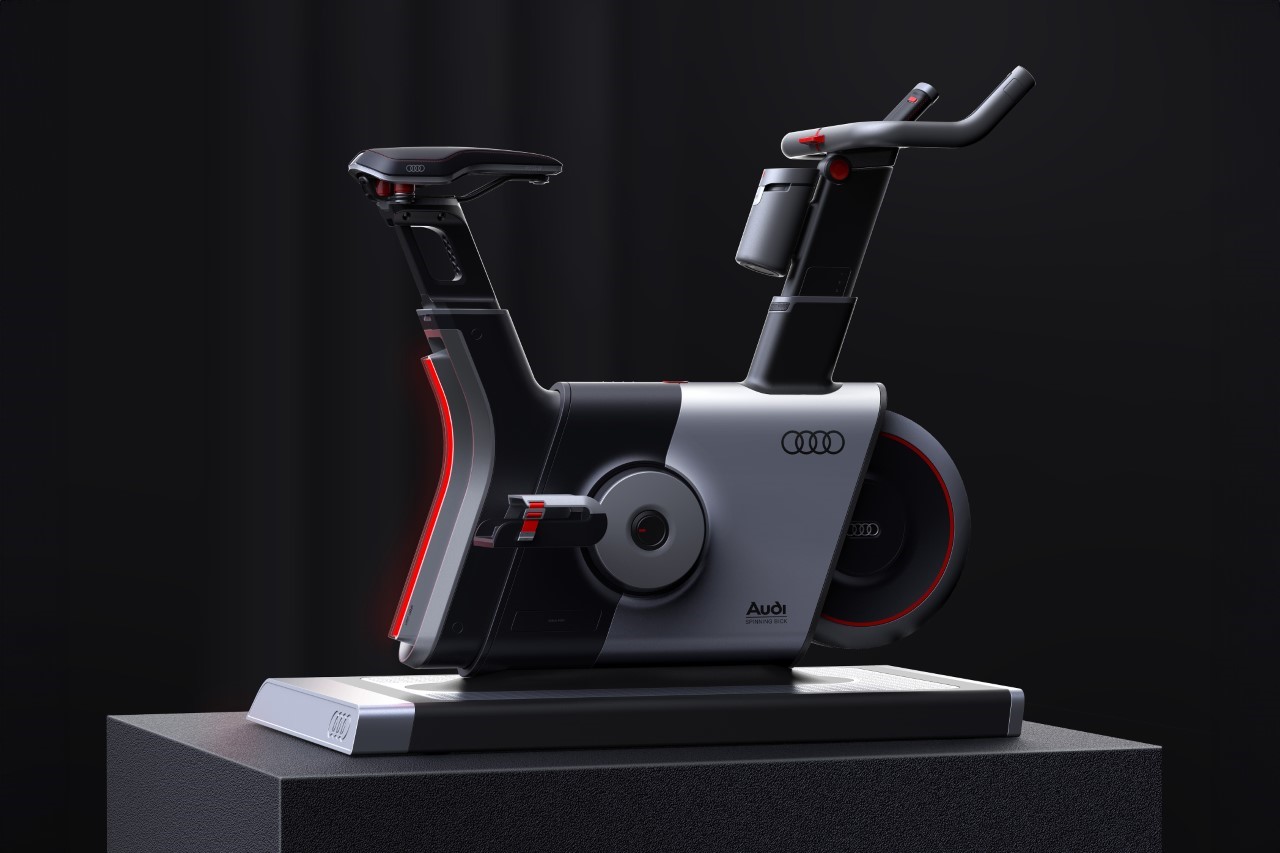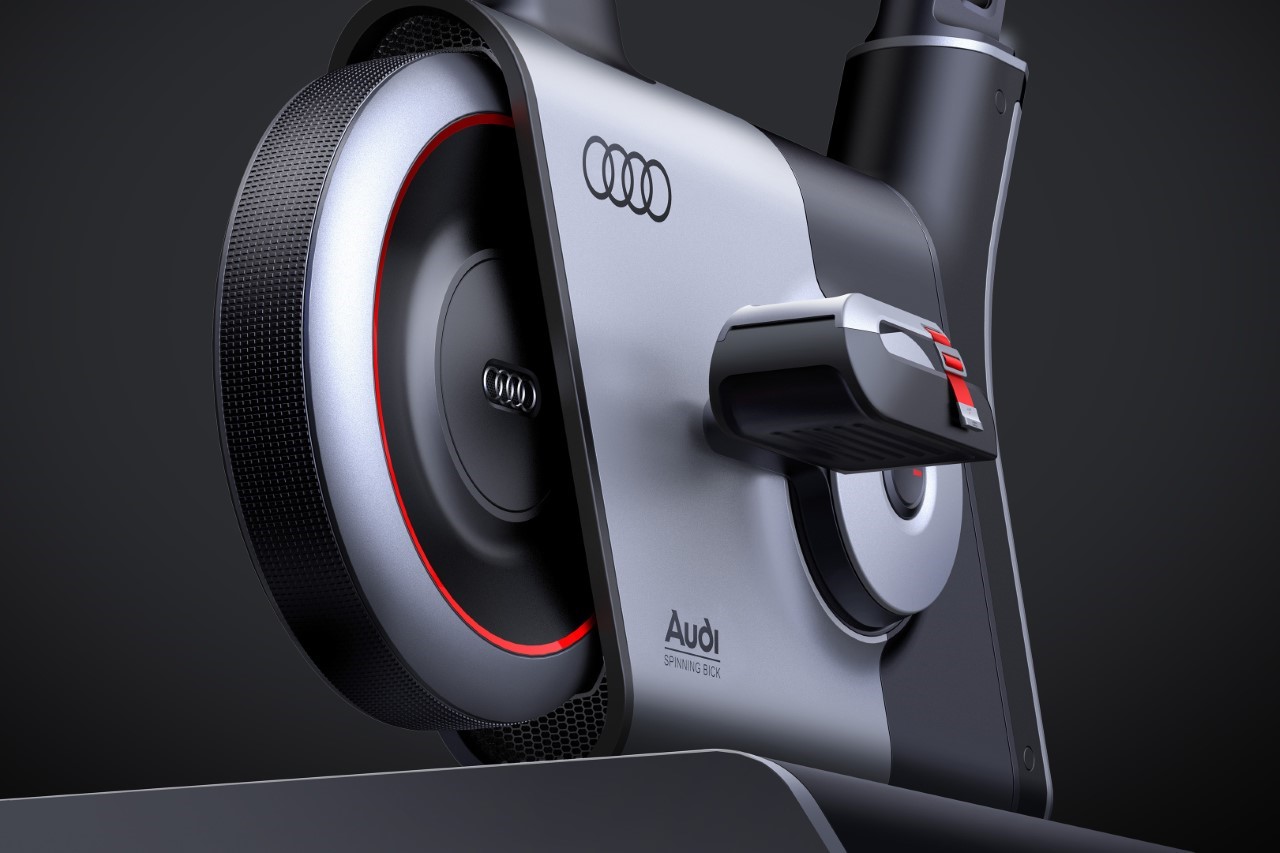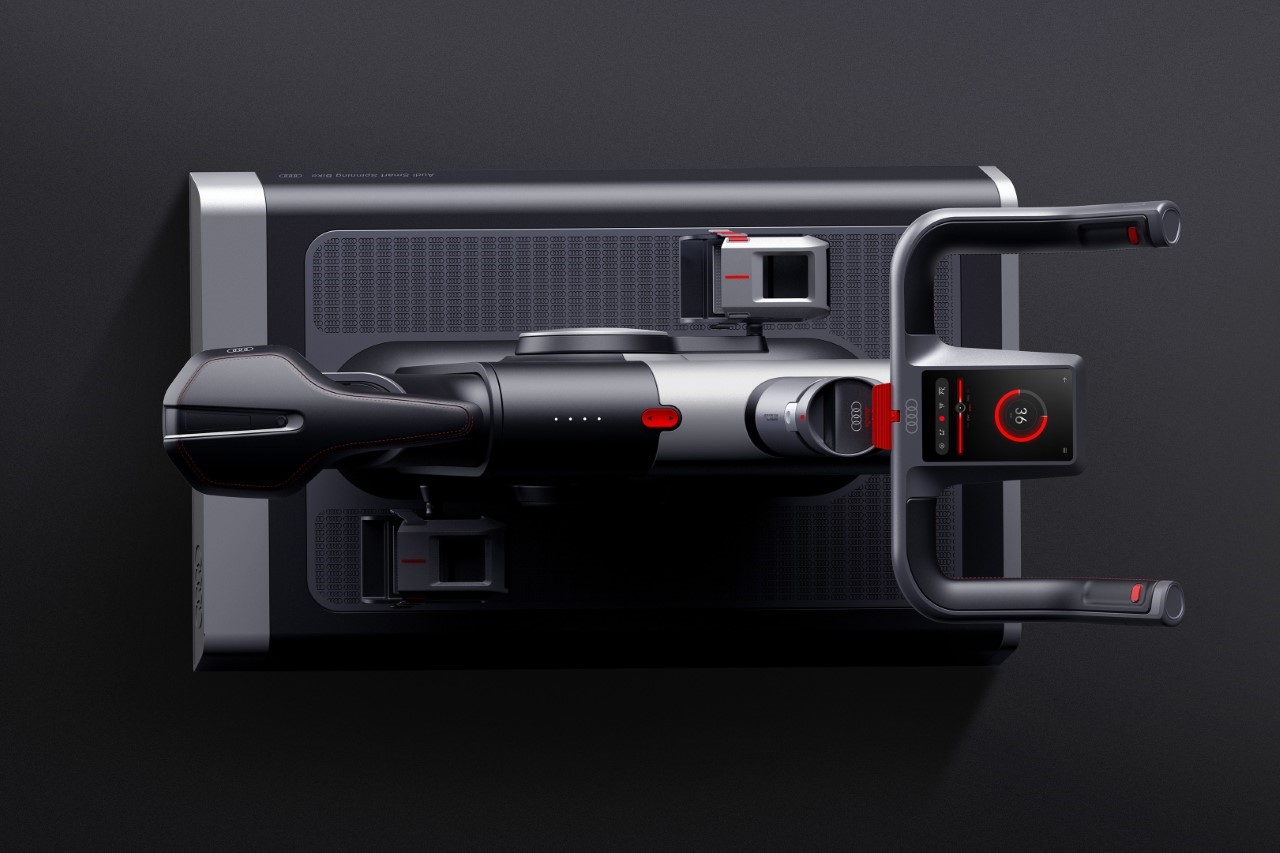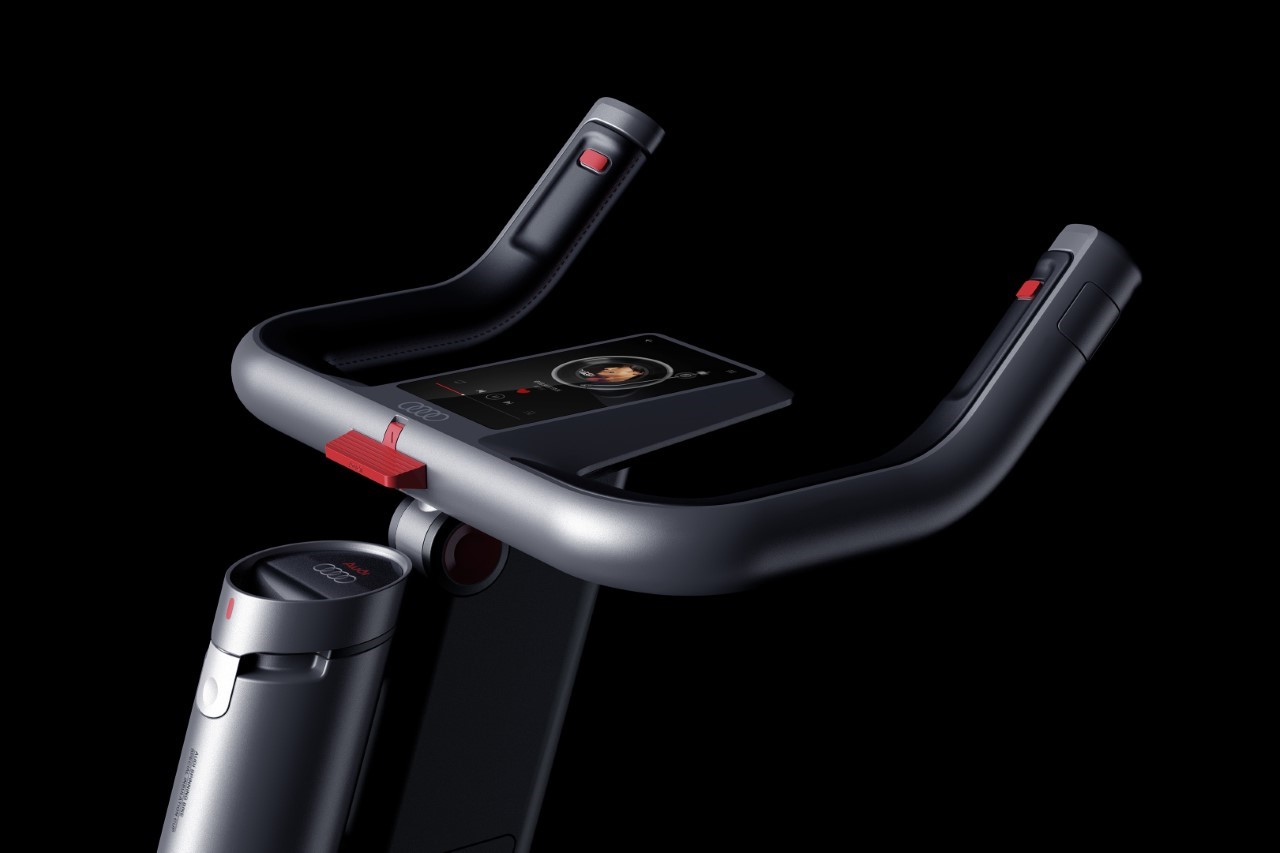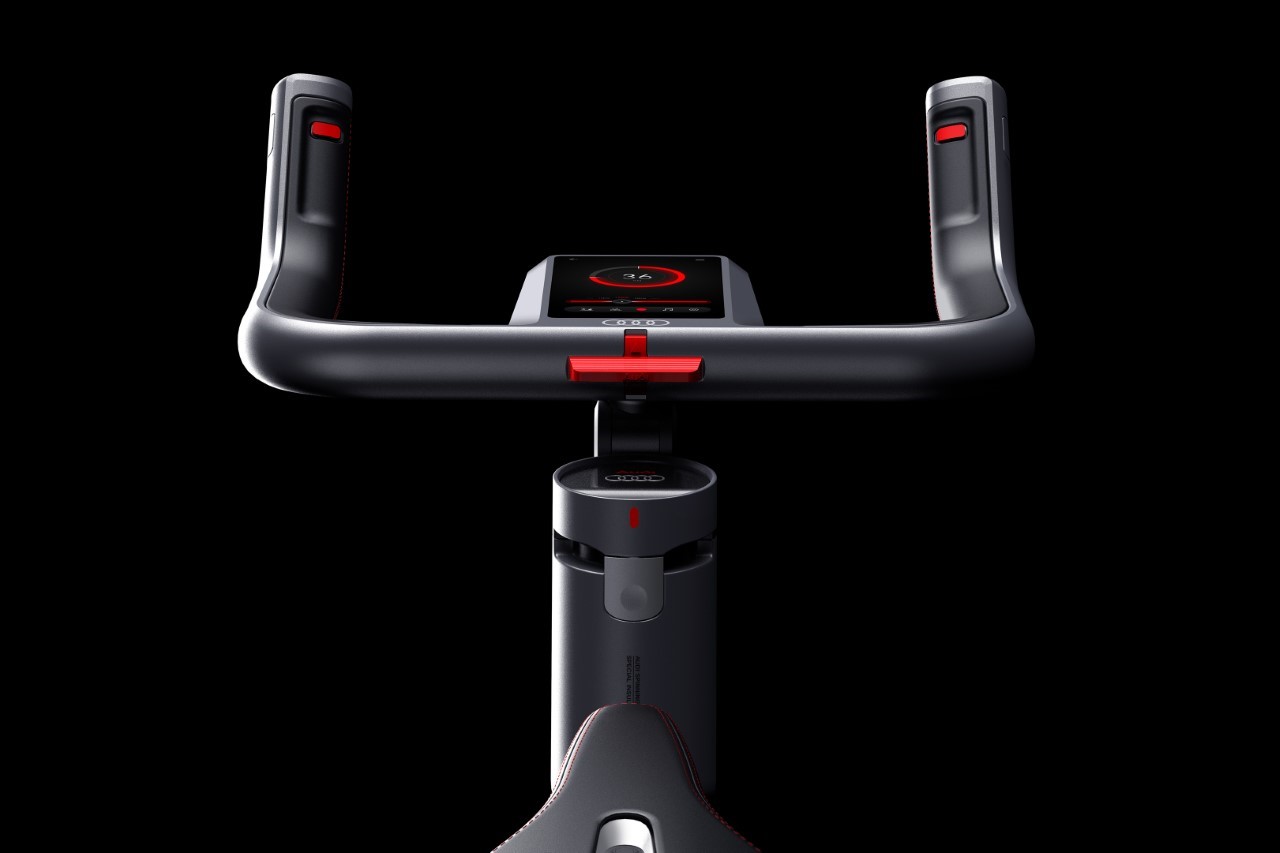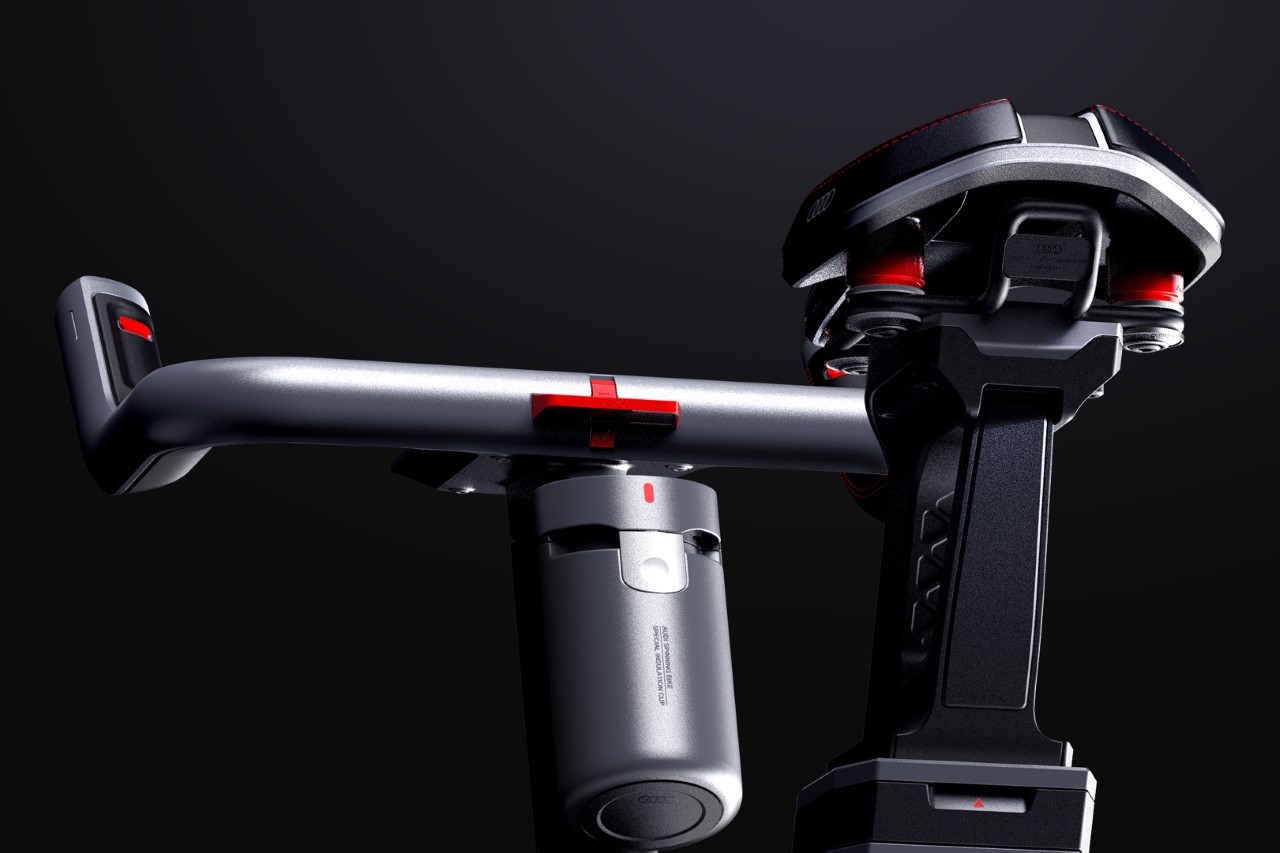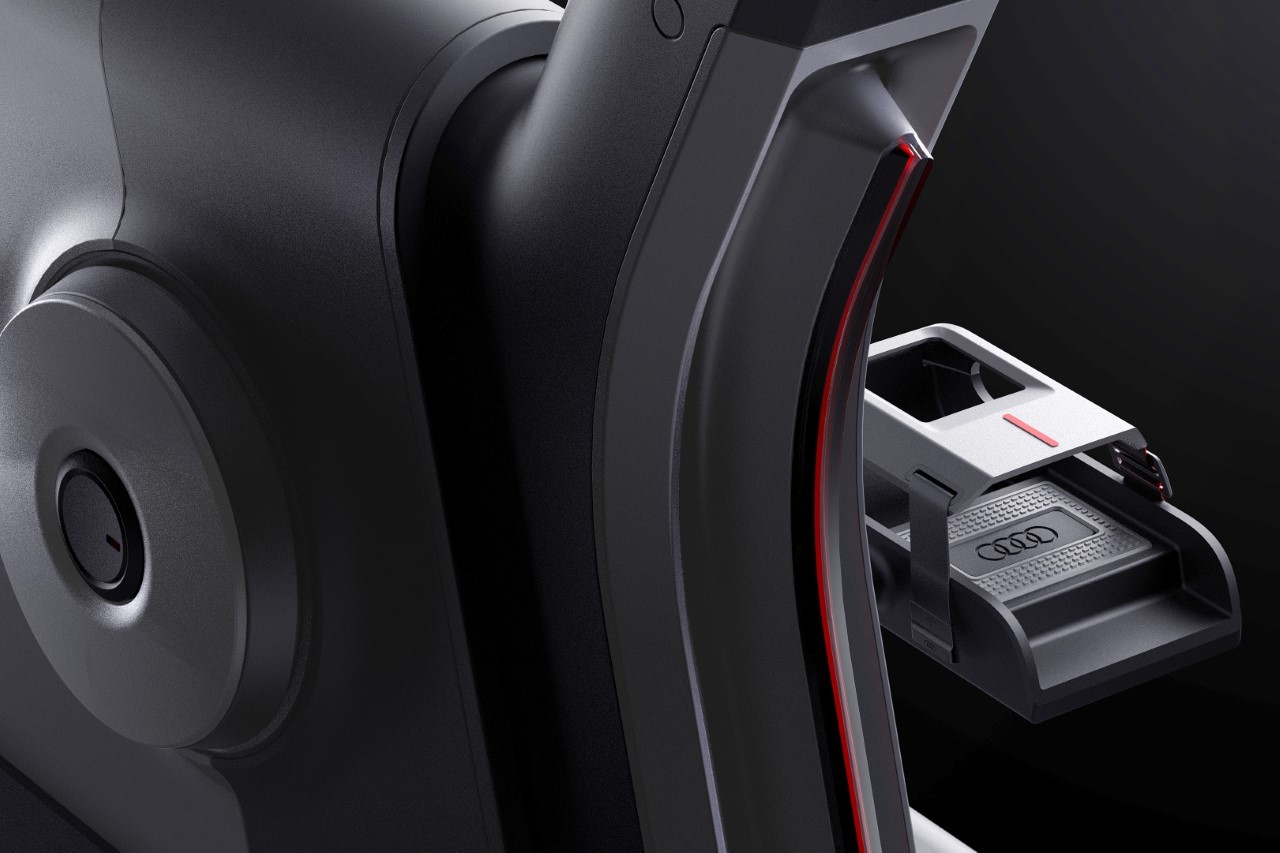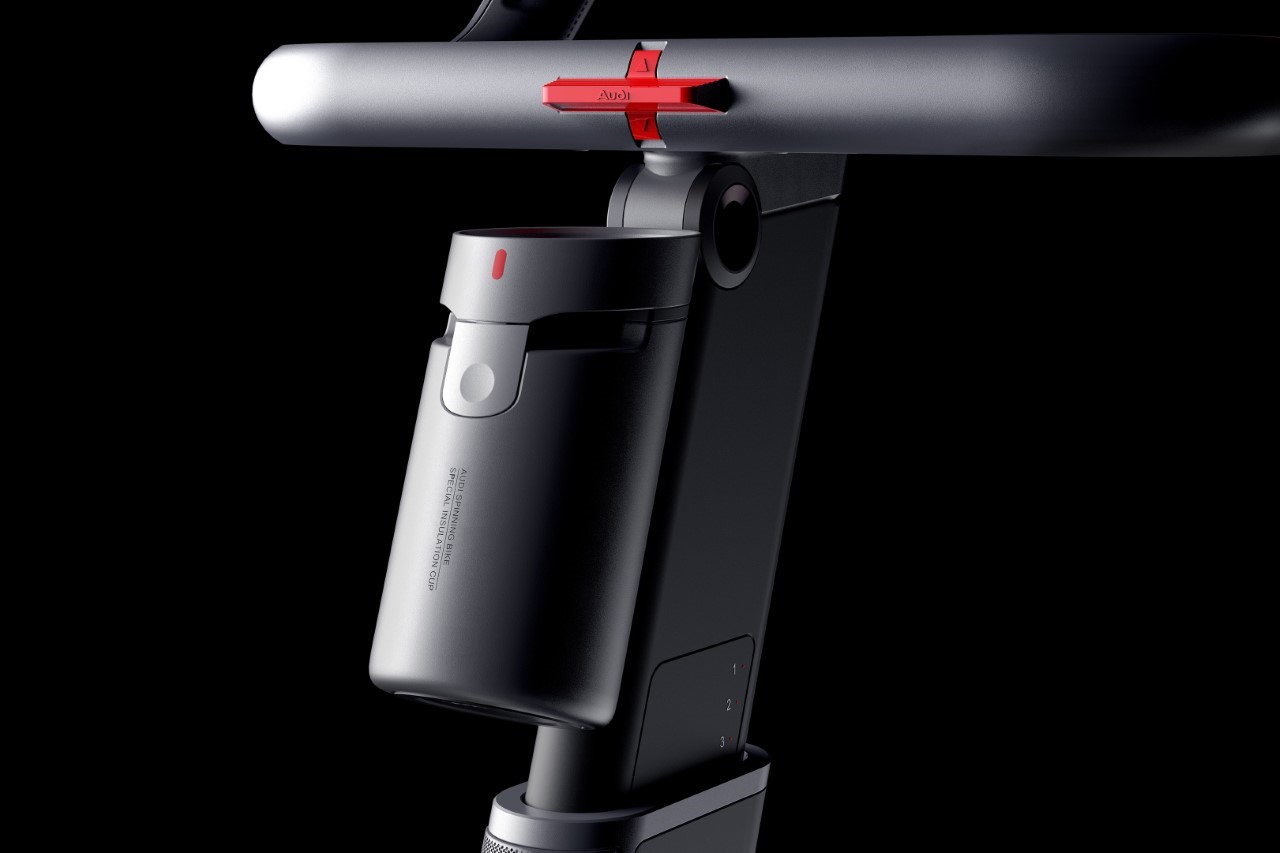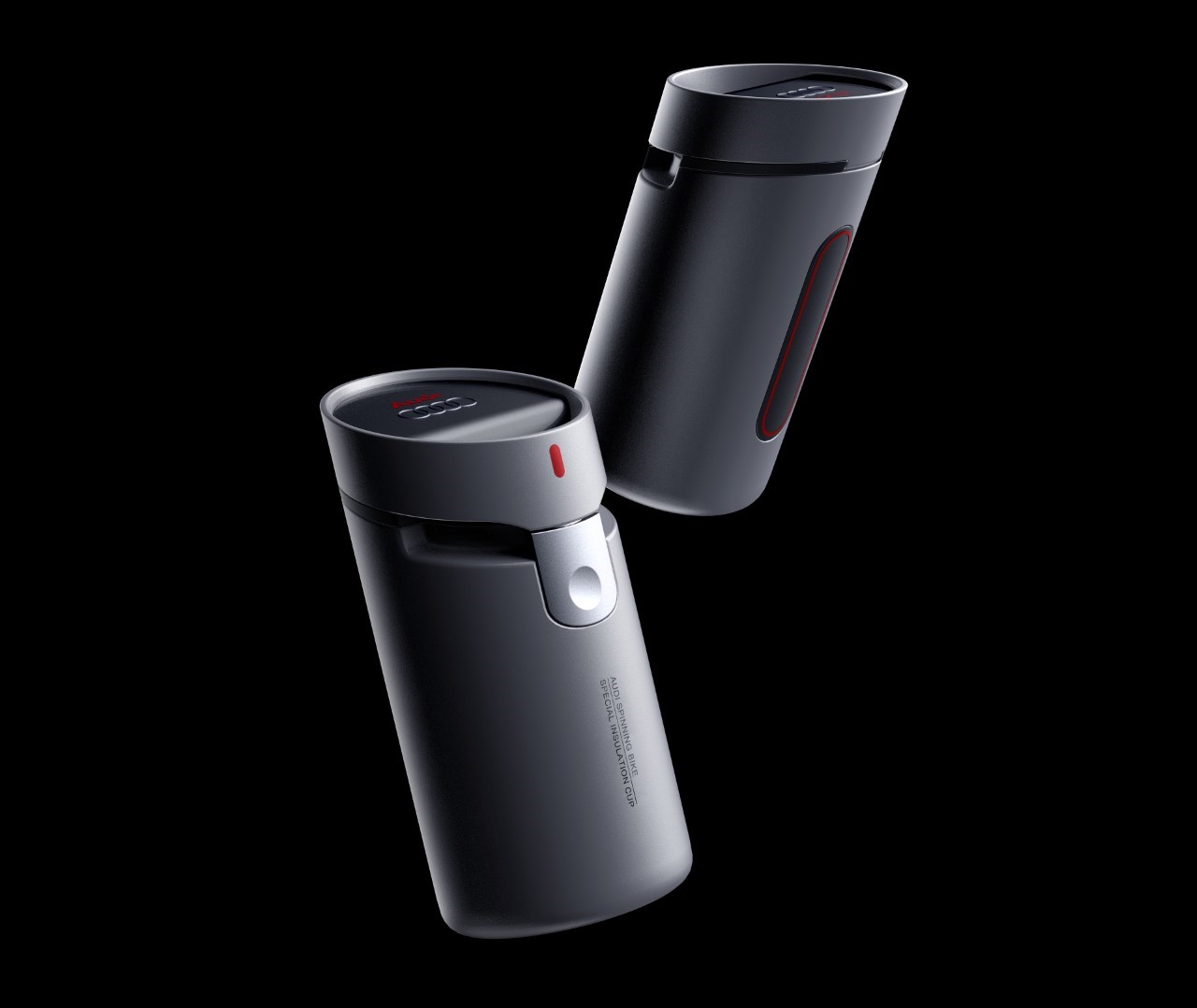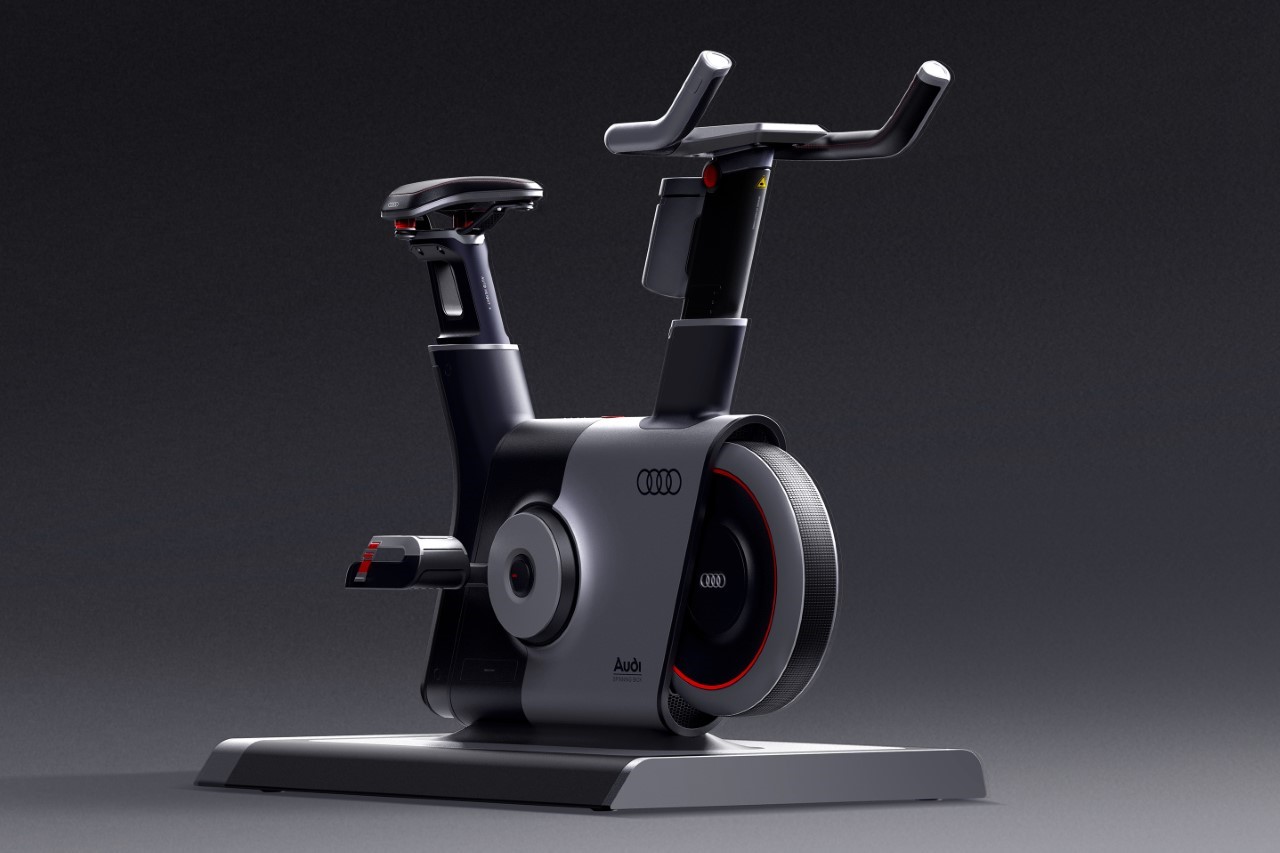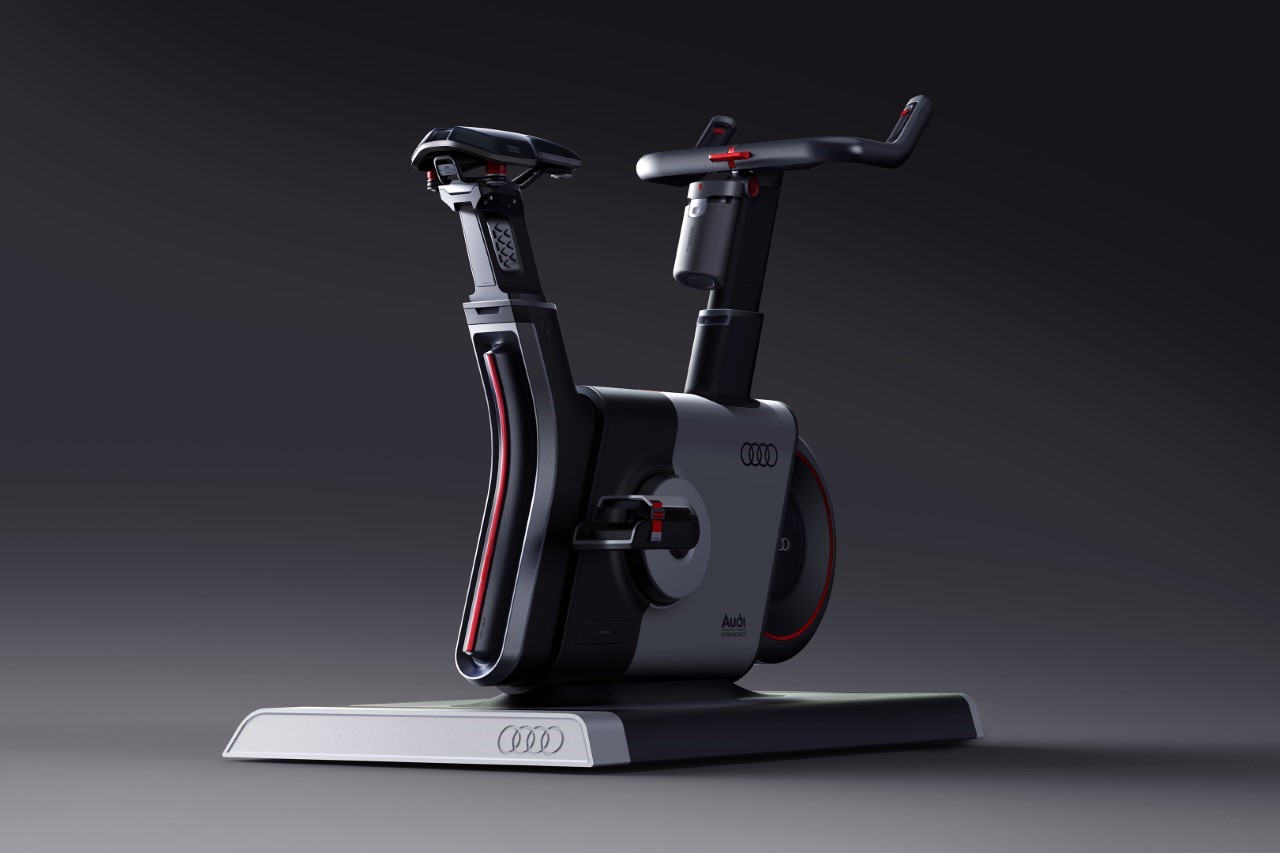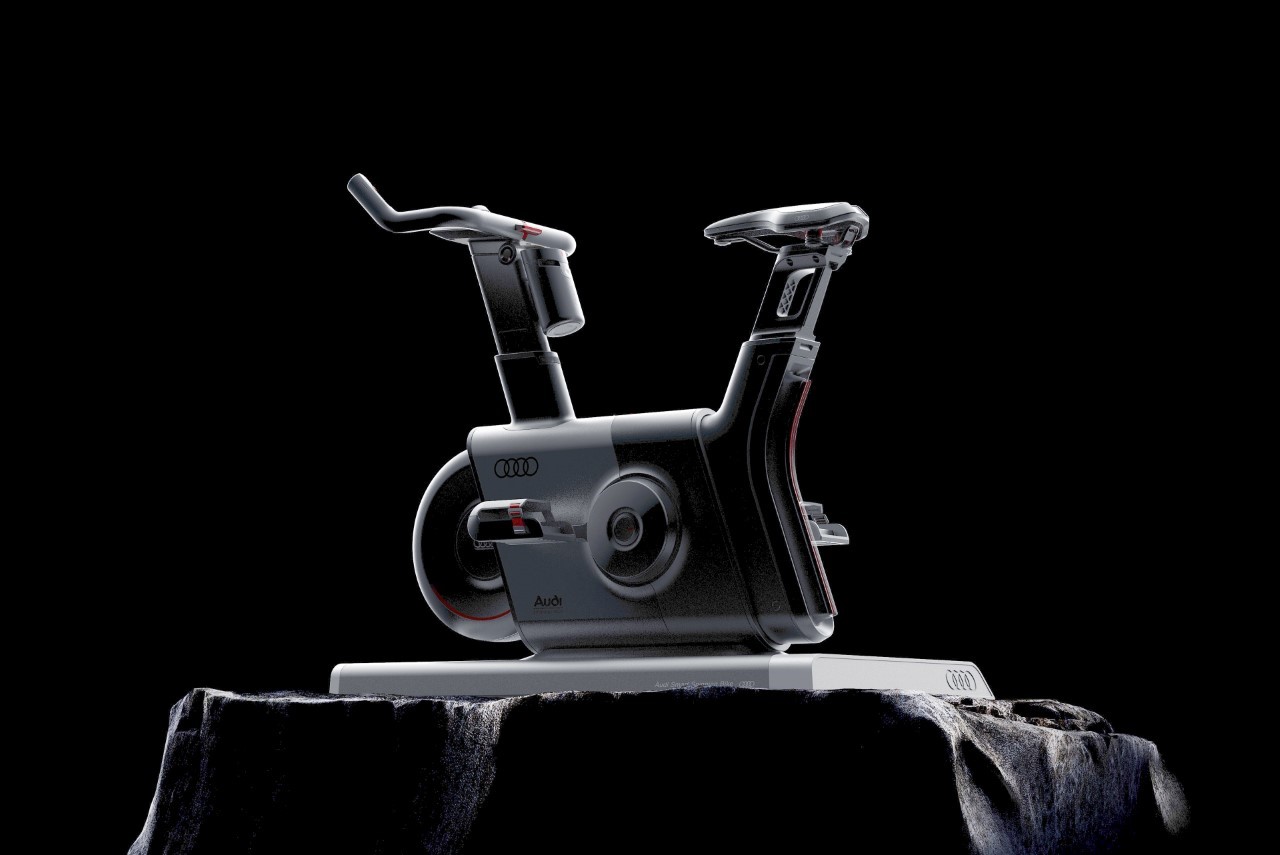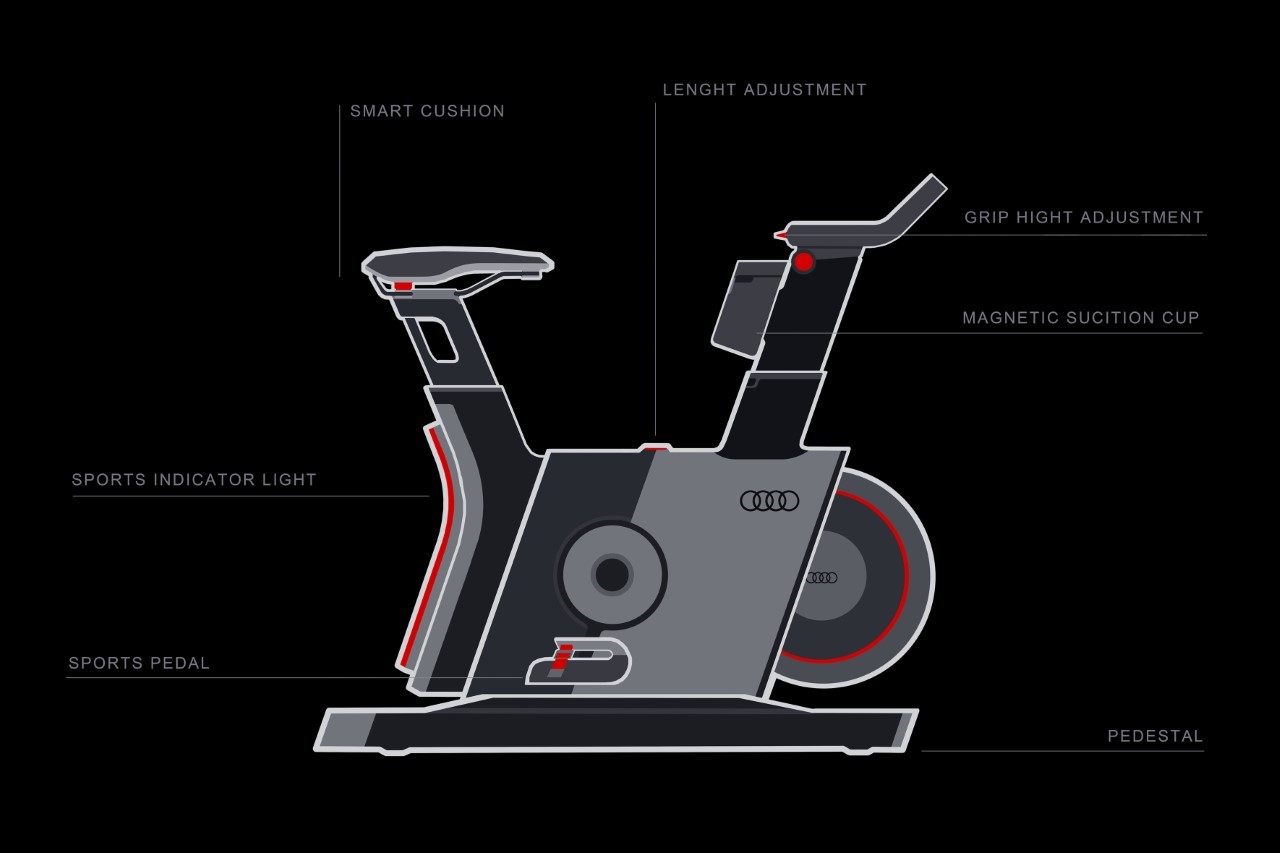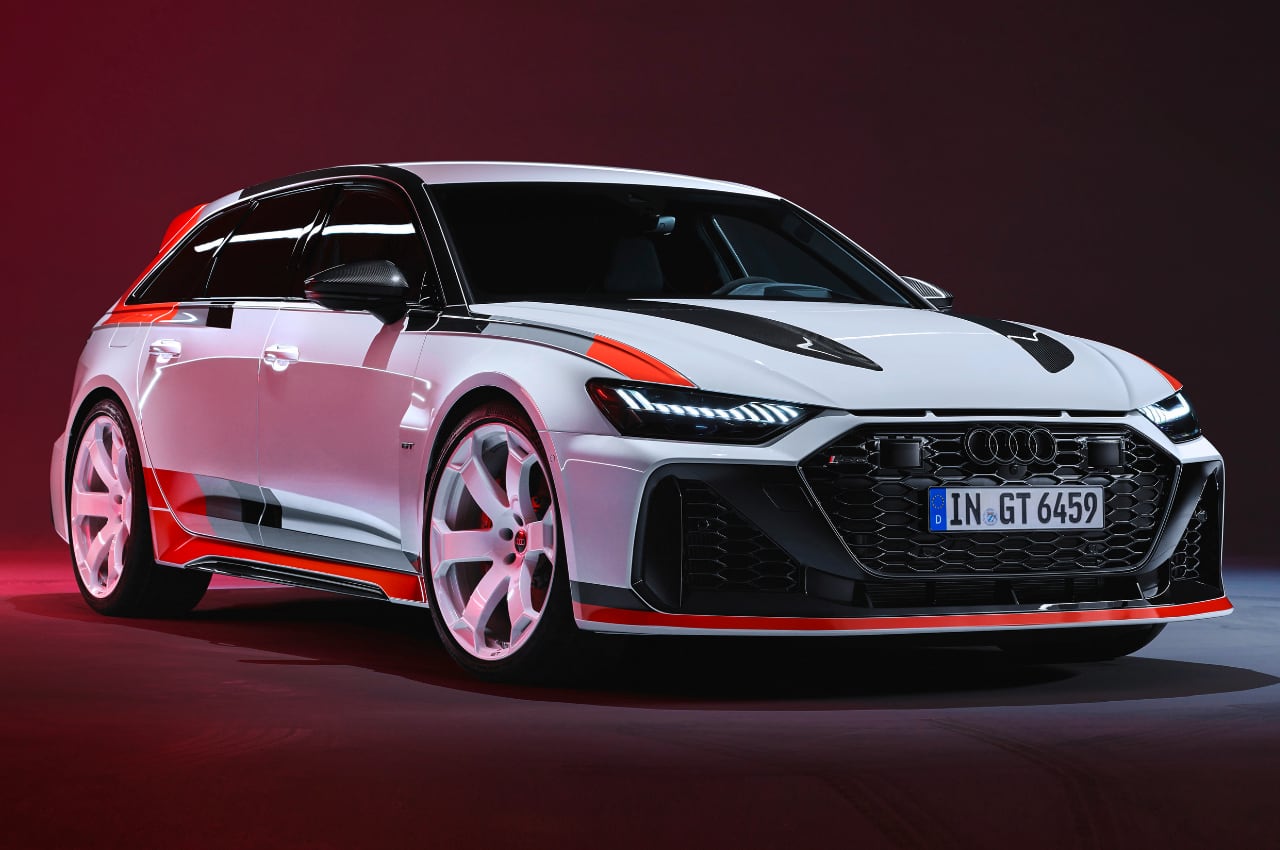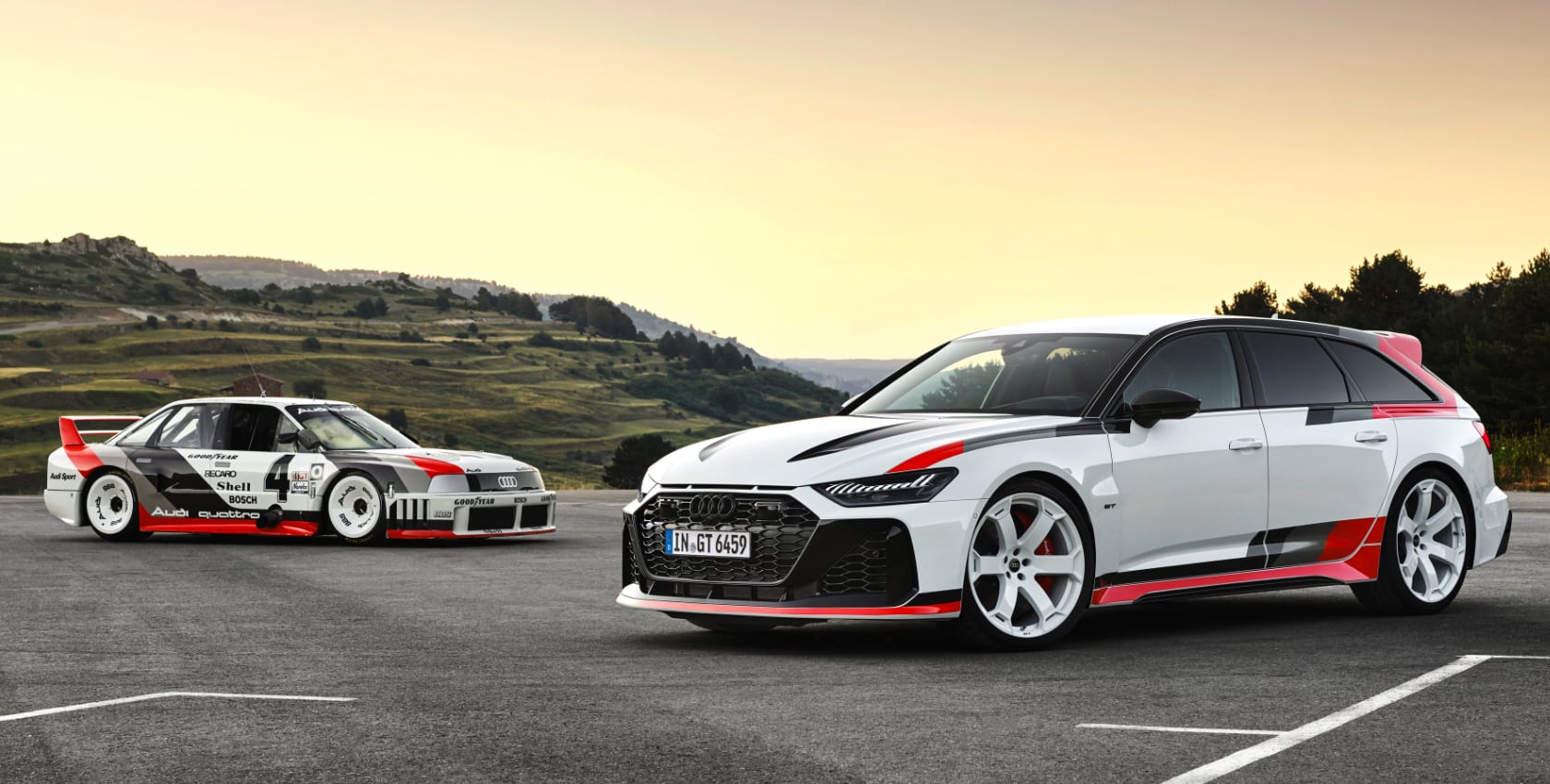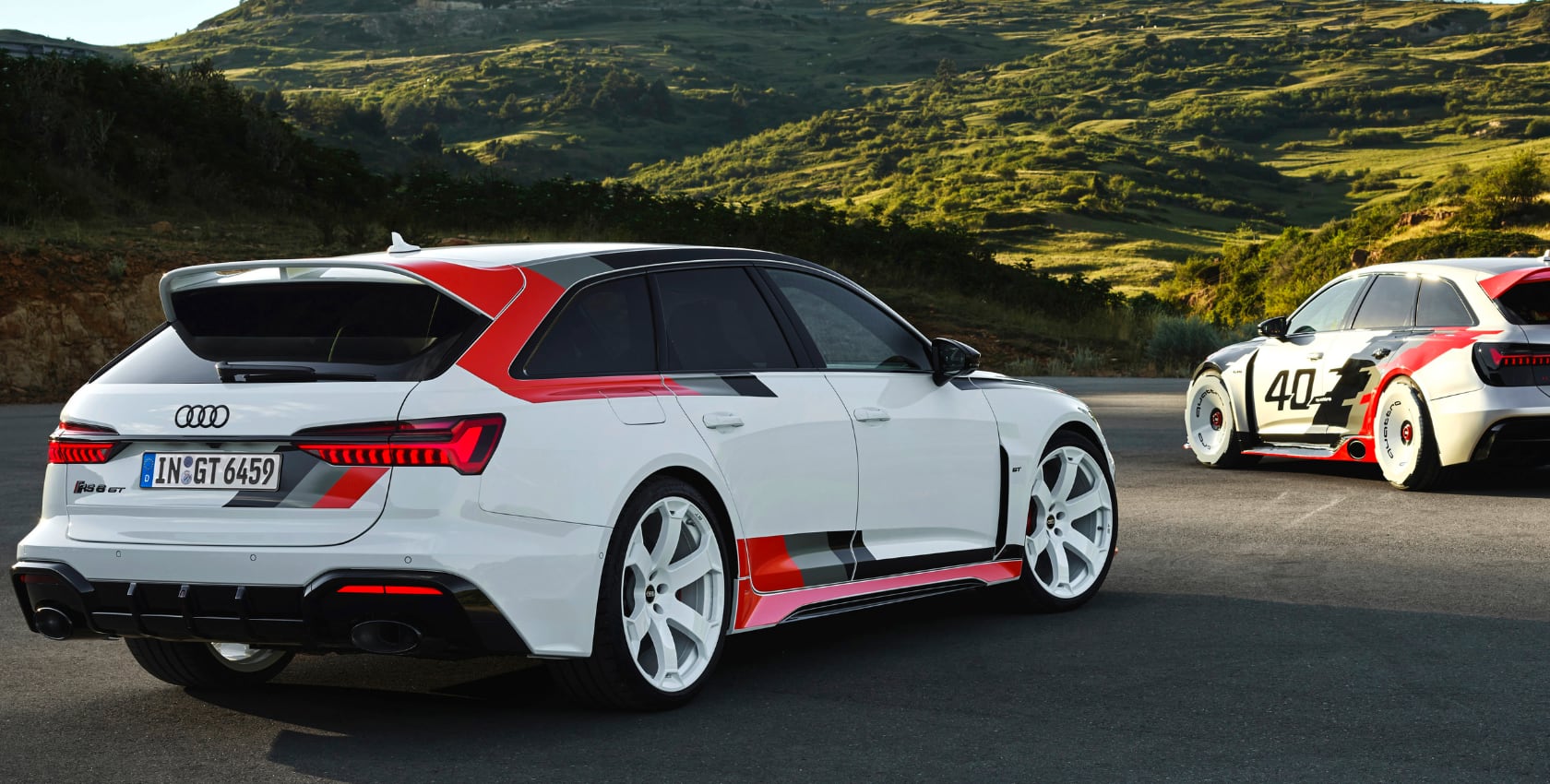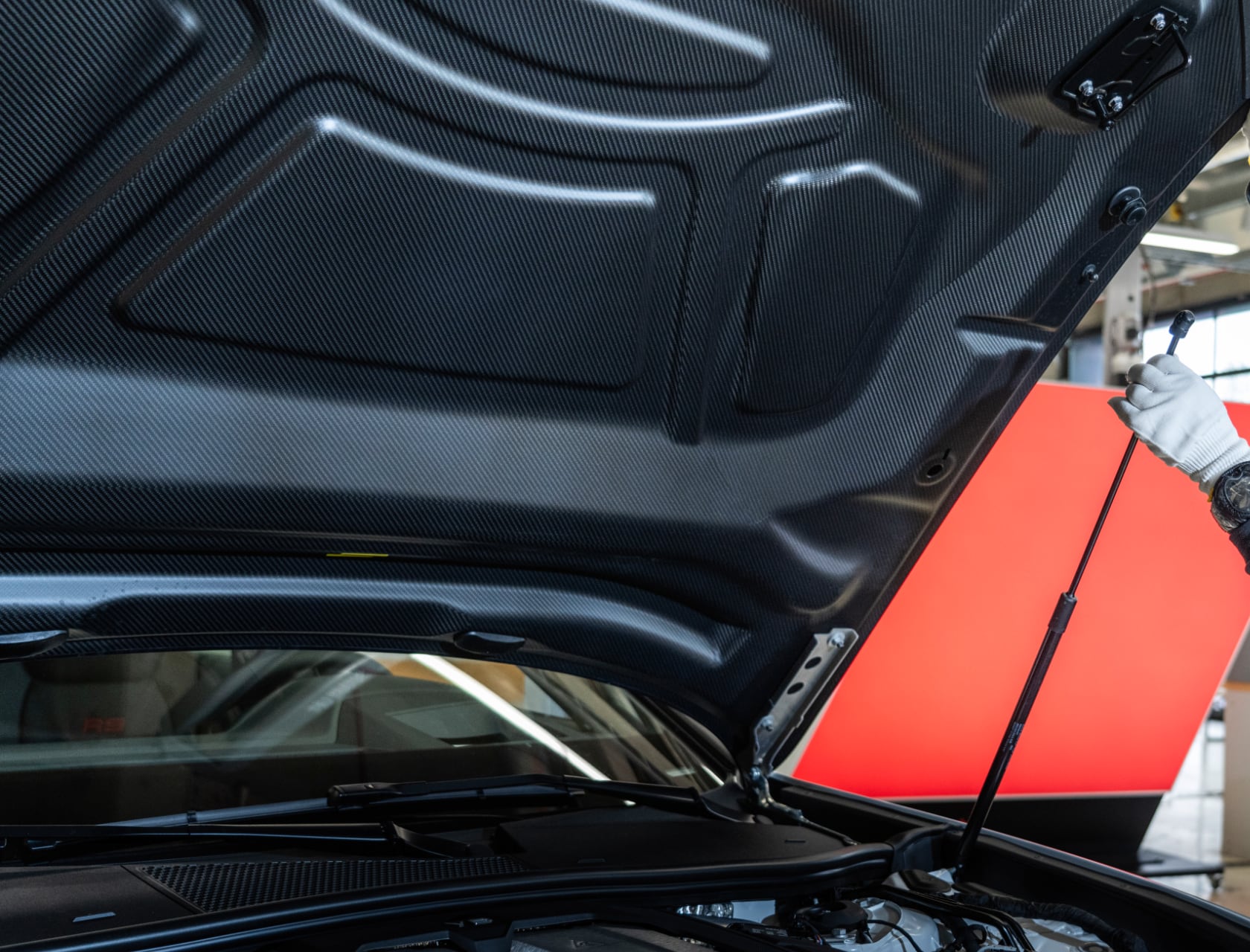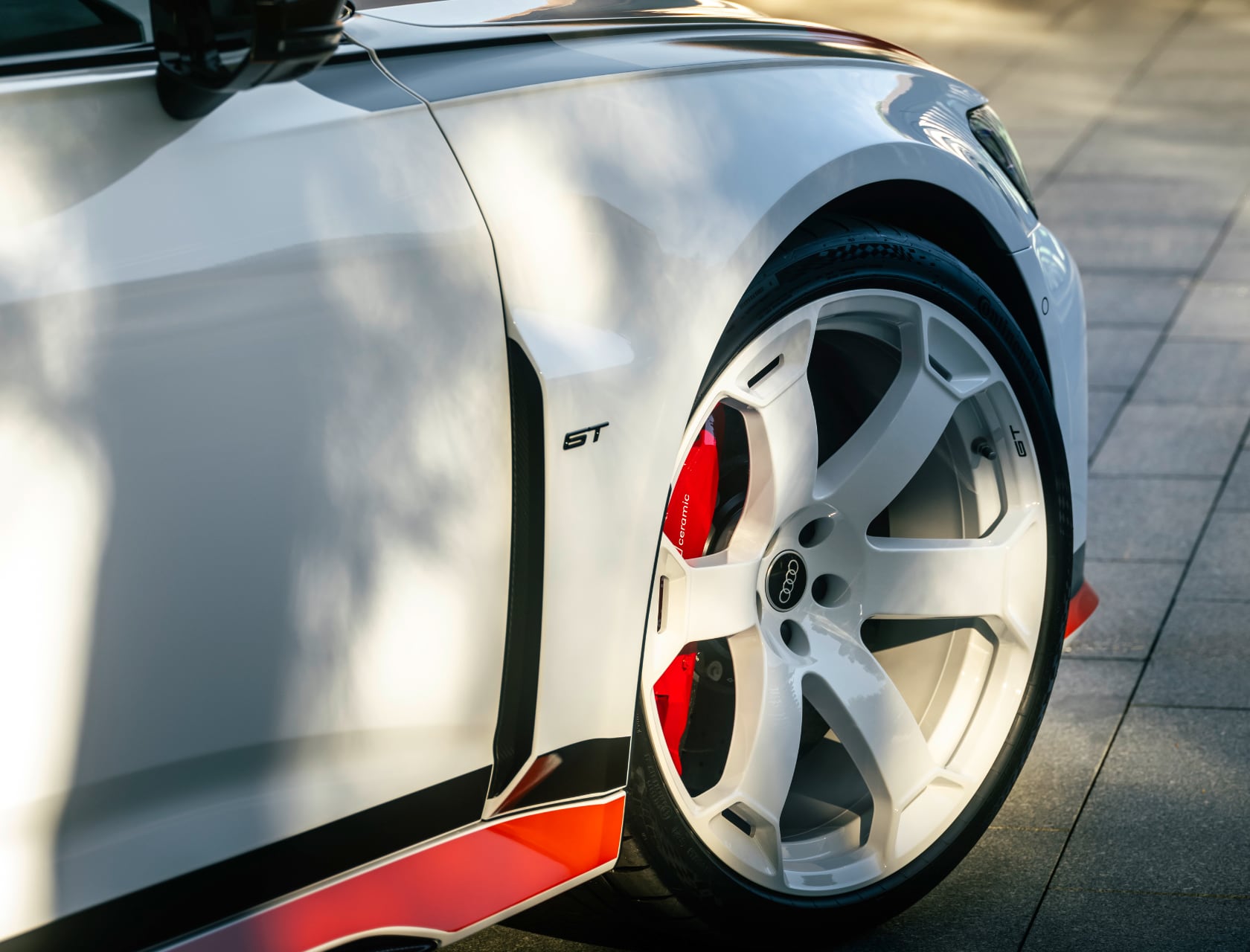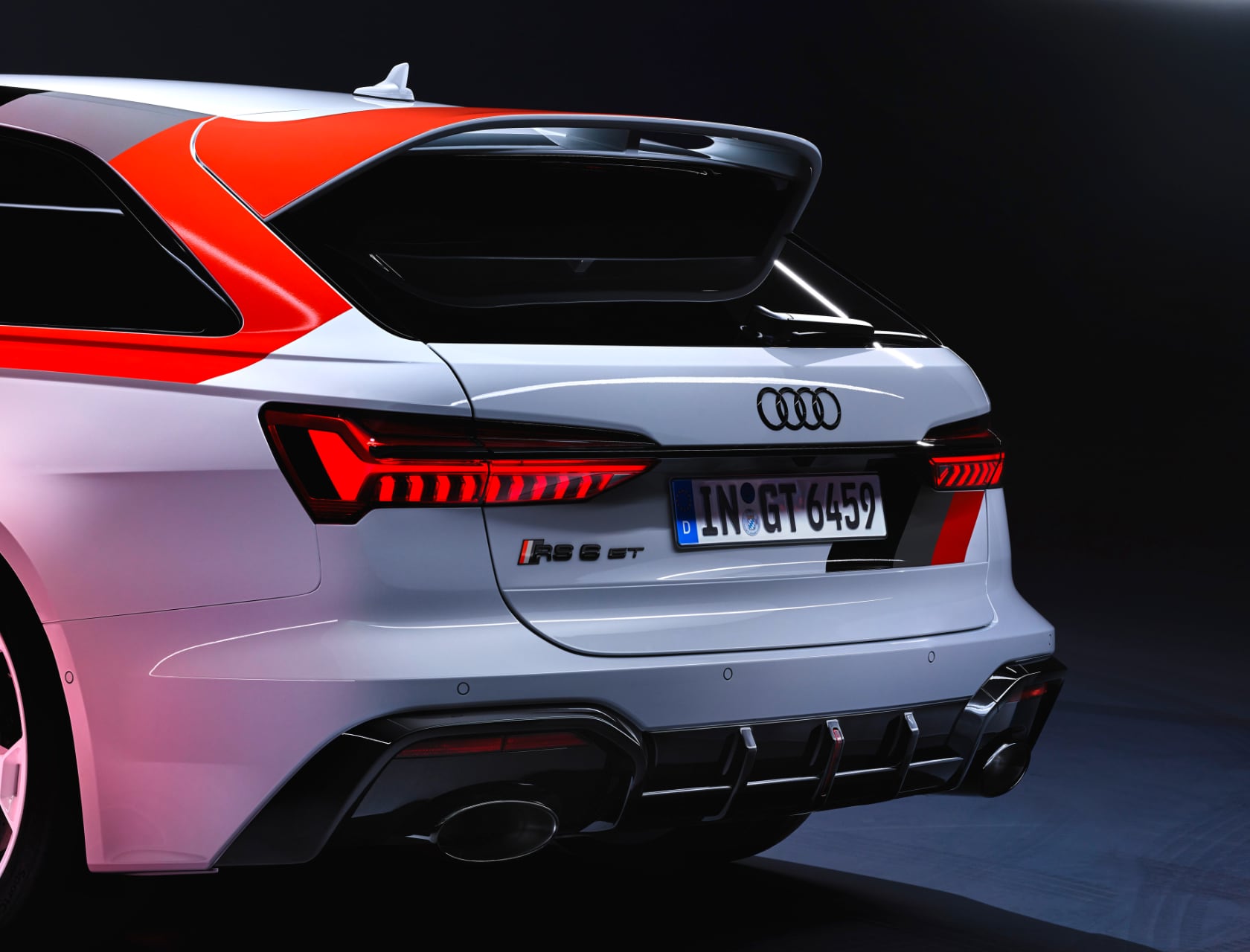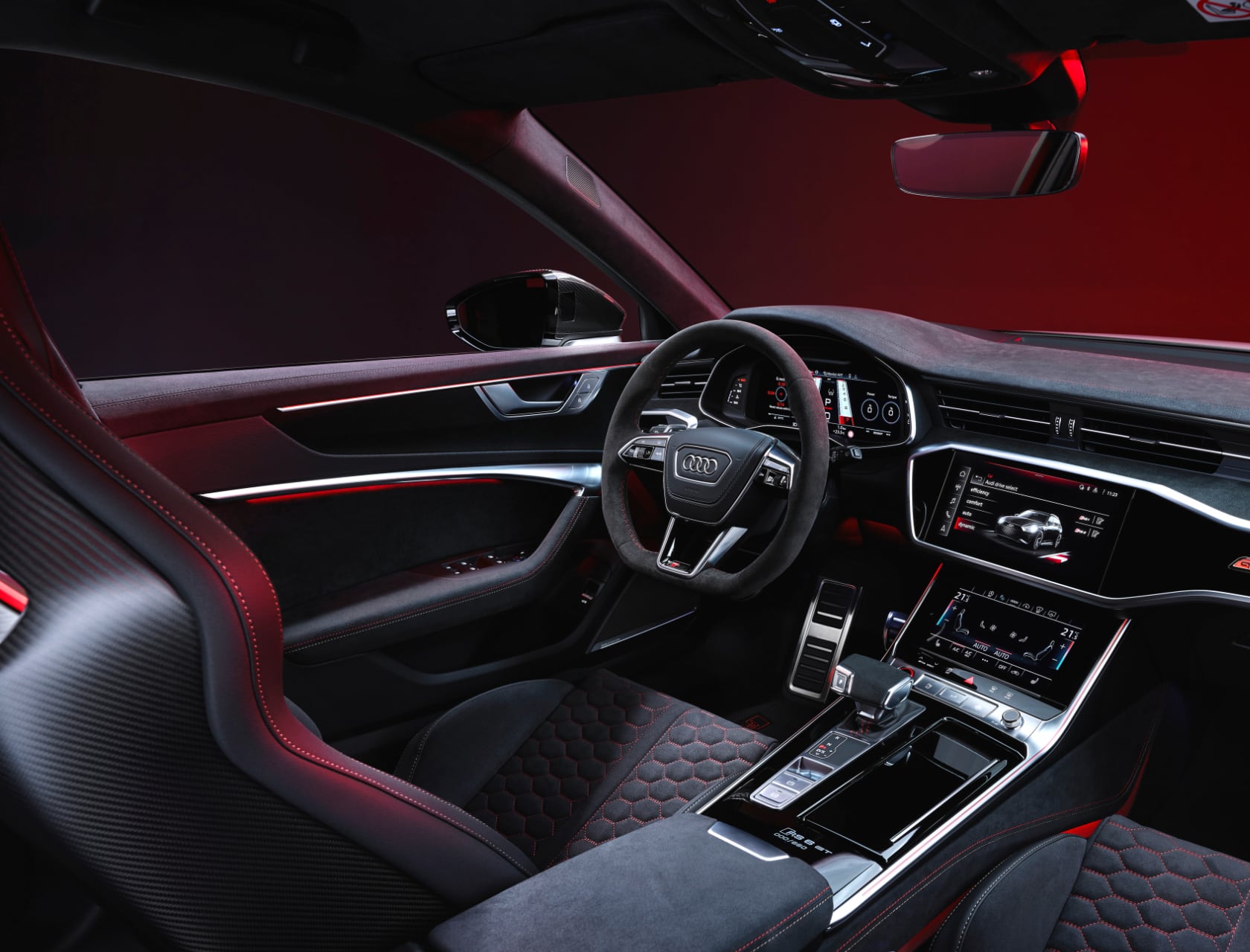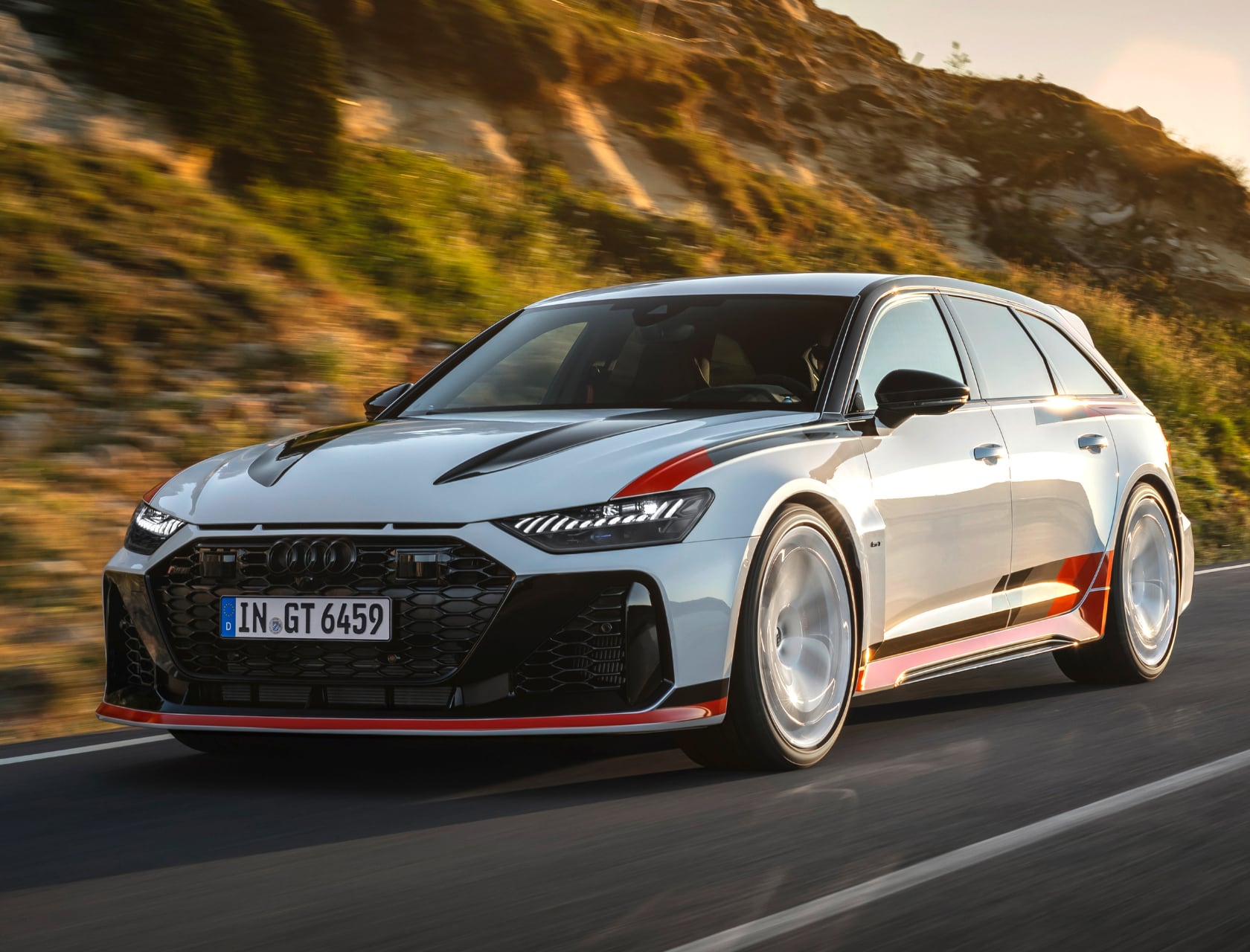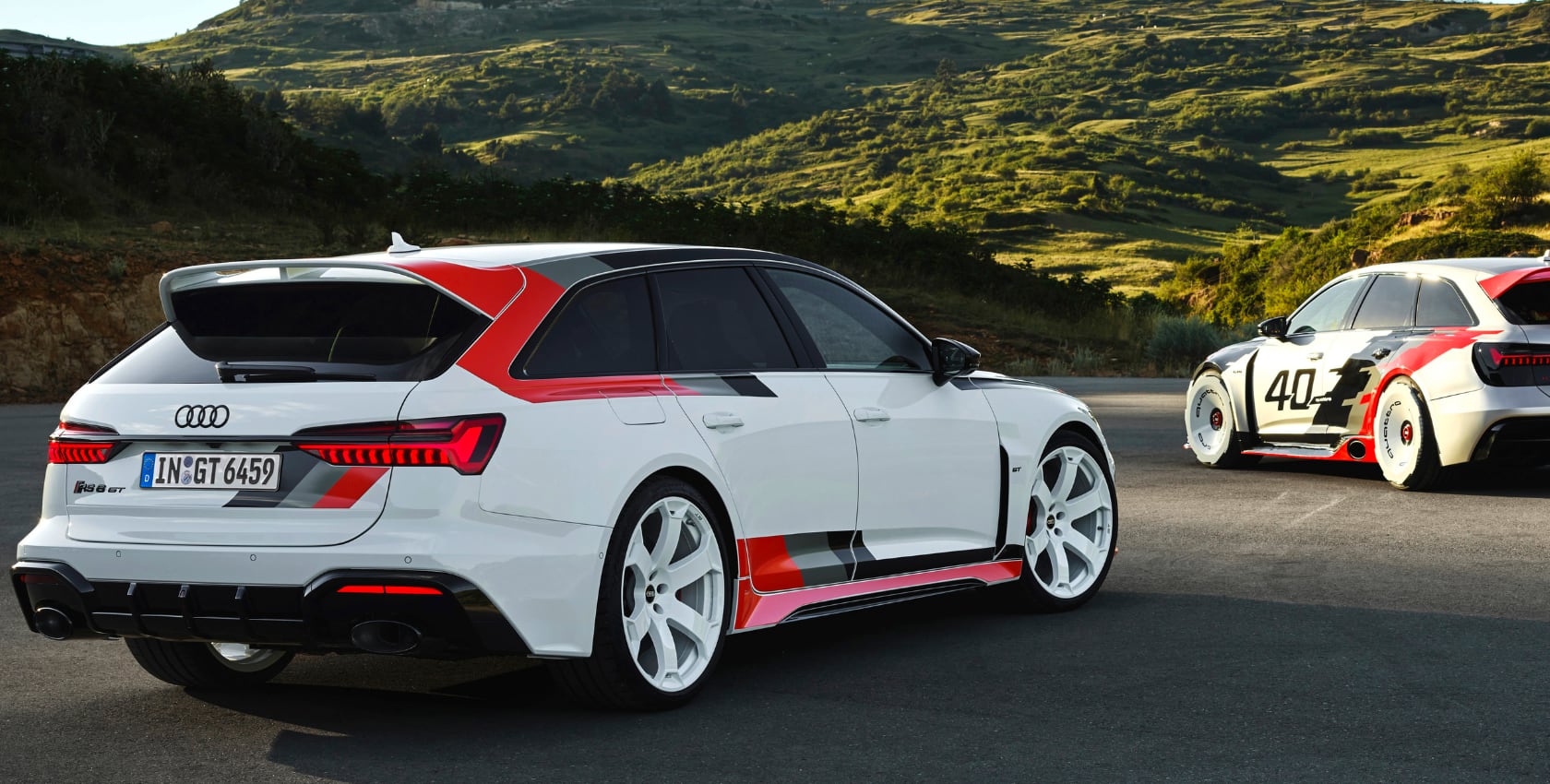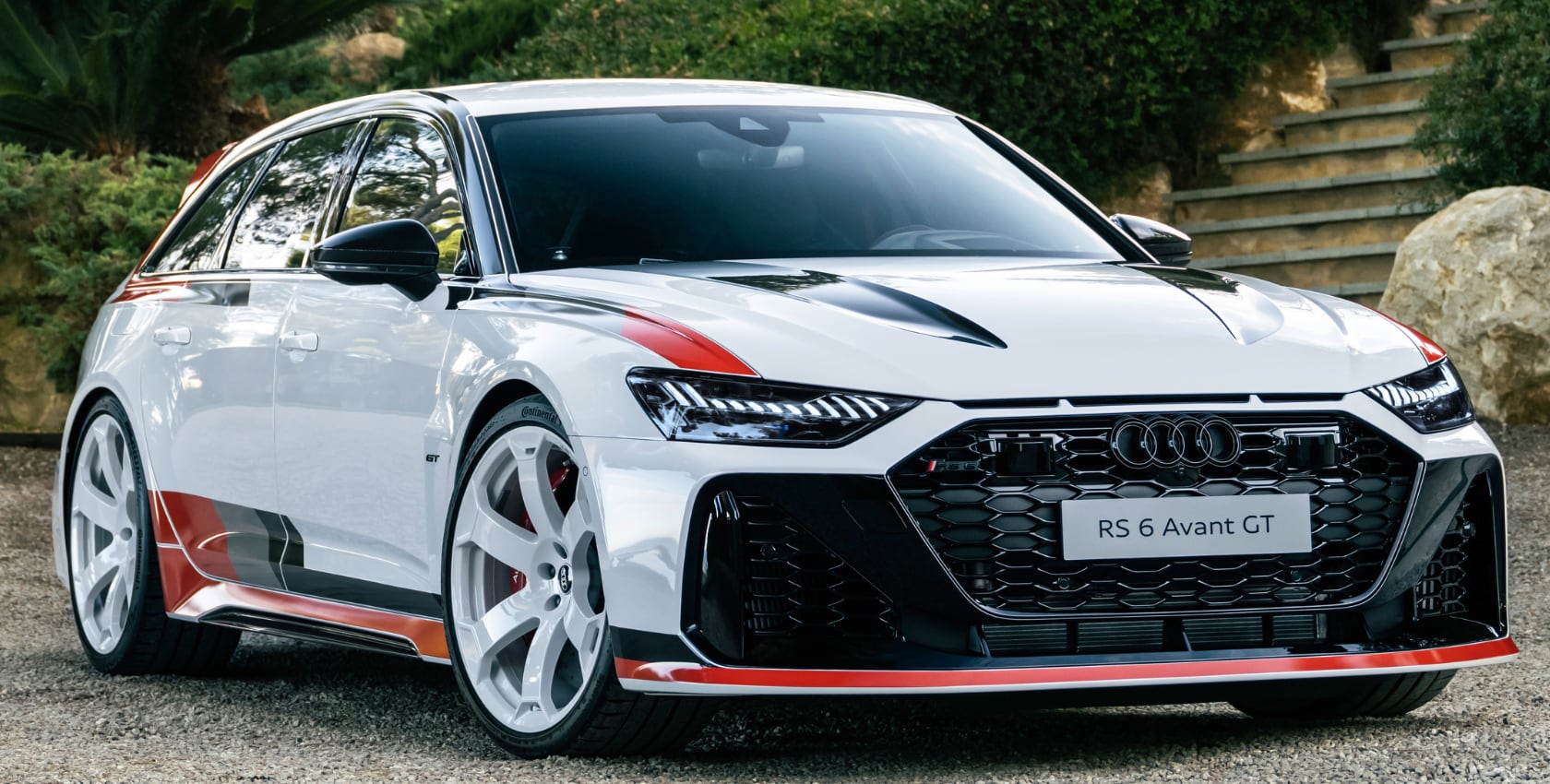
Massimo Frascella sits down across from me with the measured calm of someone who has learned to find clarity in chaos. It’s the eve of one of the most significant moments in Audi’s modern history. Tonight, the brand will reveal its Formula 1 entry to the world. Tomorrow, the automotive press will dissect every surface, every line, every strategic implication. But right now, in this moment, Frascella is fully present.
“We have so much going on and it’s a very exciting time,” he says when I ask if he’s still taking it all in. The understatement is characteristically Italian. There’s so much happening simultaneously at Audi under his creative direction that parsing it into a single narrative almost feels reductive. But when I push him on what the single point of focus is right now, his answer is immediate.
“Well, now the focus is on today. This is a major…” He pauses, catching himself mid-thought, recalibrating. “Tonight, right?”
I confirm: tonight. Hours from now, Audi will step onto one of the world’s biggest motorsport stages.
“Are you excited?”
“Absolutely, incredibly excited. This is a huge opportunity for us.”
The Third Act
I want to understand what this opportunity means to him, not just as Audi’s Chief Creative Officer, but as Massimo Frascella the designer, the artist, the person who chose this path.
“Well, for me personally, it’s part of the journey that I’m having at a personal level within the broader business,” he explains. “It’s like a third act after what we’ve been presenting in Milan and in Munich. So this is sort of a next act that expands. It broadens the whole business towards Formula 1, which is a huge, huge universe.”
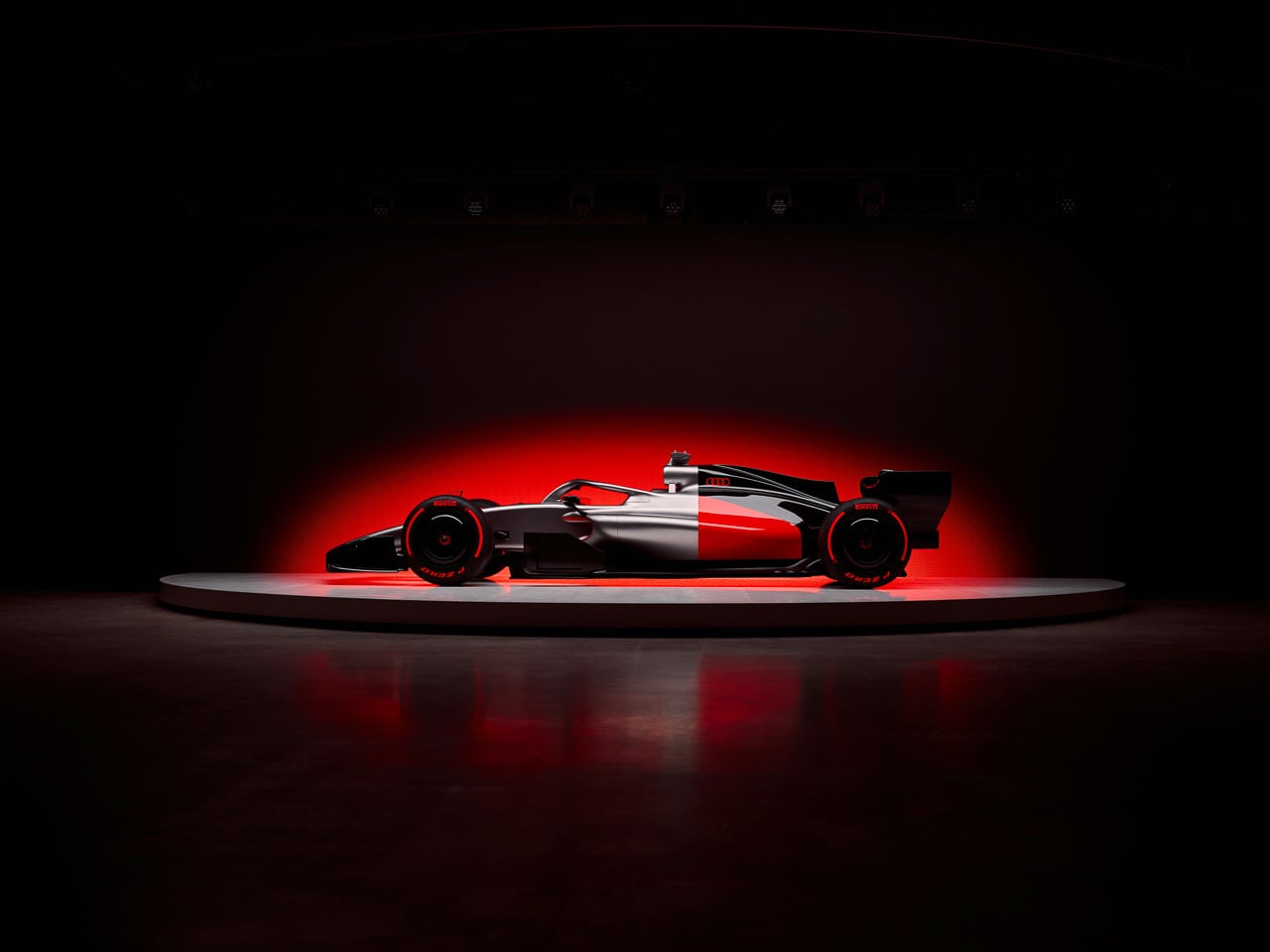
Photo: Audi
Tonight’s Formula 1 reveal isn’t just another product launch. It’s the third movement in a symphony that began when Frascella took the helm at Audi. Milan, then Munich, now this. Each building on the last, each expanding the narrative of what Audi can be under his creative direction.
The Designer Who Never Drew Cars
Our readers at Yanko Design are generally interested in designers, I tell him. We started off as a platform fostering new designers, helping them find their voice and audience. So I’m curious: if he could go back in time as himself, what were some of the things that sparked his interest to become who he is today?

His answer surprises me.
“This might come as a surprise. I’ve never really been into cars. I don’t consider myself a typical car guy.”
Wait. The head of design at Audi, one of the world’s most prestigious automotive brands, isn’t a car guy?
“But I’ve always been fascinated and always had interest in design in general, art. I used to do painting when I was a kid. Not drawing cars, by the way, which is probably what you will hear from most car designers. I used to do little sketches as a kid.”
But not Frascella. “Not for me. And it just happened very late in my youth, when I was like 17, 18, which is quite late. My dad had to buy a new car, which ended up being a quite, I don’t know if I can say, uninspiring car.”
“Uninspiring or inspiring?” I ask, trying to clarify.
“Uninspiring in the end, but you know, still a good job” – meaning well-made, just not exciting. “But I remember going around dealers with him and looking at brochures and looking at cars and that’s when I started to…”
He trails off, but I can see the memory forming, that moment when something clicked.
The Day That Changed Everything
There’s a question I need to ask, because I can sense where this is going. “Was there a period when you were interested in the TT?”
“There was a period, of course, and that was like literally it was a crossing between when I finished my transportation design studies and when I started my first job in Carrozzeria Bertone and that was a moment that really formed me because the TT when it came was so different and it really opened my mind, like, you know, okay.”
He’s building momentum now, getting to the core of something important.
“Car design, you know, you can be different. You know, there’s a different mindset of approaching design, where it’s a lot more disciplined in a way, but also very expressive. And TT had all of those elements together and really changed the way I saw car design as I was, you know, entering that world as a professional.”
“As I said, it was probably my first year,” he adds.
I press him further. Can he remember what was the one thing that was compelling about the TT that he can speak of? Fast forward to today, what was that singular element?
“What was compelling about that car, it was the… I like to describe it still today, an incredibly rational design. I always say the TT cannot be designed in any other way. You know, if you look at the car…”
“I like that,” I interject, because this is exactly the kind of design philosophy that resonates.
“You can look at the car and say, would I do this different? And in your mind you go through like, yeah, maybe this. And then you always end up, no. What’s on the car is right. So I always, I was really taken by this approach that the car had and that sort of perfection and rigor in the design, which is very rational. But as a result, it was incredibly compelling to me. I was really attracted by that and I was wondering how can something so rational…”
He doesn’t finish the thought, but he doesn’t need to. How can something so rational be so emotional? That’s the paradox, the tension, the magic.
Objects of Desire
“If you had to design a non-automotive object today, what would that be?”
He considers the question. “Inspiring or that I would love to design or work on. What would you prefer?”
“What would you prefer?” I replied.
“I would love to, and this is a goal of mine at one point in my life, to design… I’m a big fan of watches. That’s one thing that I’d love to design.”
Watches. Of course. The same precision engineering, the same marriage of form and function, the same obsession with every millimeter.
“We can dig into that, but that’s another time for another interview,” I suggest.
I shift to another question. “So what’s inspiring you right now?”
“Oh yes, I’m sorry. What’s inspiring me is… Clearly everything, every sort of design has a level of purity in the form and the execution, but if you were to ask me what is the… let’s say object or physical representation of these values that I’m talking about. I said this to the team when I first started, it’s the pyramids.”

“The pyramids,” I repeat.
“Because the pyramids, for me, they have an absolute perfect geometric form. They have an incredible character, they have an incredible presence. And they really stood the test of time, didn’t they? So there is a quality to those buildings that really covers everything that I think in design you should have.”
The Question of Perfection
Now I want to get into the Concept C, to draw that line back to the TT. “Getting into the Concept C, getting back to the TT, would you consider the Concept C as there’s no other way to design it? I sat in it today and it’s pretty darn perfect.”
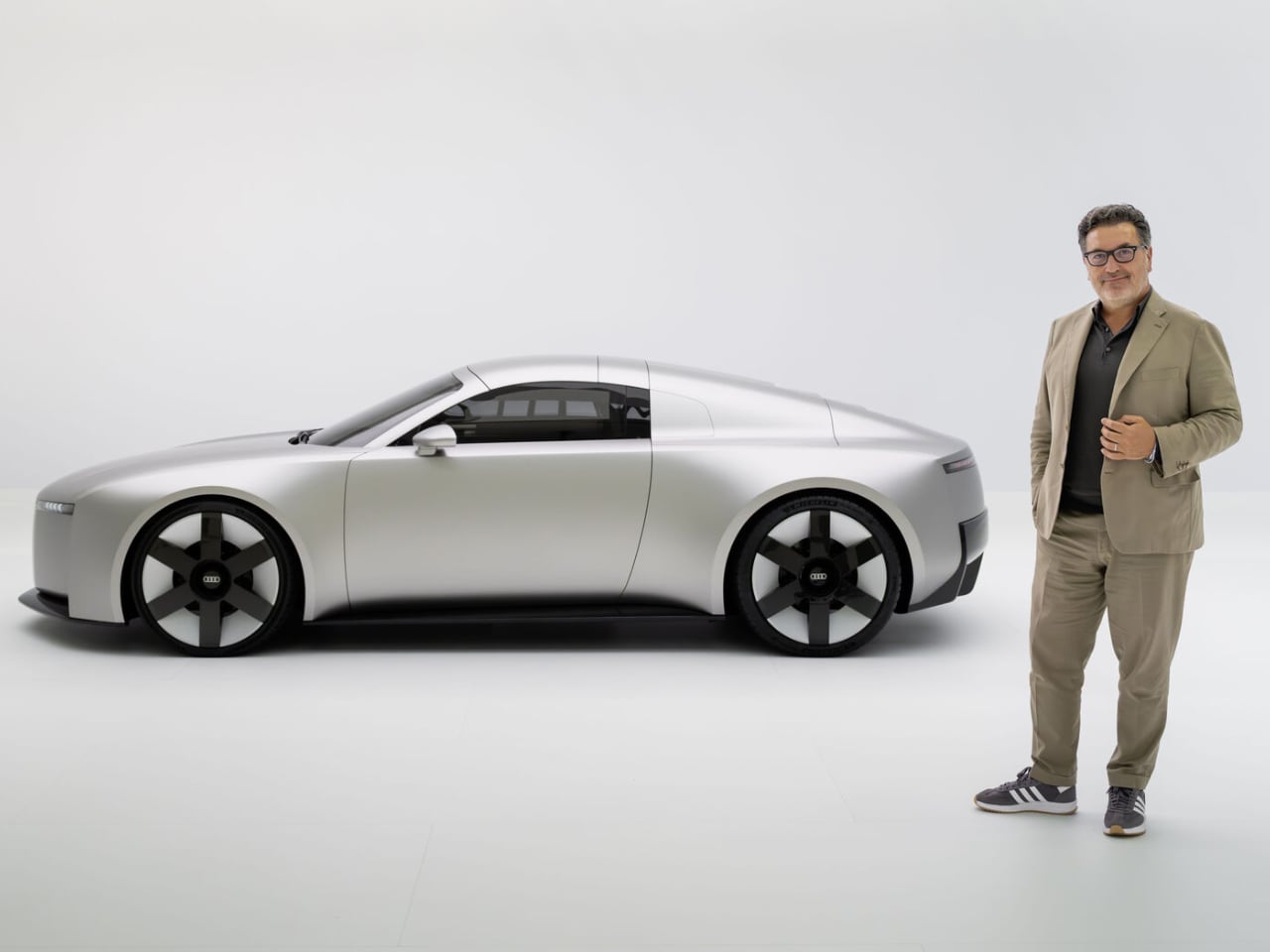
Photo: Audi
He’s thoughtful in his response. “You can always, when it’s easier, when you are… if you are evaluating or observing something that is not coming from you or you haven’t worked on, when you sort of evaluate things that you worked on. As a designer, you always find things that you would like to change. Not necessarily is the right thing to do, but you always question yourself. Just like if you ask that question to the people who worked on the TT, they would probably say, yeah, maybe we’ll change this and this.”
“And I’m saying, I wouldn’t change anything.”
The humility is striking. He can see perfection in the TT because he didn’t create it. But his own work?
“So on the Concept C, I have to say, things that I would change. Having said that, you know, there are moments that you think that you would do this slightly different, but it’s a thought that comes and goes. I think the more we’ve experienced the car, you know, out of the design studio as a static object, the more that we’ve seen it coming to life in different settings and moving. The more and more you feel like you cannot reach perfection, but there’s really not much that will change.”
I bring up Plato, because this conversation demands it. “To me that’s profound because I love studying philosophy and just reflecting on what Plato always says, there’s a perfect object in his world. Perfect chair, perfect table.”
Radical Next
This brings me to the big question. “Taking that to the next question, which is your Radical Next for Audi. Can you share any of that aspect with us, with our readers in terms of what we can expect? Because what I understand is anything that comes out from Audi should be very close to production or is ready for production. As a concept, when you see a concept it should be close to that.”
“It is, it is. That’s something that we’ve decided to do. You know, the Concept C is a great example of that. So it’s not only the first manifestation of the Radical Next, it is a design with a full principle, but it is also a very close preview of a vehicle that will come in the future.”
He continues: “What you can expect, to go back to your question, you can expect the translation of those values that you’re seeing on the Concept C and they are part of the Radical Next philosophy in every vehicle coming in the future, which it doesn’t mean that is literally the same design elements, but it’s the same approach.”
“You will have to deliver a different character, but they all have to follow the same guidelines, the same principles.”
Four Principles, No Exceptions
He’s mentioned principles twice now. Guidelines. The framework that will govern every Audi design decision going forward. But he hasn’t defined them yet. This feels important. If “Radical Next” is the philosophy reshaping Audi’s entire design language, I need to understand the mechanics. What are the actual pillars?
I ask him directly.
“Clarity and technicality, intelligence and emotion,” he says without hesitation.
“Are there any priorities within those four principles? Like if you had to subtract one based on time, quality, design, whatever, are they all equal?”
His answer is immediate and definitive. “They have to be there.”
“They have to be there, and then you can possibly dial some of them more than others, but they all have to be present, they all have to be there. So when we talk about clarity and technicality, intelligence and emotion, there is not a priority. You can possibly think of this as a journey through the values, where it starts with clarity and it ends with emotion. So there is logic in the flow of these four principles, but they all have to be there.”
“When we talk about clarity and technicality, intelligence and emotion, there is not a priority. You can possibly think of this as a journey through the values, where it starts with clarity and it ends with emotion. But they all have to be there.”
“Take the Formula 1 car, for example. The emotional side is dialed up because that’s the most visceral aspect of motorsport. But you’ll still see all four principles present: the clarity, the technicality, the intelligence, and the emotion. They’re in everything we do.”
He pauses, then adds something crucial: “And this doesn’t apply only to products. It goes beyond that.”
The Red Thread
I need to understand something practical. “What would be the one element that crosses between the Concept C and what we’re seeing tonight from your perspective.”
“That is exactly what I just said, the four principles.”
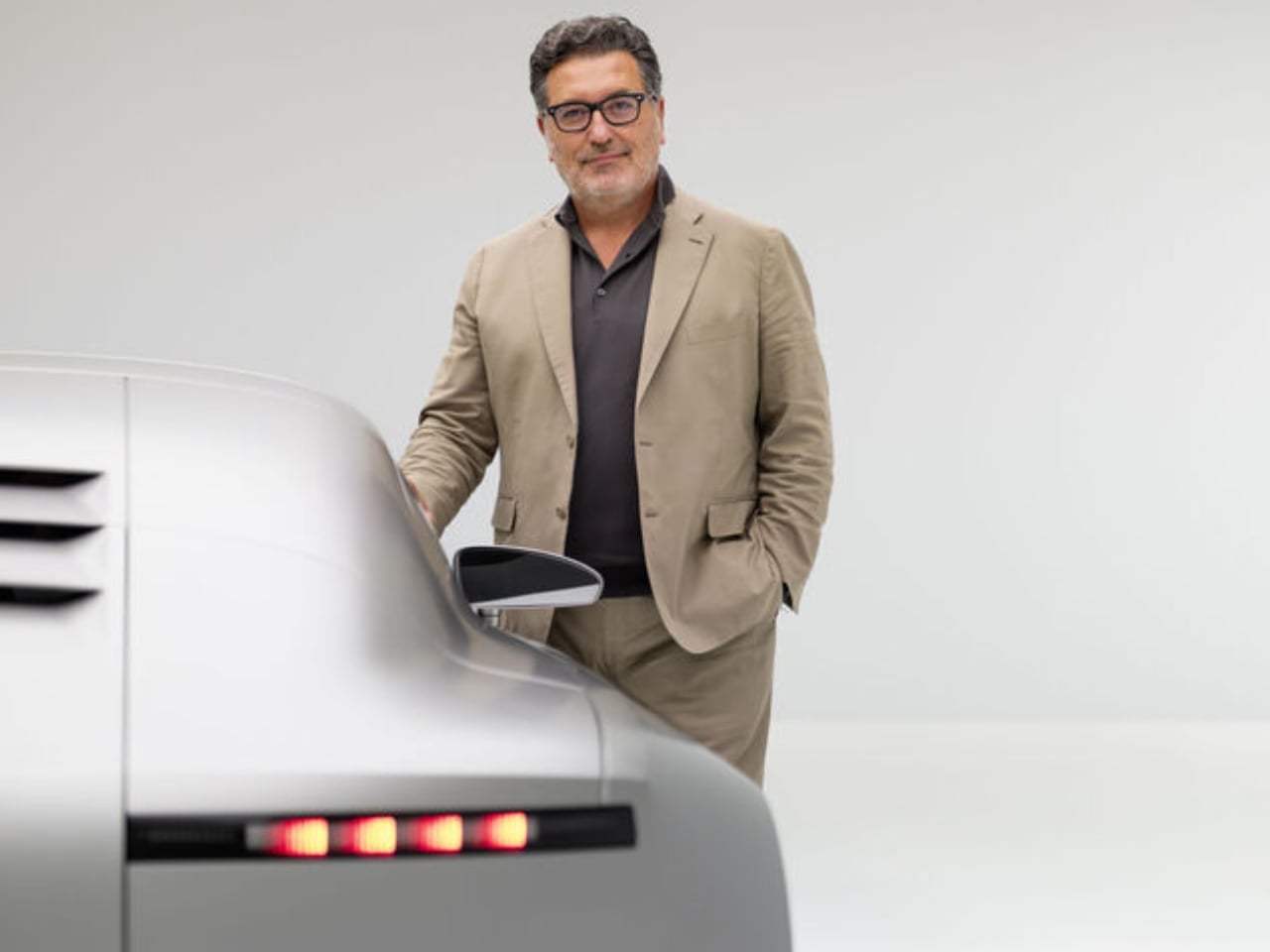
Photo: Audi
But I need to get more specific. “Physically, like if I had to physically explain it to our readers.”
“Well, one car is clearly a very different object.”
“Right. But if readers saw the Concept C and the Formula 1 side by side, what visual DNA would connect them?”
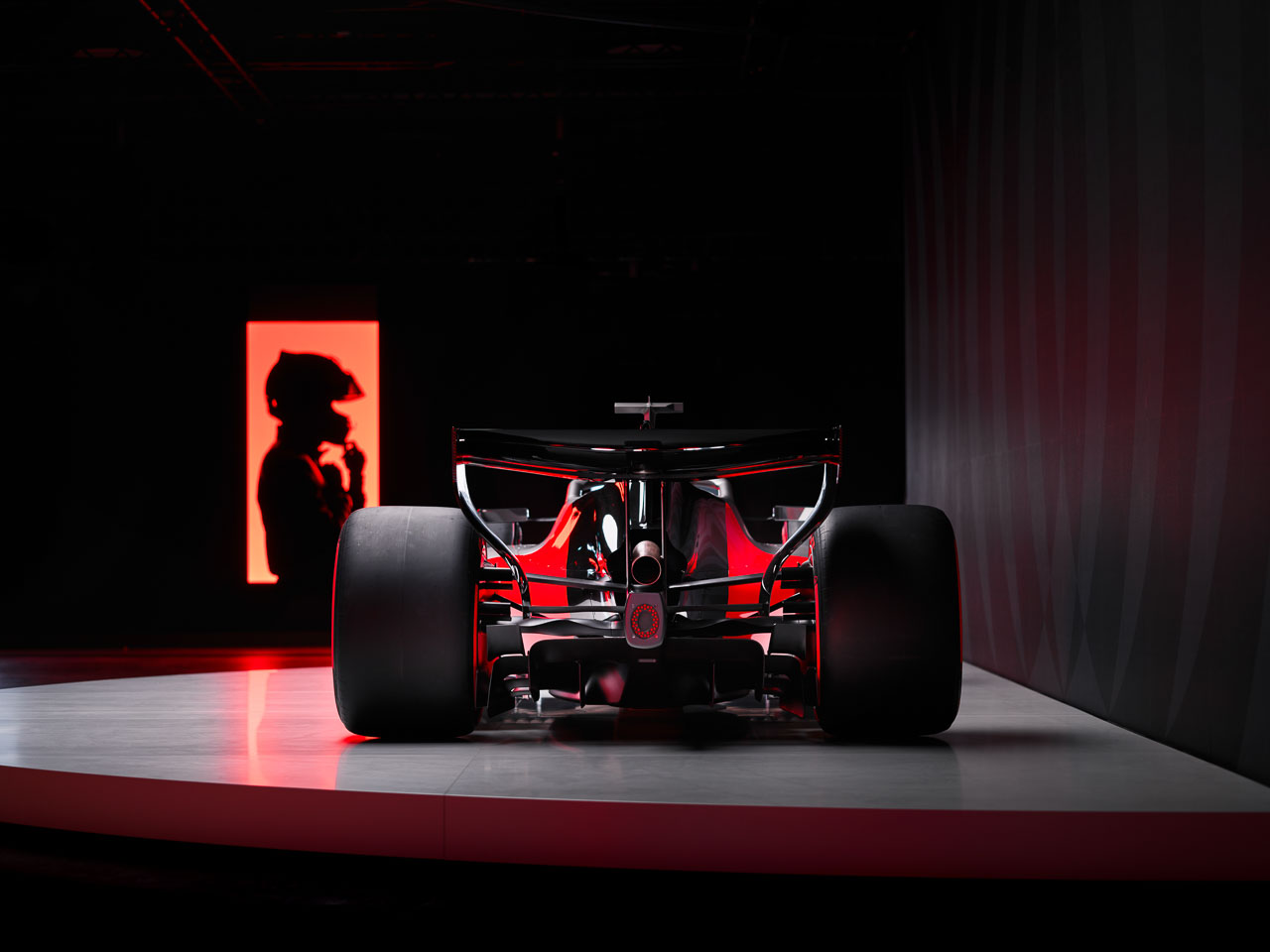
Photo: Audi
“Yeah, the red thread there is what makes them part of the same approach and the same philosophy is clearly the influence on the form of Formula 1 is very limited, if none. It’s very tight in spec, in the design. So the way we link to Audi philosophy is with this level of geometry, geometric approach and very clear, very clear definition of the character of the vehicle.”
“And then having the subtleties of the textures and the technicality in the finish, the exposed materials like the carbon fiber, and then of course, you know, the red that is taking a much higher degree of strength and power to elevate the emotional aspect.”
“So, again, all the four principles that are applied in their own way to the Formula One.”
The Tactile Future
Moving to the technical side, I want to explore the interior experience. “Going back to Audi’s vision developing, this is for our technical readers. The interiors are increasingly becoming more digital, and as I sat in the Concept C today, keeping everything minimal, but still very intuitive. Would you say what I experienced with the steering wheel will translate to a production model?”
I elaborate: “On the Concept C, all the dials, the buttons, it’s got a lot of characteristics of watches. It reminds me so much of the tactile experience.”
“Yeah, the answer is absolutely yes. The answer is absolutely yes, because that’s part of, it’s a big part of our approach to delivering the right experience once you sit in the car, once you drive the car, once you experience the environment and the interface with the car. So what we showed with the Concept C is clearly a preview of what we are aiming to deliver on the production.”
“And I would say this is not just for the Concept C, but applies to all Audis going forward.”
Technology in Service of Experience
“Audi has always been at the forefront of automotive technology, from the Virtual Cockpit onward. As you shape the future, what comes first: technology or design? Or do they inform each other equally?”
“They both work together, and this gives me also the opportunity to talk about giving form to a function as well. So there is an aesthetic side of design, but it’s also a more functional side to design, so it’s much broader than that. Technology is massively important for Audi, but it’s also important to use technology in the right way because the risk is that you want to display technology just for the sake of it, just to show that you are technological in a way. And I think that provides no benefit. The idea is to use technology to enhance the experience, or develop technology with a specific goal in mind: to deliver a proper Audi experience for the customer.”
Sustainability Without the Sermon
“How about sustainability, what does that mean to you? Everyone is talking about sustainability, but to you, what exactly does that mean as it pertains to Audi?”
“Sustainability still is a word that is mentioned a lot.”
“It was mentioned a lot maybe in last few years, today you almost don’t even have to talk about sustainability.”
“So you’re saying it’s sort of part of the DNA.”
“It has to be embedded in everything you do, you know. Sustainability goes from, you know, the use of materials, the method of making, the circularity of… It’s much broader, but I feel like when you hear talking specifically about sustainability, it’s a bit of a forced concept, because today you just cannot operate without having sustainability at the heart of what you do.”
Material Innovation
“How about material choices? What are your favorite material choices? I know it’s a broad question, but personally…”
“It’s a question that I really like because I am a huge supporter of innovative materials and bringing a perception of sustainable material or alternative materials like interior furniture, for instance, is something that will happen also in automotive. I think the Concept C is again a great example of that, how we have managed to deliver a very fresh, modern and very premium execution of what is a two-seater sports car without using traditional material.”
The Concept C proves you can deliver luxury without leather, premium without the old signifiers of expensive. It’s luxury redefined through intelligence and innovation.
Rapid Fire
“We have a few minutes left. I have some rapid-fire questions for you. Just off the top of your mind. Sketchbook or iPad?”
“Both, but a sketchbook for me mostly.”
“Pen or pencil?”
“Pen.”
“Really? No room for mistakes?”
“No.”
“What size pen do you use?”
“Just a Bic.”
“Really?”
“Sometimes I try fancy pens, but I go back to the old ones.”
The man leading design for one of the world’s most prestigious automotive brands sketches his ideas with a disposable pen. It’s perfect. It’s exactly right.
“I think I know the answer to this, but I’m just going to ask it for the record. Minimalism or maximalism?”
“Minimalism, but you’ve got to be careful. Minimalism doesn’t appear to be stripped down. That’s important. It’s reductive but not necessarily minimal because minimal can be associated with basic.”
“Excellent.”
Inspiration and the Grid
I ask about his favorite city for creative inspiration. He’s traveled the world throughout his career, from Italy to England, California to Munich. What place fuels his creativity most?
“Does it have to be a city?” he asks.
“It can be anywhere. Any places that inspire you.”
“Right, so I would say city-wise, I find New York very inspirational.”
“Is it because of all the lights and all the movement?” I ask, trying to understand what draws him there.
“I find a mix of heritage and modern. I find it’s easy. It has a lot, but it’s very simple to navigate and move around as well. There’s a logic to New York.”
“Yeah, yeah, yeah. I get it. You’re on an island. There’s nowhere to go. There’s a grid.”
“There’s a grid.”
The grid. Of course. For a designer who values clarity and rational design, Manhattan’s relentless geometry must feel like vindication in urban form. You can find any address just by understanding the system. Twenty-sixth street crosses every avenue. The logic is inescapable.
But then he pivots to something deeper.
“But inspirational, I mean, for me, inspirational, and this is an answer that I give all the time, inspiration is never voluntary, it’s never deliberate. It’s absorbing what you see, particularly when you’re traveling, but every day, and then inevitably, you know, you bring it back out in what you do without even knowing it.”
“Inspiration is never voluntary, it’s never deliberate. It’s absorbing what you see, particularly when you’re traveling, but every day, and then inevitably you bring it back out in what you do without even knowing it.”
“It’s not like, oh, I’ve seen this. Let me try and do something inspired by that. No, for me it doesn’t work that way.”
“But sometimes, you know, often what you do is connected to something that you’ve experienced. So that’s the inspiration, but it’s never an immediate connection.”
The Door Opens
“So the last question I have is collaboration. If you were to, say, wake up one day, now that you have direct connection to the CEO, you could say, hey, let’s do a brand collaboration with X, Y, and Z. I think this is going to be great. What would that brand be? It can be a watch brand too, wink-wink.”
He smiles. “I’m not going to say a brand, but I would say all the progressive brands that you see out there that like to take risks.”
“That’s an awesome answer, because that just opens the door to so many different things.”
And that’s exactly right. Frascella isn’t naming names because he’s not limiting possibilities. Progressive brands. Brands that push boundaries. Brands that understand that the future isn’t about doing things the way they’ve always been done.
What This Means
There’s something quietly radical about Massimo Frascella’s approach to leading one of the world’s most iconic automotive brands. He didn’t arrive at Audi with a portfolio of concept cars or a reputation for dramatic reinvention. Instead, he came with something more fundamental: a belief that rationality and emotion aren’t opposing forces but essential partners in great design.

That belief was forged in 1998, during his first year at Carrozzeria Bertone, when he encountered the original Audi TT. The car proved that disciplined, rational design could create profound emotional impact. Now, as Chief Creative Officer reporting directly to the CEO, Frascella is scaling that lesson across an entire premium brand at the most disruptive moment in automotive history.
What makes his “Radical Next” philosophy compelling isn’t just the four principles themselves (clarity, technicality, intelligence, emotion), but the insistence that all four must always be present. You can’t subtract one to save time or simplify production. You can dial them up or down depending on context, but absence isn’t an option. It’s a discipline that extends beyond product design into every touchpoint: showrooms, marketing, customer service, brand experience. This isn’t cosmetic. It’s structural.
The proof is in the commitment. Under Frascella’s leadership, Audi only unveils concept cars that preview actual production models. The Concept C, revealed in late 2025 and arriving in showrooms in 2027, represents this new contract between brand and customer: what you see is what you’ll get. No fantasy. No bait and switch. Just honest design intent made real.
Even the Formula 1 reveal tonight follows this logic. The F1 car can’t share surface language with the Concept C (regulations prevent that), but it shares the geometric rigor, the technical precision, the material honesty. Same principles, different canvas. It’s how you build a coherent design language across radically different applications.
Perhaps most telling is how Frascella talks about inspiration. Not as something you hunt for on mood boards or Pinterest, but as osmosis. The pyramids he studied. The TT that changed his trajectory. The Manhattan grid. They’re absorbed unconsciously and emerge transformed in his work. It’s the creative process stripped of mystique and ego, revealed as patient observation and disciplined synthesis.
This is why he sketches with a Bic pen instead of expensive tools. Why he defines luxury through innovative materials rather than traditional signifiers like leather. Why he insists technology must serve experience rather than showcase itself. These aren’t affectations. They’re evidence of a design philosophy built on substance over spectacle, function over flourish, clarity over complication.
And when asked about future brand collaborations, he doesn’t limit possibilities by naming names. He simply says “all the progressive brands that like to take risks.” It’s the perfect answer, because it’s not about him or Audi making choices for others. It’s about opening doors and seeing who walks through.
In an industry obsessed with disruption for its own sake, Frascella is proving that the most radical act might be returning to fundamentals. The TT showed that rational design could be deeply emotional. Under his leadership, Audi is proving it can be done again, at scale, across an entire premium brand. That’s not just good design. That’s cultural leadership.
The post The Radical Simplicity of Massimo Frascella: Inside the Mind of Audi’s New Design Chief first appeared on Yanko Design.
